

Engineering, Construction & Maintenance www.utilitymagazine.com.au Issue #27, August 2020
HIGHLIGHT
NEED
WATER SECURITY
CLIMATE CHANGE TREASURE: ACCELERATING AUSTRALIA’S BIO ECONOMY TRASH TO SOUTH AUSTRALIA SPEARHEADS SMART GRID TECHNOLOGY WATER SEWER ELECTRICITY GAS
CLEAN AND GREEN:
THE
FOR
COVID-19 AND
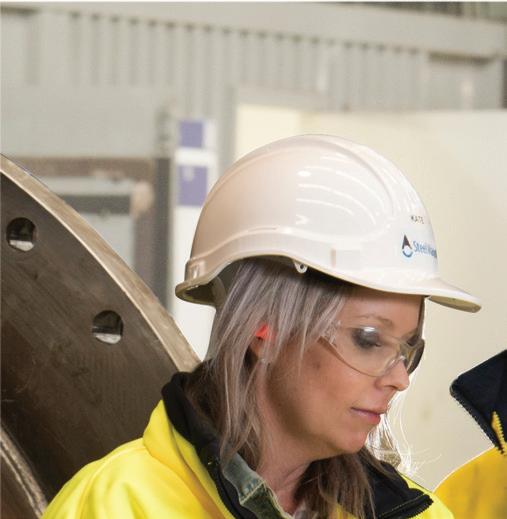
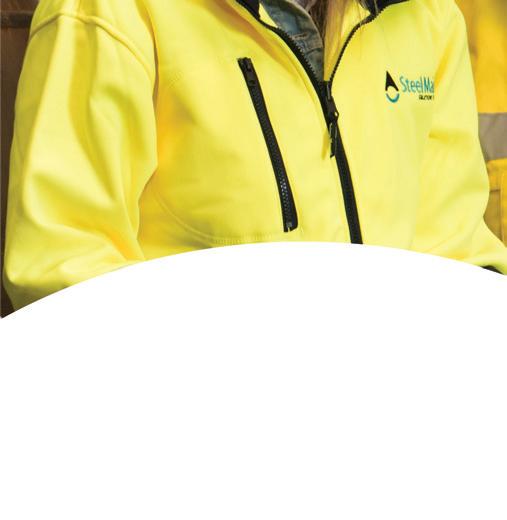
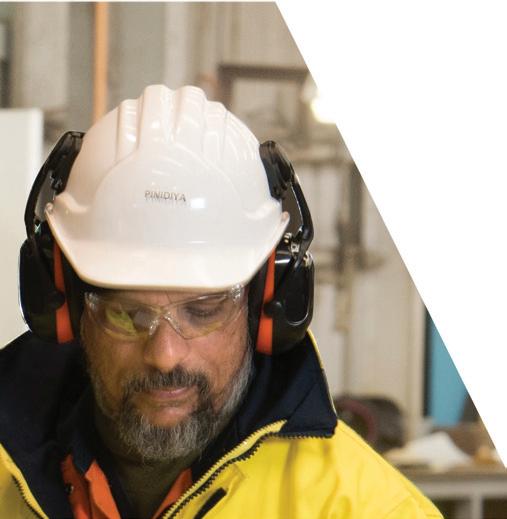
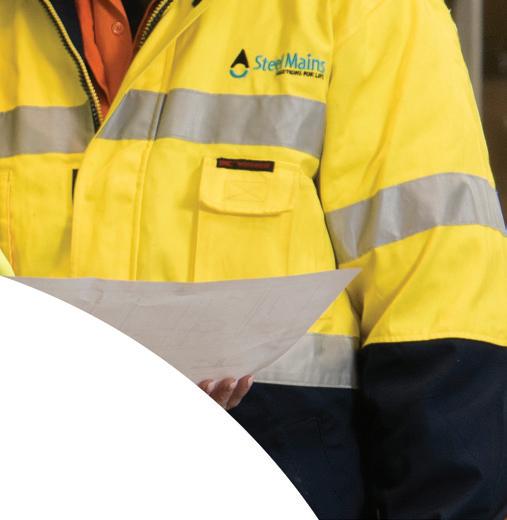




PROVIDING SECUIRTYPROVIDING SECURITY
Steel Mains is proud to be Australia’s largest manufacturer of Mild Steel pipes for the water industry. We continue to manufacture Sintakote® Steel pipe with manufacturing facilities located in both Victoria and Western Australia. Materials and labour required to manufacture our pipes are sourced locally, ensuring our pipes enjoy greater than 98% local content.
Local stock, delivery and design & installation support mean that Steel Mains is able to reduce all your pipeline supply risks. Local manufacture and product Standardsmark certification provide you with that additional supply security, with all aspects of our manufacturing meeting Australian quality standards. When the lifespan and security of your asset are important to you, Steel Mains Sintakote pipeline systems are your ideal choice for your next pipeline project.

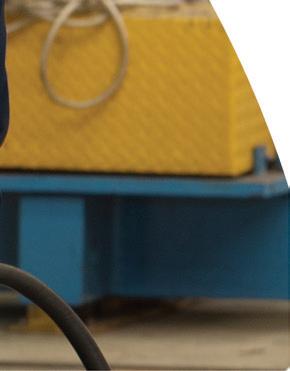




At the time of writing this, it’s still unclear when a post COVID-19 Australia will emerge and what that new era will look like. Regardless of how long the virus remains with us, the focus for utilities is unchanging – keeping the lights on, the gas flowing and the water running.
While COVID-19 has exposed the fragility of our globalised systems and the devastating impacts when these systems start to unravel, it has forced us to evaluate where we need to build greater resilience to prevent and preempt future shocks.
The provision of safe water, sanitation and hygienic conditions is essential to protecting human health during all infectious disease outbreaks, including the COVID-19 pandemic.
The Water Services Association of Australia shared an article on integrated water management by Poppy Johnston, which highlights the need to seriously start considering our long-term water security options before the next drought hits and urban sewers reach capacity.
This includes major water recycling, stormwater harvesting and other clever approaches such as designing landscapes to direct water where it’s most needed rather than down street gutters and out to sea. Examples of such clever approaches are littered throughout this edition of Utility Seqwater, the Queensland Government Bulk Water Supply Authority, operates in a challenging and changing environment. Since the Millennium Drought, SEQ has experienced two large floods and a lengthy drought, and Queensland’s climate is expected to become increasingly variable. Seqwater’s extensive capital works and asset maintenance programs play a critical role in safeguarding water sources. The utility maintains and improves $12 billion of traditional and climate-resilient water supply assets, enabling it to deliver approximately 280,000 million litres of safe drinking water a year for communities across SEQ.
The general consensus among the science community is that greenhouse gas emissions must be decreased to prevent climate change – and, in turn, protect threatened water sources. As part of our feature on waste management, Shahana McKenzie, CEO of Bioenergy Australia, talks about how effective utilisation of organic
waste to produce energy can play a central role in the national transition to a circular, low-carbon economy.
As the peak body representing Australia's bioenergy sector, Bioenergy Australia is working hard to increase awareness of bioenergy as a sustainable energy solution and an essential component in reaching carbon neutrality by 2050.
In June 2020, the South Australian Government and the Australian Energy Market Operator released a report detailing the state’s plan to reach 100 per cent renewable energy generation. With the continued uptake of rooftop solar photovoltaic, and more recently home battery systems, South Australia is leading the way in the distributed energy transition.
SA Power Networks has been trialling a novel approach to increasing network hosting capacity, with the objective of allowing the system to operate securely whilst maximising the ability of Distributed Energy Resources to provide energy to the grid. You can read more about the electricity distributor’s advanced virtual power plant integration project as part of our feature on smart grids.
It remains a tumultuous time to say the least, but it’s inspiring to see the utility industry overcoming the challenges posed by COVID-19, and continuing to work on a range of innovative projects and initiatives to improve the security and delivery of the essential services that Australians everywhere rely on.
Here at Utility, we’ve been busy adapting to the realities of this brave new world, transforming our popular live events into topical virtual conferences, as people look for digital ways to communicate, connect and find out what is happening in their industry.
Our Digital Home Virtual Conference on 30 July will explore the new opportunities the growing smart home market presents for utilities, while Critical Infrastructure will feature a series of events across the whole month of September, with a focus on how the sector will navigate its way out of COVID-19 into new challenges.
If you’ve got a project or story you’d like us to feature in the magazine, or you’d like to find out more about our upcoming virtual conferences, please don’t hesitate to get in touch at charlotte.pordage@monkeymedia. net.au.
UTILITY • AUGUST 2020 Published by Cover image highlights our feature on water operations and treatment, and the importance of clean, safe water. Engineering, Construction & Maintenance CLEAN AND GREEN: HIGHLIGHT THE NEED FOR WATER SECURITY COVID-19 AND CLIMATE CHANGE TREASURE: ACCELERATING AUSTRALIA’S BIO ECONOMY TRASH TO SOUTH AUSTRALIA SPEARHEADS SMART GRID TECHNOLOGY Editor Charlotte Pordage Marketing Associate Radhika Sud Journalist Eliza Booth Designer Manager Alejandro Molano Designer Jacqueline Buckmaster Business Development Manager Rima Munafo Publisher Chris Bland Managing Editor Laura Harvey Monkey Media Enterprises ABN: 36 426 734 954 204/23–25 Gipps St Collingwood VIC 3066 P: (03) 9988 4950 monkeymedia.com.au info@monkeymedia.com.au utilitymagazine.com.au info@utilitymagazine.com.au ISSN: 2203-2797 7,735 This publication has been independently audited under the AMAA’s CAB Total Distribution Audit. Audit Period: 1 April to 30 September 2019 welcome August 2020
FROM THE EDITOR
Charlotte Pordage Editor ISSUE 27 1


STORMWATER
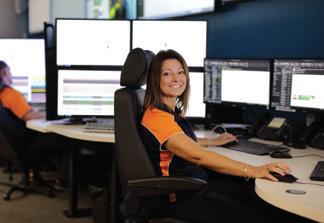


2
City West Water leads the way in stormwater harvesting 42 City West Water is leading the way in developing and implementing innovative stormwater harvesting projects supporting healthy, green spaces across Melbourne’s western suburbs and lessening the demand on the city’s precious drinking water. WIOA operators of the year ....... 18 WIOA – a lot going on when not much is going on ........................ 22 Proven treatment technology delivers reduced costs and operational efficiencies .............. 26 Ensuring a climate-resilient water supply for South East Queensland's future ................... 28 The industry cadetship putting people first 34 The art of pump reliability: seal solutions for longevity and easy installation 36 ‘Shovel ready’ essential services make headway during COVID-19 38 I o T AND SCADA SCADA integration project delivers improved asset visibility 62 Work apart, together with Moxa .................... 66 As most companies and industries in Australia are transitioning to a remote workforce and many more splitting working weeks between being on-site and remote, some industries are facing unique challenges because of social distancing measures. These challenges are likely to continue to occur well into the future, therefore making it important to act now and address challenges due to social distancing and working remotely.
For increased efficiency, deep learning is the future 68 Durable and efficient: Barangaroo’s pipe penetration solution 70 Revolutionising asset management through a smarter water network 72
PIPELINES Blue Energy spearheads pre-feasibility study for new gas pipeline 76 Pioneering pipeline coating products arrive Down Under 78 76 62 WATER OPERATIONS AND TREATMENT 42 18 68 UTILITY • AUGUST 2020 WWW.UTILITYMAGAZINE.COM.AU
CONTENTS
ASSET MANAGEMENT
GAS
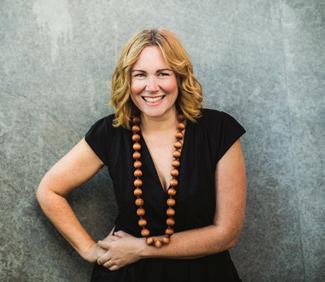
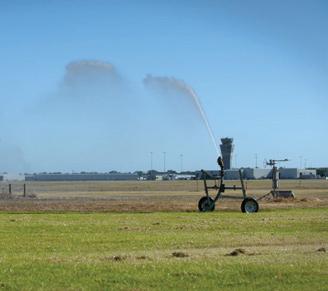

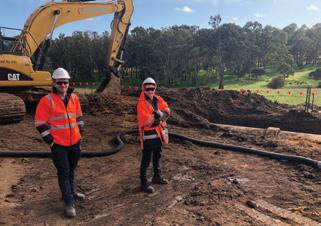
August 2020 ISSUE 27 3 TRENCHLESS TECHNOLOGY What to look for in a mid-range professional locator 80 Trenchless technology assists major pipeline upgrade .............. 82 Making a lasting impact underground 84 Australian-first innovation delivers unique repair solution for Hunter Water 86 Speed, power and silence: directional drills with a difference 88 58 50 In each issue Welcome from the Editor ........................................................ 1 A word from Energy Networks Australia ............................. 4 A word from WSAA ................................................................. 6 News briefs .............................................................................. 8 Advertisers’ index ................................................................. 92 Editorial schedule ................................................................. 92 Bioenergy: the missing piece in the energy puzzle.................... 46 Bioenergy is energy derived from plants, animals, and their by-products and residues. It is the only renewable source that can replace fossil fuels in all energy markets – in the production of heat, electricity and fuels for transport. As the peak body representing Australia's bioenergy sector, Bioenergy Australia is working hard to increase awareness of bioenergy as a sustainable energy solution and an essential component in reaching carbon neutrality by 2050. Chemical dosing to target Plumatella ..................................... 50 Smart use of water cultivating cooler, greener cities .................... 52 Electrofusion weld failures can be avoided using the right equipment ............................ 56 The future network: demonstrating advanced integration of distributed energy resources 58 80 46 90 UTILITY • AUGUST 2020 WWW.UTILITYMAGAZINE.COM.AU WASTE MANAGEMENT IRRIGATION SMART GRIDS
A WORD FROM ENERGY NETWORKS AUSTRALIA
WHY BRITAIN IS PAYING GENERATORS TO SWITCH OFF
By Hannah Farrow, Project Officer, Energy Networks Australia
Since February 2020, electricity demand from the grid in Great Britain (GB) has seen a significant decrease following the introduction of social distancing measures and then a full lockdown in response to the COVID-19 pandemic1
The average demand decrease for a weekday in March was about 13 per cent, while weekends were eleven per cent lower than the new weekday amount. Figure 1 shows demand during March over past decades.
Demand is at similar levels to the early 1980s and is likely to drop even further as the region heads into summer2
Holiday periods and warmer weather have already contributed to reductions in demand from the grid of up to 20 per cent3
Grid demand will also be impacted as solar energy generation increases in response to the approaching summer. Figure 2 demonstrates the effect of solar penetration on the grid in 2019.
These energy trends, from COVID-19 and seasonal impacts, have coincided with lower wholesale energy prices4 and a longer-term plan to decarbonise GB’s national grid5
Under these conditions coal power stations have not run for two months,
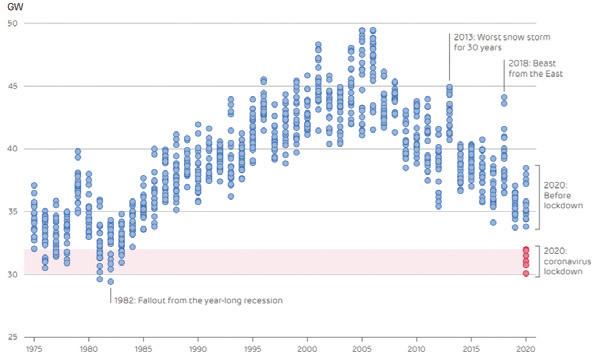
1: DAILY AVERAGE ELECTRICITY DEMAND IN GREAT BRITAIN ACROSS ALL WORKING DAYS IN MARCH1
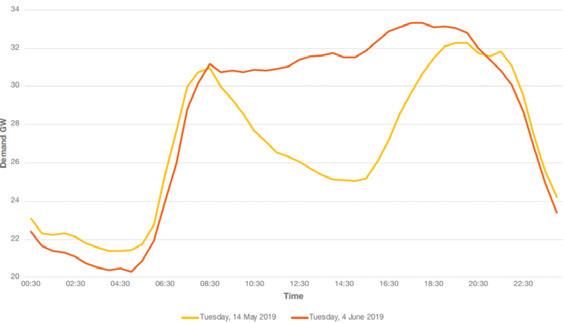
2: IMPACT OF EMBEDDED SOLAR GENERATION ON TRANSMISSION SYSTEM DEMAND IN SUMMER 20192
1 Staffell, I., Green, R., Gross, R., Green, T., & Clark, L. (2020). Drax Electric Insights Quarterly –Q1 2020.
2 National Grid ESO. (2020, April). Summer Outlook
3 Clowes, E. (2020, May 11). Low power usage good for renewables, bad for customers.
4 Olney, M. (2020, April 21). Energy Price Forecast 2020 – The impacts of Coronavirus.
5 Vaughan, A. (2018, January 6). UK government spells out plan to shut down coal plants.
6 Neate, R. (2020, June 10). Great Britain heads for record coal-free period during lockdown. The Guardian
a new record6. This could see the remaining three coal power stations in GB exit the market earlier than expected.
In addition to coal, there have been significant impacts to nuclear energy. Since early May 2020, the National Grid Electricity System Operator (ESO) has contracted with the Sizewell B nuclear power plant owners to reduce output for four months. This contract, worth over £50 million, is required to prevent blackouts from supply and demand imbalances and manage the electricity network.
Unlike coal and nuclear energy, renewable energy sources are likely providing better investor returns and have high penetration levels this year. However, the intermittent nature of renewables combined with lower and less predictable demand is challenging the National Grid ESO’s ability to manage supply, demand and system security.
The National Grid ESO has a number of tools available to gain flexibility in the system in supply and demand. These tools include the use of existing flexibility markets, demand response, balancing via interconnectors and the creation of temporary small generator markets.
These tools have so far kept the lights on in an oversupplied system7 However, GB is by no means over the challenges of the pandemic and the likely cost of balancing demand to September 2020 is up to £826.3m, almost £500m more than the same four-month period in 2019.
Energy Networks Australia works closely with the Energy Networks Association in the United Kingdom and will continue to share insights from the response to the COVID-19 pandemic and knowledge on responding to minimum demand challenges.
7 Edwardes-Evans, H. (2020, May 26). UK's downward flexibility costs 'not sustainable': battery storage trader. Retrieved from S&P Global.
UTILITY • AUGUST 2020 WWW.UTILITYMAGAZINE.COM.AU SECTION 4
FIGURE
FIGURE
MADE EASY UNDERGROUND UTILITY LOCATING

INTRODUCING THE NEW VERMEER VERIFIER G3 LOCATOR
Damaging existing utilities can be costly in terms of project downtime and potentially significant fines. The new Verifier G3 underground utility locator by McLaughlin delivers durable design, the most accurate push button Peak depths in the market, plus a new combined Peak/ Null operator friendly screen. Contact your local Vermeer dealer to see one in action.









/ VermeerAustralia VERMEER.COM.AU | 1300 VERMEER Vermeer and the Vermeer logo are trademarks of Vermeer Manufacturing Company in the United States and /or other countries. © 2019 Vermeer Equipment Holdings Pty Ltd. All Rights Reserved. Overseas model shown.
A WORD FROM WSAA
WSAA is pleased to introduce W-Lab, a program to drive technological solutions for Australian and New Zealand water utilities. W-Lab offers more opportunities for utilities to collaborate through access to Isle Utilities’ global database of technologies from industry sectors all over the world – over 20 members have joined W-Lab already.
Isle Utilities has a unique global partnership of experts working with 350 water businesses and more than 6,500 technology providers worldwide. The local team will work closely and collaboratively with water utilities of all shapes, sizes and localities across Australia and New Zealand.
Adam Lovell, Executive Director of WSAA, said, “W-Lab has the potential to launch WSAA and our members into a global network which will drive innovative technological solutions to overcome future industry challenges.”
Dr Alex Cech, Chief Technology Officer at Isle Utilities (Asia-Pacific), said, “We use well-founded, design-thinking tools to understand current and upcoming challenges as well as to visualise what an ideal future state could look like.
“We then identify, evaluate and present innovative technological solutions to overcome these challenges. This process empowers our network to make confident decisions for its collective future.”
Dr Nicola Nelson, Manager, Science, Research and Innovation at Sydney Water, said, “W-Lab will raise the awareness of technology options for the Australian and New Zealand water industry and facilitate technology adoption, with the overarching aim of improving customer experience and value.
“By leveraging innovative technology from across different sectors, we can find new ways to optimise our own operations, which will enable Sydney Water and other utilities to deliver world-class water solutions to our customers.”
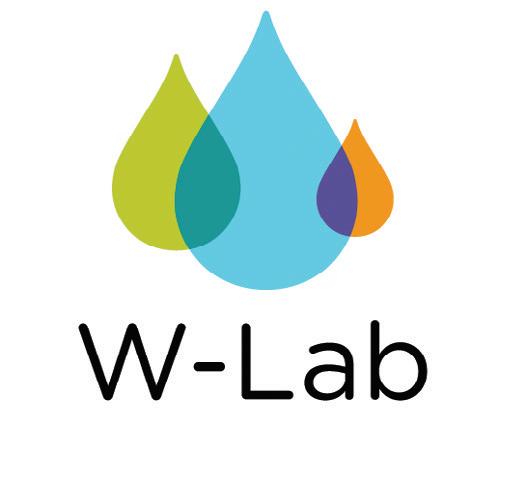
A Digital Ideation Summit hosted in June engaged all members across the Australian and New Zealand water industry to build a Technology Roadmap. This blueprint will guide the industry in the identification and evaluation of innovative technologies which will enable the industry to embrace change and foster resilience both now and into the future.
Dr Nina Terry, Founder and Global Partner at ThinkPlace, added, “Isle and ThinkPlace have a specialised team of 100 across Australia and New Zealand and a global team of 200, spanning six continents and 13 countries. The team’s breadth of experience means we are big enough to give water utilities access to global innovation experience and capabilities, and small enough to provide local context.”
For more information on W-Lab, please contact Victoria Allen on victoria.allen@wsaa.asn.au.
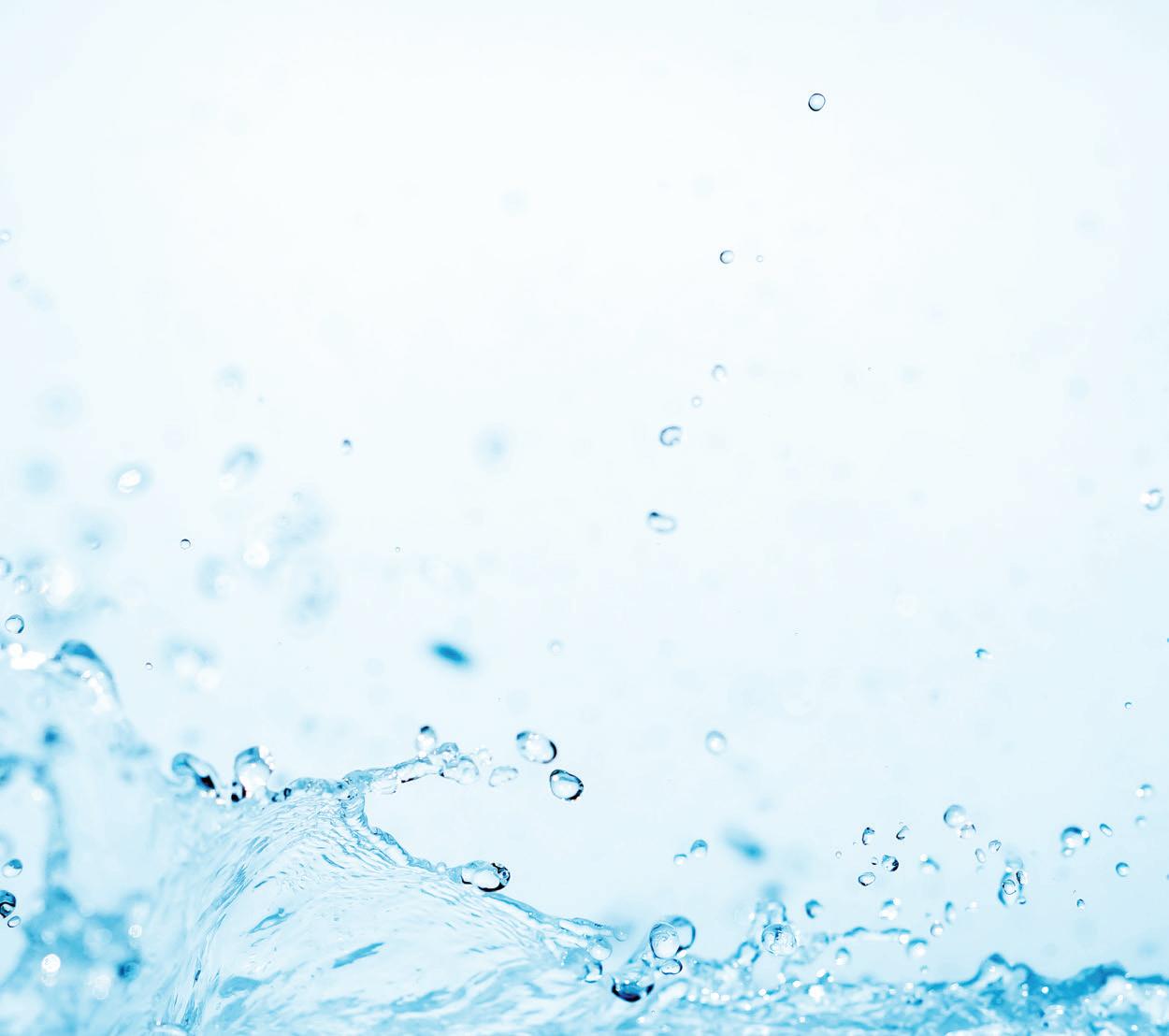
UTILITY • AUGUST 2020 WWW.UTILITYMAGAZINE.COM.AU
6
Simple and easy management for large scale M2M rapid deployment.

Control, monitor and automate with advanced security network services.
InHand offers industrial M2M cellular routers, gateways, Ethernet switches and IoT Management platforms to help utilities connect with remote assets.
9 Integrated 4G/LTE frequency bands to provide uninterrupted internet access
9 Enables access to remote assets for control, condition monitoring and automation

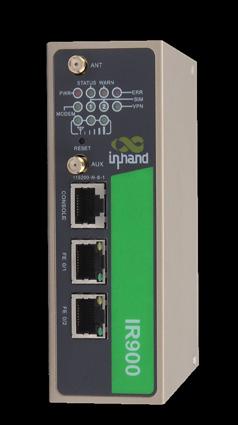
9 Suitable for fast large scale deployments
9 Python based OpenDevice programming platform
9 Plug & Play secure VPN connection available
Connect with confidence.
Madison Technologies is an exclusive distributor of InHand Networks in Australia. Our team is dedicated to ensuring our InHand Networks product portfolio is fully supported with an extensive range of hardware held locally across our national supply chain, and a team of InHand sales and technical support staff.

Sales Enquiries 1800 72 79 79 www.madison.tech

NEW RENEWABLE ORGANICS PROJECTS TO POWER VICTORIA
The Victorian Government has funded two Renewable Organics Networks, which will use organic waste to produce electricity, thereby reducing waste going to landfill.
The networks, the first of their kind in Australia, will transform municipal and trade organic waste into renewable energy and by-products such as soil enhancers for agricultural purposes.
The projects are designed to drive jobs and renewable energy uptake in Victoria’s south-west.
With a facility being built at the Colac Water Reclamation Plant and another under development for the greater Geelong area, the projects will create more than 80 new jobs across the construction and ongoing facility management stages.
The projects, which will be delivered by Barwon Water, are designed to create a circular economy for the region’s organic waste, reduce landfill costs for councils and reduce water infrastructure energy costs for Barwon Water customers.


Construction for the Colac network, which received $240,000 in 2018, is already underway.
Once complete, the project is expected to generate enough energy to power more than 1,000 homes thanks to high-strength organic waste from the Australian Lamb Company and Bulla Dairy Foods.
The Colac site will share energy back to Australian Lamb Company as hot water, and produce enough electricity to take Barwon Water’s Colac Wastewater Treatment Plant off the grid.
Work is also underway to investigate options to build a similar facility by the end of 2023 for the greater Geelong region to process organic waste collected by local councils.
The projects are being delivered by Barwon Water in partnership with the five Geelong Region Alliance (G21) councils, the Australian Lamb Company and Bulla Dairy Foods.
The Renewable Organics Networks are aligned with the Victorian Government’s water plan, Water for Victoria,
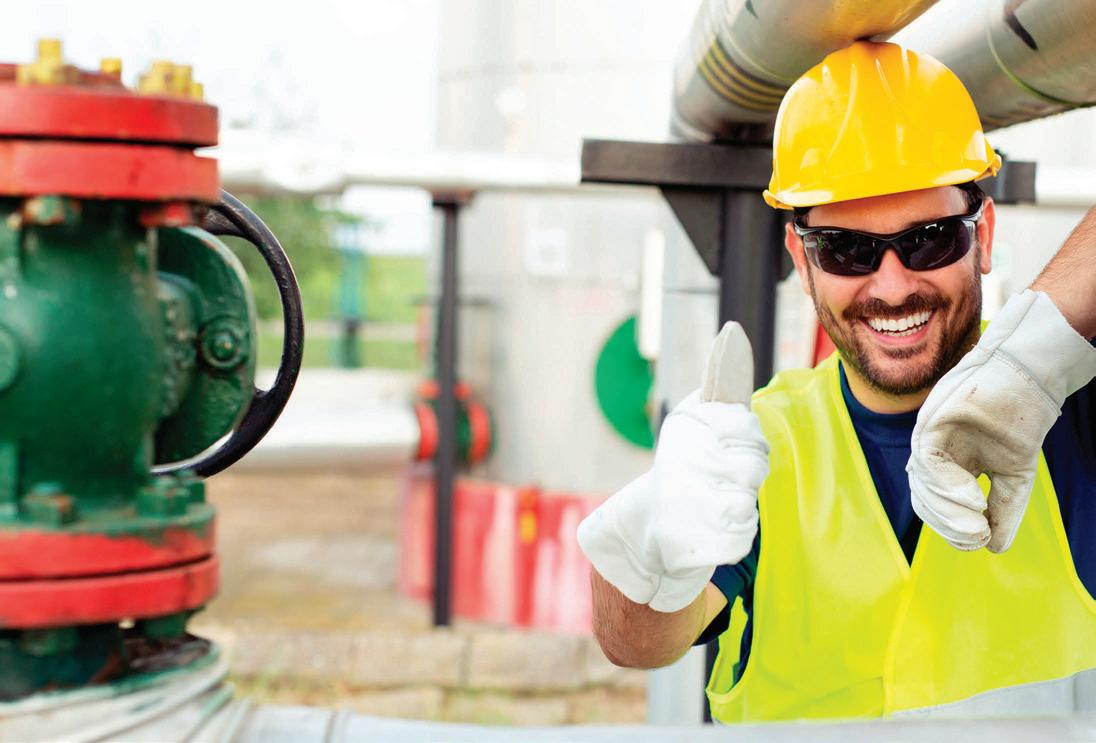

UTILITY • AUGUST 2020 WWW.UTILITYMAGAZINE.COM.AU 8
NEWS CUSTOM CABLE SEALS harcor.com.au Master Security Licence No. 407319937 Custom cable seals can be used to indicate the valve’s position and what flows through the valve. Ask about our fantastic pricing on nitrile & latex gloves email sales@harcor.com.au for more information
which calls on the water sector to lead the way to achieve its target of net-zero emissions by 2050.
Victorian Minister for Water, Lisa Neville, said the State Government wanted water corporations and the whole sector to help Victoria adapt to climate change, and to continue supporting jobs, liveable communities and a healthy environment.
“We know the impact climate change is having on inflows to our water storages and the health of our waterways; it’s never been more important to deliver creative solutions to reduce greenhouse gas emissions,” Ms Neville said.
Victorian Minister for Energy, Environment and Climate Change, Lily D’Ambrosio, said, “This project not only reduces waste going to landfill but also boosts Victoria’s renewable energy capacity – creating jobs, reducing emissions and driving down energy prices.”
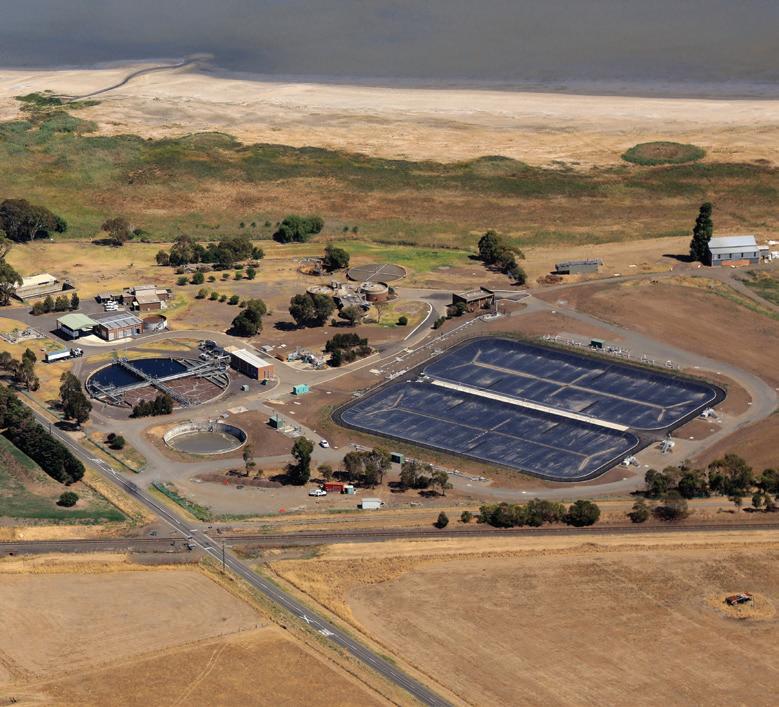
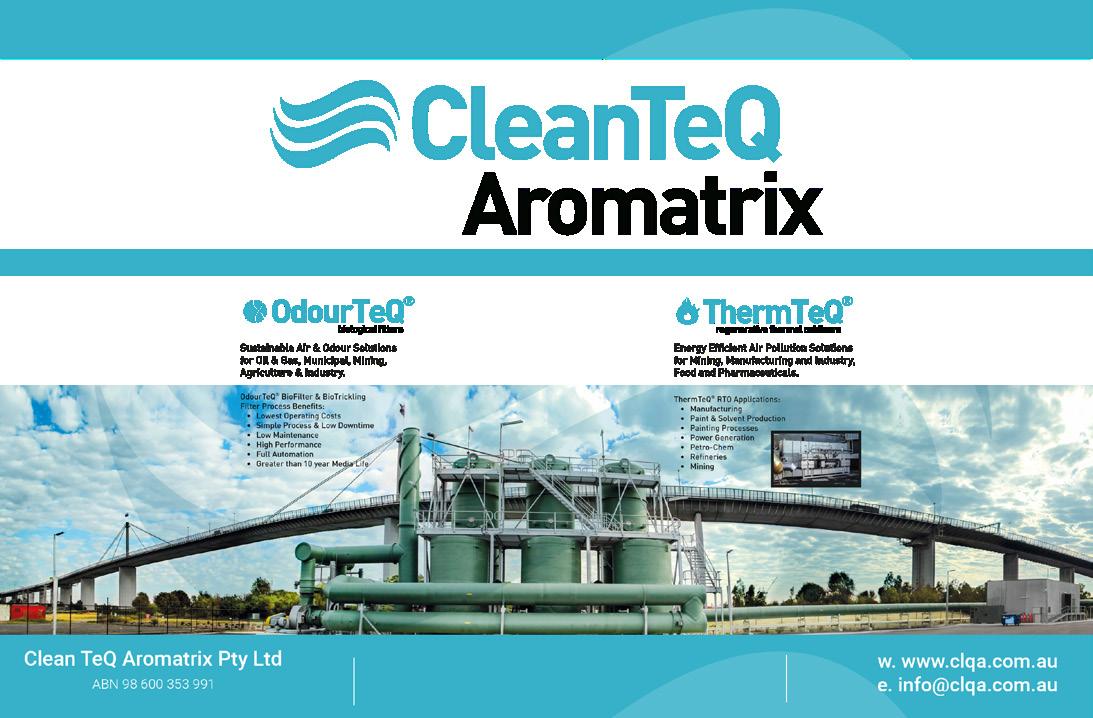

UTILITY • AUGUST 2020 WWW.UTILITYMAGAZINE.COM.AU 9 NEWS
AGL AND MICROSOFT ANNOUNCE GROUND-BREAKING CLOUD PARTNERSHIP

AGL and Microsoft have partnered up to phase nearly all computing to the cloud by 2022, and collaborate on innovating the utility’s customer experience.
AGL Executive General Manager Future Business & Technology, Simon Moorfield, announced the three-year strategic partnership with Microsoft, and said AGL would migrate most systems and more than 200 applications to Microsoft Azure, which has been selected as its primary cloud platform.
The companies will also collaborate to build AGL’s Centre of Excellence, harnessing data and leading-edge technologies including artificial intelligence (AI) to boost efficiency and create new and compelling customer experiences.
AGL will be using Microsoft’s data and AI services for projects such as AGL’s worldleading Virtual Power Plant.
Mr Moorfield said the agreement with Microsoft aligned with AGL’s aspiration of using the trusted public cloud for all applications

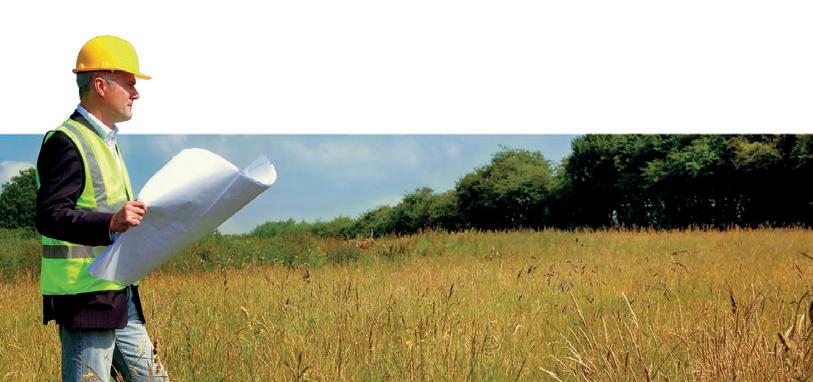
UTILITY • AUGUST 2020 WWW.UTILITYMAGAZINE.COM.AU NEWS P E Level 2 Suite 26/20 Enterprise Drive Bundoora, Vic, 3083 1300 1 L ANCO (52626) tenders@lancogroup com au lancogroup.com au Your business partner for engineering solutions Since 1998.
don’t purely just design; we help our customers realize their goal, if you give us an idea we can provide a efficient and effective engineering solution” Accredited consultant with Melbourne Water, Retail Water Corporations – Metropolitan and Regional Areas Corporate Profile Insurance Category Level of Cover $ Professional Indemnity $10 million Public Liability $20 million Work Cover n/a A list of applicable insurances includes: Name of Entity: Lanco Group Pty Ltd ABN: 27 160 328 478 Company Address: University Hill Business Park South Level 2, Suite 26/20 Enterprise Drive Bundoora, Vic, 3083 Company Structure: Private Company Quality ISO 9001 Environmen Health & Safety AS 4801 ISO 14001 2
“We
except those that cannot be hosted there for security or technical reasons, such as some systems used in power stations.
“This would make AGL the largest energy company and one of the first ASX50 companies with almost all technology applications in the public cloud, including all of those used at its corporate sites such as offices,” Mr Moorfield said.
“Already, we have nearly 50 per cent of our applications in the Azure cloud, which includes systems that support our human resources functions such as payroll, leave, performance reviews and professional development.
“We expect to complete moving our technology from corporate data centres in Sydney and Melbourne to Azure within two years under our Cloud Transformation Program.”
Mr Moorfield said the benefits of the program included:
• Increasing the speed at which innovative services are delivered to customers
• Access to advanced Internet of Things and advanced analytics platform services
• Reducing operational risk and supporting growth by providing secure, faster and better access to evolving technology
• Enabling better ways of working through automation
“Moving to cloud has already allowed more than 4,000 staff to successfully transition to working from home due to the COVID-19 pandemic, leveraging Microsoft Teams and securely accessing corporate systems remotely,” Mr Moorfield said.
“More broadly, it underpinned our $300 million Customer Experience Transformation (CXT) and our $165 million People, Processes and Performance Transformation (PT3) projects.
“These programs have allowed us to drive efficiencies, develop more products and improve customer offers, as well as upgrade our enterprise systems and processes and improve our technology performance.
“The announcement is the culmination of a process that started last September when AGL invited proposals for hosting AGL applications in the public cloud.”
Microsoft Australia Managing Director, Steven Worrall, said, “AGL is a global trailblazer in terms of digital transformation in the utilities sector and keenly aware of the innovation, scalability, security and resilience that our Azure cloud delivers.
“This partnership will see us continue working together and leveraging the growing array of advanced Azure platform capabilities that will underpin new generation services and customer experiences, setting the pace in the global energy sector and helping to rein in environmental impacts of energy production and use.
“Many of the world’s leading companies run their businesses on Azure, and Microsoft is delighted to be working closely with AGL as it continues to transform and innovate, delivering exceptional customer experiences, driving efficiency and supporting an engaged and safe modern workplace.”
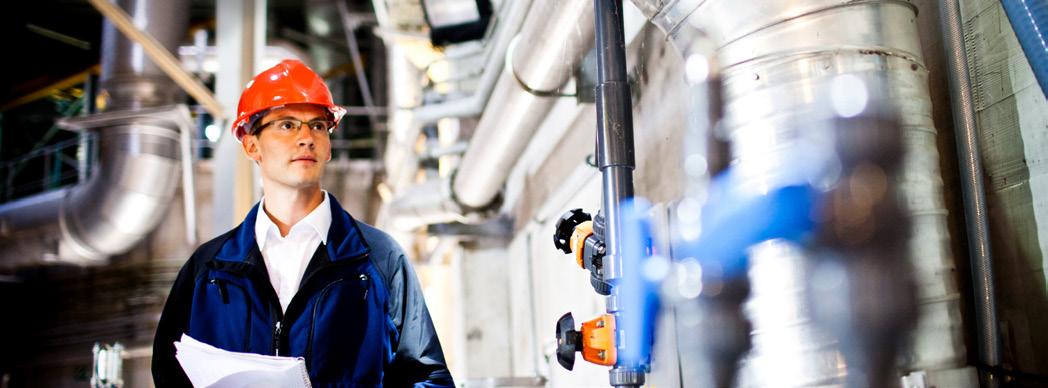
Innovative Water Solutions
WATER TECHNOLOGIES
Through its innovative solutions, Veolia Water Technologies enables industry, local authorities and citizens to optimize their use of resources for more efficient, environmentally-friendly and socially responsible outcomes.
We understand the importance of increasing the value of water and we do so by supplying high quality water, treating and reusing wastewater, producing and/or recovering energy, extracting raw materials and capitalizing on valuable byproducts.
www.veoliawatertechnologies.com.au
UTILITY • AUGUST 2020 WWW.UTILITYMAGAZINE.COM.AU 11 NEWS
© Veolia Photo Library
WaterNSW begins $1 billion dam projects with new partners

WaterNSW has announced a business partnership with two specialist firms to plan, develop and deliver at least three major dam projects.
WaterSecure – a joint venture comprising KBR and Aurecon – will assist WaterNSW with the three projects, and potentially more projects in the future.
The projects represent a historic investment in water infrastructure on a scale not seen in Australia for almost half a century.
Projects included in the first tranche of over $1 billion include the recently announced dam projects at Dungowan (near Tamworth) and Wyangala (near Cowra), plus a final business case for a new dam on the Mole River (near Tenterfield).
The partnership ensures projects such as Dungowan Dam and the Wyangala Dam wall-raising can be fasttracked, improving long-term water security sooner while creating immediate employment and economic benefit at a crucial time.
WaterNSW’s Acting CEO, Andrew George, said the key aspect of the partnership was the involvement of engineering, design and construction specialists with the capacity to make these projects a reality in the short term, rather than as a series of consecutive projects over time.
“WaterNSW has an incredibly strong track record on projects such as the Tamworth and Broken Hill pipelines, but what’s being planned now is on a much larger scale,” Mr George said.
Based on the delivery partner concept pioneered during preparations for the London Olympics, the arrangement will provide WaterNSW with the necessary increased capacity to deliver a range of major projects concurrently.
Building on WaterNSW’s knowledge and experience, WaterSecure will provide additional expertise, technical sophistication and capacity to oversee the delivery of multiple major projects.
Aurecon and KBR have a history in jointly supporting the management of major capital programs for large water utilities in Australia.
Speaking on behalf of WaterSecure, Aurecon’s Chief Executive Officer, William Cox, and Infrastructure Australia Vice President, Wayne Nolan, from KBR, said the partnership would extend the strong collaboration between the two companies.
“The joint venture will work with WaterNSW to build a high-performing portfolio delivery team that will generate regional, social and environmental benefits. Our aim is to leave a legacy; building capability for WaterNSW and better outcomes for communities,” Mr Cox said.
“We are fully committed to the successful delivery of WaterNSW’s capital program. WaterSecure will bring together our local expertise, digital solutions and best practice experience from similar joint programs of work across Australia,” Mr Nolan said.
UTILITY • AUGUST 2020 WWW.UTILITYMAGAZINE.COM.AU 12 NEWS
CEO appointed AT POWER AND WATER
Anew CEO has been appointed at Power and Water Corporation following an extensive recruitment process.
Djuna Pollard, who has been acting CEO since December 2019, has been appointed to the role.
Power and Water Chair, John Langoulant AO, said Ms Pollard’s appointment will earmark an exciting period of change and growth for the business.

“Djuna is an exceptional leader who has an in-depth understanding of the organisation, its people and the community we serve,” Mr Langoulant said.
“She has headed different teams across the business over many years, and is the ideal person to head the corporation now.”
Ms Pollard has been in leadership roles with Power and Water for two decades.
As Power and Water’s first female Executive General Manager Power Services, Ms Pollard headed up the corporation’s electricity business.
She has also held the roles of General Manager Retail, and Senior Executive Manager Strategy, Economics, Regulation and Transformation.
“It is a privilege to be leading Power and Water, which plays such an integral role in the lives of Territorians,” Ms Pollard said.
“As a local Territorian and long-time executive at Power and Water, I understand the needs of our people and the dedication of the team.
“I am looking forward to building on the successes of the corporation to date, and delivering for our customers.”
Power and Water said Ms Pollard had been instrumental in creating a culture of safety, integrity and inclusion, and had navigated some of the corporation’s most complex business challenges, including structural separation in 2014 and more recently the transition to the national regulatory framework under the National Electricity Rules and the Australian Energy Regulator.
Ms Pollard returned to Power and Water as its acting CEO in December 2019 after spending some time as CEO of Jacana Energy, which had been created from structural separation.

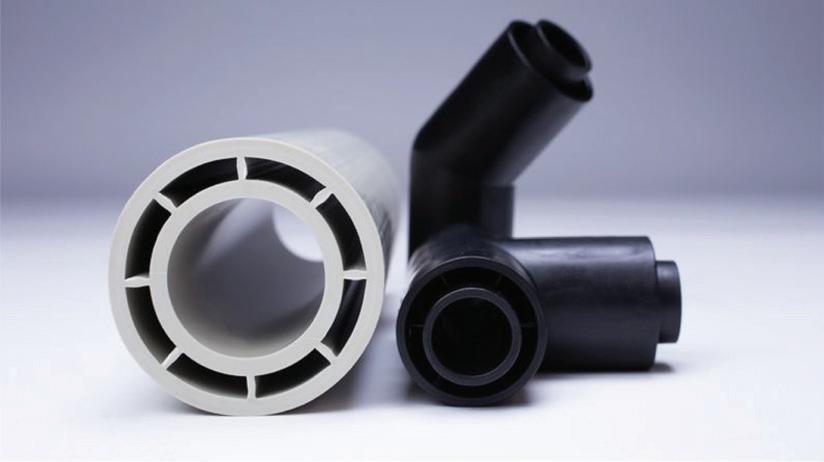

UTILITY • AUGUST 2020 WWW.UTILITYMAGAZINE.COM.AU 13 NEWS C M Y CM MY CY CMY K Agru Advertisement - FINAL - Nov 2019.pdf 1 4/11/2019 10:20:30 AM
SA identifies INTERCONNECTOR AND SMART SOLAR AS CRITICAL TO STATE’S ENERGY SECURITY

The South Australian Government and the Australian Energy Market Operator (AEMO) have released a report detailing the state’s plan to reach 100 per cent renewable energy.
The South Australian Government commissioned cuttingedge power system modelling by AEMO on how to manage low demand conditions due to a decade of unmanaged rooftop solar uptake.
The plan, A secure transition to affordable renewable energy, identified the SA-NSW interconnector as a priority for the state’s energy security.
South Australian Minister for Energy and Mining, Dan van Holst Pellekaan, said, “The single most important finding of AEMO’s report is that the SA-NSW interconnector is critical to the long-term security of South Australia’s electricity system.
“The delivery of the 800MW Project EnergyConnect will enable the continued growth of household solar installations whilst driving down the price of power and keeping the entire electricity system stable.”
The Clean Energy Council said stronger network interconnection was integral to a 21st-century energy system, and that the South Australian Government’s commitment to Project EnergyConnect would modernise the
grid, drive down power prices and unlock the next wave of large-scale and household-level renewable energy.
Clean Energy Council Chief Executive, Kane Thornton, said, “The project has been burdened by a regulatory process and RIT-T that is no longer fit for purpose.
“Accelerating Project EnergyConnect is key to addressing the challenges identified in the AEMO report, as is continued investment in energy storage at the household, community and utility scale.”
The South Australian Government is already underwriting early works to accelerate the project as fast as possible.
Energy Networks Australia CEO, Andrew Dillon, said the report reinforced the important role already being played by networks to provide critical grid stability.
“Synchronous condensers and network scale batteries, like those delivered by ElectraNet in SA, are already helping keep the lights on and the grid stable,” Mr Dillon said.
“Energy security is no longer about producing enough electricity, with the surge of solar we now face the challenge of at times having too much for the system to cope.
“A more interconnected grid is a more stable and reliable grid.”
SA Power Networks’ Manager Corporate Affairs, Paul Roberts, said, “While we see our state’s energy transformation as an exciting opportunity, South Australia has some very specific challenges in managing our electricity system due to high levels of rooftop solar generation and comparatively low levels of energy demand.”
Mr Roberts said the challenges impact all levels of the state’s energy system and ultimately put the security, reliability and quality of supply at risk.
“SA Power Networks has been engaging with customers, stakeholders, rule makers, industry and manufacturers to develop prudent, cost-effective approaches to deal with emerging issues in the electricity distribution network due to rapidly increasing levels of solar generation in our system,” Mr Roberts said.
UTILITY • AUGUST 2020 WWW.UTILITYMAGAZINE.COM.AU 14 NEWS
These initiatives include:
• Introduction from 1 July 2020 of new residential Time-of-Use network tariffs recently approved by the Australian Energy Regulator (AER). These ‘solar sponge’ tariffs provide cheaper daytime network charges to encourage use of more solar-generated energy during the middle of the day
• Encouraging more loads, such as water heating, to shift to the daytime to soak up extra (and cheaper) solar generation
• With the support of the State Government, investing in enhanced voltage management and providing emergency backstop capabilities if required by AEMO
• Monitoring and analytics in the low voltage network to provide better real-time visibility of what is happening in local networks
• Developing industry approaches and standards to support introduction of flexible export limits for rooftop solar to respond to what is happening in the network at any given time
AEMO identified the threat of another system blackout in its report unless short-, medium- and long- term improvements to the system were implemented.
“The State Government will also introduce new smart solar standards in South Australia, ahead of national

• Magnetic flow meters
• Ultrasonic meters
• Transit time / doppler
• Open channel
• Custom spool systems
changes, to ensure that new solar supports the grid during disturbances and can be managed like any other generator when needed to support energy security,” Mr van Holst Pellekaan said.
“The State Government is also underwriting a $10 million investment in voltage management by SA Power Networks. Bringing forward this investment will allow South Australia to securely host more rooftop solar and improve the quality of power received at people’s houses.”
Mr Roberts said SA Power Networks welcomed specific initiatives announced by the State Government that will assist in managing the issues in the distribution network and support actions already underway, including:
• Making it mandatory for retailers to offer customers innovative network tariffs to soak up daytime solar
• Establishing consistent solar, inverter and appliance standards for manufacturers and ensuring installer compliance
• Working with Virtual Power Plant (VPP) proponents in SA to ensure they assist in managing network issues
AEMO, SA Power Networks, ElectraNet and Essential Services Commission of South Australia (ESCOSA) have all collaborated with the South Australian Government to address the risks to the SA grid until Project EnergyConnect is delivered.


• Biofilm Analyser
• Residual Chlorine
• Dissolved Ozone
• Dissolved Oxygen
•
•
• PH/ORP
• Conductivity
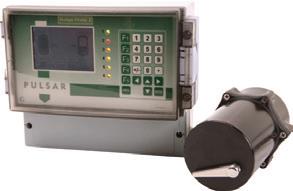
•
•
•
•
sales@bintech.com.au
www.bintech.com.au
UTILITY • AUGUST 2020 WWW.UTILITYMAGAZINE.COM.AU 15 NEWS 1300 363 163
Turbidity FLOW METERS LEVEL METERS ANALYTICAL CONTROLLERS CRONOS ECOMONY
Suspended Solids
• Fluoride
and Controllers
Ultrasonic Transmitters
Point Level Switches
Magnetic Level Gauges
Sludge Level Systems
NEW TURBIDITY MONITOR
• Wireless Systems
BINTECH SYSTEMS WATER SOLUTIONS
Tips for running A SUCCESSFUL WEBINAR

The pandemic has highlighted that webinars aren’t just a substitute for live events – they have their own benefits when it comes to branding, customer engagement and quality lead generation.
If you’re thinking about reaching potential customers with a webinar, here are five tips to help you better connect with your audience and for your event to run as smoothly as possible behind the scenes.
1. AUDIENCE: ARE YOU REACHING YOUR TARGET MARKET?
The main purpose of any webinar or Virtual Conference is to provide information to your target market – the people you want to engage with your product or service. So the first thing you need to decide is whether you will be talking to your existing audience or if you want to reach new people.
If you’re targeting your existing audience you can directly promote your webinar to them and offer educational and/or interesting content.
If you want to reach a new market, the best way to find the most relevant people is through external marketing. This could include social media promotion or other channels like advertising in industry newsletters, allowing you to precisely track how many registrations it drives. Using social platforms like LinkedIn also allows you to identify a new audience based on factors such as job title and location, so you can find exactly who you want to attend your webinar.
Monkey Media Managing Editor, Laura Harvey, said virtual events also tend to attract a lot more people than a live event. Monkey Media has run several Virtual Conferences in 2020, including Digital Utilities, Disaster Management, Asset Management for Critical Infrastructure, Flow Technology, and Smart Cities
“For example, at our Smart Cities Conference, we’d normally get around 300 people for a live event, but by making it a Virtual Conference, we had more than 1,000 people registering,” Laura said.
Once you’ve decided who your target audience is, it’s important to engage with them before and after the event to foster the relationships. Before the webinar, think about
The uptake of webinars and Virtual Conferences has exploded since COVID-19 hit and all trade shows and faceto-face meetings were banned, and they aren’t going away anytime soon.
setting up an automated newsletter that sends them useful information on the topic. During the webinar ensure they can participate in the conversation using Q&A chat functions to send questions to speakers, or through poll questions.
2. CONTENT: WHAT VALUE IS IT OFFERING?
The content of the webinar or Virtual Conference is what will get people to register, so you need to be offering high-quality information and engaging speakers. Think about what your identified target audience and potential customers would want to learn about and create a program around their interests and pain points.
Laura creates the programs for Monkey Media’s Virtual Conferences and said the choice of speakers can play a big part in the success.
“You need to decide if you will use an internal speaker from your own company, external experts, or both. A mix is often good as it provides broader program appeal and can look less promotional,” she said.
“The key with speaker selection is to first define the topics you want to address in your webinar, and then choose the speakers who are well-regarded and best placed to address these topics, internally or externally.
“Speakers who have a high public profile, and who have their own broad networks that they can leverage to attract more delegates to your event are also beneficial.”
There’s been a huge number of new webinars popping up lately, so like anything else there are good and bad ones. You want to make sure you’re not contributing to ‘webinar spam’. Don’t just do a webinar because everyone else is. You still need to have something useful to say.
3. FORMAT: MAKE IT FIT-FOR-PURPOSE
There is no set rule for how long a webinar or Virtual Conference should be, as the length of time should fit the content. If you’re turning a previously live event into a webinar, it’s important to not try to just jam in the existing content. For an event that was previously a one or two day conference, this could be compressed into a 3-4 hour webinar.
UTILITY • AUGUST 2020 WWW.UTILITYMAGAZINE.COM.AU 16
NEWS
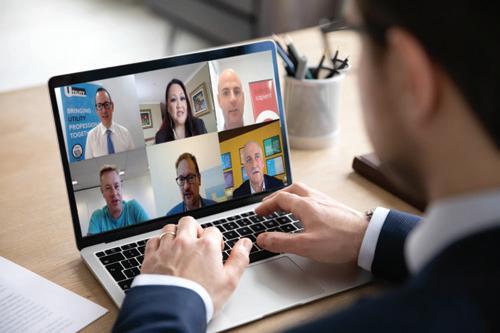
This is what happened with Monkey Media’s Digital Utilities 2020 Conference, as the COVID-19 lockdown and travel restrictions began less than a week out from the event.
Monkey Media Managing Director, Chris Bland, said the decision was made to move it online on Friday, with the event starting the following Thursday.
“This gave the production team only three work days to transform it into a completely Virtual Conference, including finding the best platform, and rejigging the program to work better in an online format, including working with all the speakers to ensure their presentations still had the same impact when delivered online,” he said.
“It was a steep learning curve and while it wasn’t perfect, we made sure to take the audience into account in terms of how they would be receiving the information presented.”
Most people also have short attention spans so Laura said that generally webinars should go for a few hours, or if there are only one or two speakers presenting on a niche topic, keep it down to 45 minutes to one hour.
Take different time zones into account when choosing the optimal time, and make sure your speakers stick to their allocated times. Also, consider breaking up the event with a variety of presentation styles including panels and audience participation through Q&A sessions. Also, don’t forget to keep it visual – having powerpoint slides with illustrations or short videos is more interesting for viewers.
4. TECHNOLOGY: GET IT RIGHT
People are forgiving when there are technical issues, but it only takes a minute or two of dead air before you lose someone’s attention, so it’s important to get the technical basics locked down.
There are a number of webinar platform options available including GoToWebinar, On24, ClickMeeting and Zoom, with the choice depending on a number of factors, including price and the specific features needed.
Regardless of the platform, the key is to fine tune communication between the production team, speakers and the host/MC to ensure that everything is seamless on screen, said Monkey Media’s Marketing Account Manager, Harry Johnston.
Harry manages the technical components of all Monkey Media webinars through programs including the Zoom webinar platform and OBS Studio streaming software.
“We have set up websites through Zapier that allows people to automatically download Zoom when they register for a Virtual Conference, and also have several add-on programs such as a virtual camera attachment, so we’re not just using the one program,” Harry said.
“Since Digital Utilities, we’ve stepped up our production quality by using Adobe AfterEffects to custom-make our own graphics and animations to show who’s currently speaking and what’s coming up.”
While the webinar is running, it’s best to have a production team set up with different people managing different aspects, including one person to coordinate with the speakers and answer delegate questions that come through, and another to focus on the visuals and audio to ensure everything on screen is running smoothly.
“There’s a lot of dialogue behind the scenes, so my best piece of advice for all webinars is to do a practice run at least the day before to troubleshoot any problems. This ensures the speakers are comfortable and know what they need to do, and allows you to test the sound quality, backgrounds, and that slides or visual aids work,” Harry said.
Polls are also a great addition to a webinar or Virtual Conference as they keep people engaged but can also be used as lead generation, where people can opt in to receive more information on certain companies presented.
5. FOLLOW UP: KEEP THE CONVERSATION GOING
Some companies produce their own webinars, while others work with an agency or publisher to run something more hybrid, either under their own brand, or co-branded.
Sponsoring webinars and Virtual Conferences is another option and can include brand recognition through logos in event promotion, speaking slots or video presentations in the program, information sent directly to these lists before or after the event, and more.
These new contacts can opt in to receive more information about your product or service and if it’s a high-quality webinar, you will be associated with it and seen as an authority in the space.
If you’re hosting your own webinar, you will already have the leads, but it’s critical to continue to keep in touch with them in a useful way and provide them with continued value. This could be in the form of adding these contacts to an automated nurture track so they can be sent related information. It’s this ongoing engagement that allows you to get the most out of the webinars, long after they are over.
“Our conferences remain online after the live virtual event has concluded, so we continue to have people registering to watch our previous events on-demand, which extends the life of the webinar content we create,” Laura said.
If you’d like more information about Monkey Media running a webinar for your businesses, or sponsoring a future Virtual Conference, get in touch at events@monkeymedia.com.au.
17 NEWS UTILITY • AUGUST 2020 WWW.UTILITYMAGAZINE.COM.AU
WIOA OPERATORS
Every year, the Water Industry Operators Association (WIOA) celebrates the best of the industry with its Operator of the Year awards. We spoke with some of the 2019 winners from around the country, all of whom have demonstrated excellent performance, initiative and all-round attention to detail in their roles as operators of water or wastewater treatment facilities.
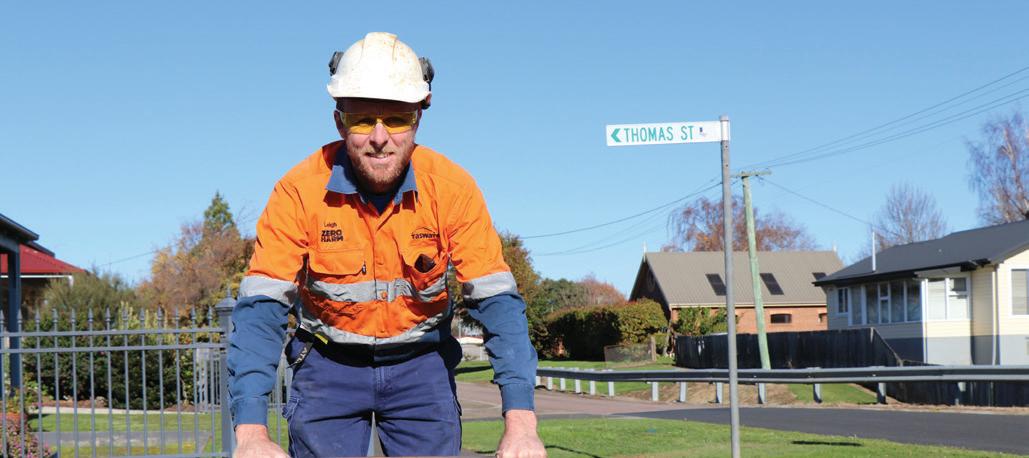
LEIGH WALTON, TASWATER – TASMANIAN OPERATOR OF THE YEAR
My current role is Senior Operator in the urban networks team, looking after the water and sewer reticulation systems in my zone, which is based at Forth on the North West Coast of Tasmania. I work with the coordinator to oversee the daily operations of the systems, assist in planning the scheduled work and provide guidance when required on operational issues with a key focus on safety.
A typical work day for me involves reporting to upper management to provide any required information around regulatory reporting and assisting the crews with any issues that may crop up during the day. There is a focus on the planned work that has been scheduled for that day, along with dealing with the reactive nature of the industry that we are in.
TasWater employees have been at the forefront of some of the recent innovations I’ve seen in the operations side of the water business. These include the implementation of the cargo net, which assists with removing concrete and other heavy items from job sites, and also the chlorine cylinder trolley, which safely moves chlorine cylinders at water and wastewater treatment plants.

Also, on a larger scale in terms of innovation, I would have to say the arrival of vacuum excavation trucks to the industry has been a massive game changer. I have been in this industry for over 20 years and these machines have completely changed the way we work. These trucks are removing one of the biggest risks we face with underground utility installation – damaging other utility assets which, in the case of power and gas, can have serious consequences.
One of the main challenges I face in my role is avoiding other utility assets, which is mitigated through the use of vacuum excavation trucks. Although the trucks have reduced the likelihood of an asset being damaged, we still need to be careful and exercise caution. Another challenge is carrying out maintenance on sewer pipes that have been built over or are not easily accessible. The practice of relining pipes is becoming more common as there is no digging involved, and it is a cost-effective solution that also eliminates significant OHS issues.
I love working in the operations side of the water industry because I enjoy the reactive nature of my role and working with the crews to get a good outcome for everyone. We have a great team here at TasWater, with a lot of individuals that are keen to make a difference for our organisation and the community.
WATER OPERATIONS AND TREATMENT UTILITY • AUGUST 2020 WWW.UTILITYMAGAZINE.COM.AU 18
OPERATORS OF THE YEAR
BILLY HAJEK, SA WATER – SOUTH AUSTRALIAN OPERATOR OF THE YEAR
I’m one of four operators at the Glenelg Wastewater Treatment Plant in Adelaide’s south-west, which treats around 20 per cent of the city’s sewage, processing around 50 megalitres of wastewater a day. My role can be quite diverse, but on a basic level, I help to make sure the wastewater is treated to an acceptable standard for reuse or return to the environment. Each year, the Glenelg facility delivers around 3.8 billion litres of high-quality recycled water to parks, gardens and sporting grounds across the city, so it’s important our operations are safe, efficient and effective.
I typically work between 7.30am to 4pm, but am also part of an on-call roster. My day-to-day tasks can vary, ranging from taking wastewater samples, to managing nutrient discharge targets, to identifying any issues and fixing them. Only around a quarter of my day is spent in the on-site control room monitoring the computers and monitoring systems, with the majority spent in and around the plant assessing all the infrastructure to make sure it’s doing what it’s supposed to do.
Although some operations are now automated, I’d say that around 95 per cent of any issues that may occur with the plant still need to be physically looked at and resolved by an operator. You really need a detailed understanding of how everything works, and each part has its own little intricacies. Before starting this job, I never thought I’d know so much about wastewater, but I’m a keen learner and I ask a lot of questions!
In terms of innovation, we’re always looking for ways to improve the plant’s environmental performance, as well as find more efficient, cost-effective ways of doing things, and this is especially important as Adelaide’s population continues to grow. In the time I’ve worked at the Glenelg Wastewater Treatment Plant, there’s been a focus on creating more stability in the wastewater treatment process by better understanding the behaviour of bacteria. I may not be a scientist, but I know a lot about what makes this little ecosystem of bugs happy and what doesn’t!
Some people think the smell would be the biggest challenge in my profession, but anyone who works with wastewater will tell you that you don’t even notice it after a while. This is helped by improved odour management systems, which are commonplace at treatment plants across the country.
With no day the same, a challenge can be that you expect the treatment operations to be doing one thing and then your monitoring or testing show another result. You then have to find out why, and that can sometimes
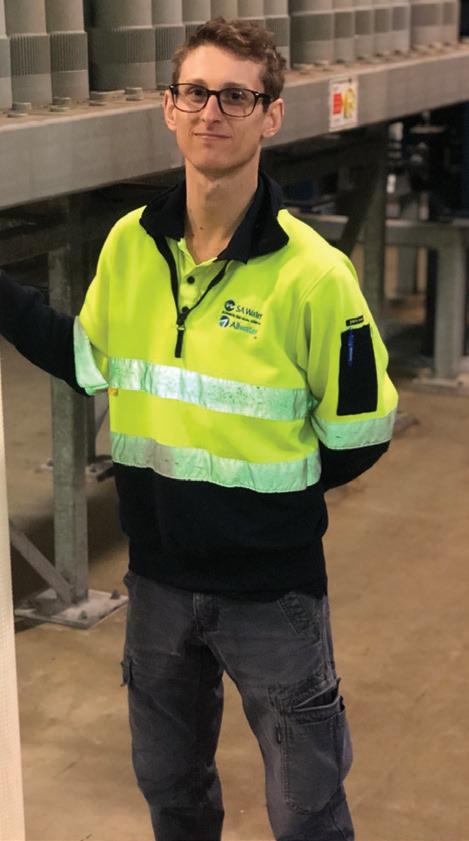
only be through a process of elimination. Over the past couple of years, the Glenelg Wastewater Treatment Plant has also been a hub of activity, with 1414 Degrees trialling its biogas thermal energy storage system pilot on-site, the installation of solar panels, and regular visits by industry and academic representatives from across Australia and the world. We still have to get a job done amongst all this, so you just have to be a bit flexible with your space and time.
I love working in the operations side of the water industry because there is always something new, always a challenge to keep your mind busy. The people I work with are also fantastic, and we work hard but we have fun doing it. This is the sort of job you really have to live and breathe, and I genuinely love coming to work each day to ensure people are getting a reliable wastewater service and to continually find better ways of doing things.

WATER OPERATIONS AND TREATMENT 19 UTILITY • AUGUST 2020 WWW.UTILITYMAGAZINE.COM.AU
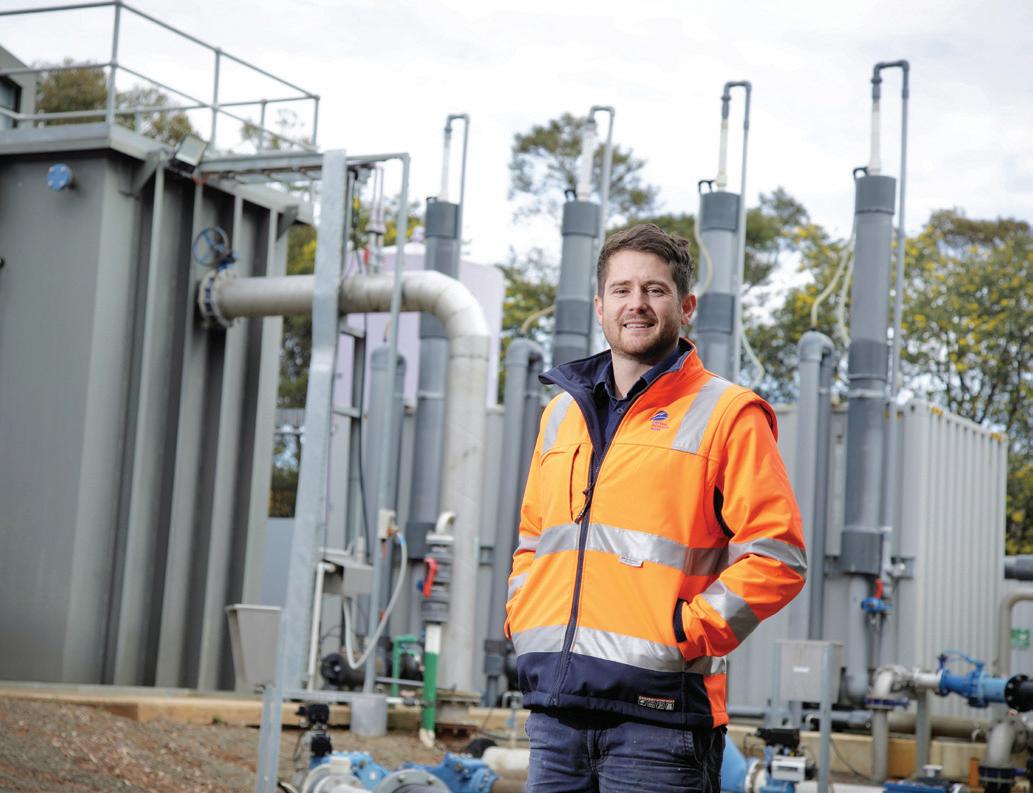
LEE MARSHALL, CENTRAL HIGHLANDS WATER – VICTORIAN OPERATOR OF THE YEAR
I am currently working in the water treatment team at Central Highlands Water as a Water Treatment Operator. I have been fortunate enough to vary my roles with the organisation; I started my career here as a Civil Maintenance Officer (traineeship), then progressed into water treatment. I have also taken on the role of Duty Manager, which involves coordinating the civil maintenance side of the business after hours and responding to various issues within both the water and sewer networks.
At Central Highlands Water, we currently operate six water treatment facilities that use a number of different treatment processes. These include DAFF (Direct Air Floatation Filtration), RO (Reverse Osmosis), EDR (Electrodialysis Reversal), UV (Ultraviolet Disinfection), MF (Membrane Filtration) and direct disinfection.
During a normal working day I will be conducting plant checks, water quality checks, chemical dosing calibrations, fault finding and process optimisation. In the Duty Manager role, I would be coordinating after-hours civil maintenance responses to ensure any bursts are repaired safely and in a timely manner. This role also requires oversight of sewer and water pump stations, which can require intervention via SCADA from time to time.

In 2019, we implemented a UV system at the Dean Water Treatment Plant to work alongside current disinfection processes, which was required to meet our health-based targets. This project was overseen by the water treatment team, with myself being project manager. It was a great way for me to further develop my project management skills, and provide my operational and technical skills into the project to ensure the operability of the site for the team.
There are many challenges that operators face in order to meet their water quality targets. An accurate and up-todate asset information program with a good preventative maintenance schedule can help overcome issues with some assets and help find problems before they arise.
Any water treatment project that is occurring within an organisation should ensure that an operator is involved from the start. In my experience, where an operator has been included in the project from the start the outcome is much better for the staff who are ultimately responsible for the asset.
The best part about working in water supply operations is the satisfaction you get knowing that you are supplying the community with safe, clean drinking water every day.
UTILITY • AUGUST 2020 WWW.UTILITYMAGAZINE.COM.AU 20 WATER OPERATIONS AND TREATMENT

Reliable level measurement in water treatment facilities, pump stations and rain overflow basins. Open channel flow measurement and water level monitoring.
VEGAPULS WL S 61
▪ Measuring range up to 8 m
▪ Can be used outdoors without restriction
▪ Flood-proof IP 68 housing
▪ Operation via Bluetooth with Smartphone, tablet or PC
Further information: www.vega.com/wls61
Phone 1800 817 135
Low-cost level measurement. Radar sensor for water management.
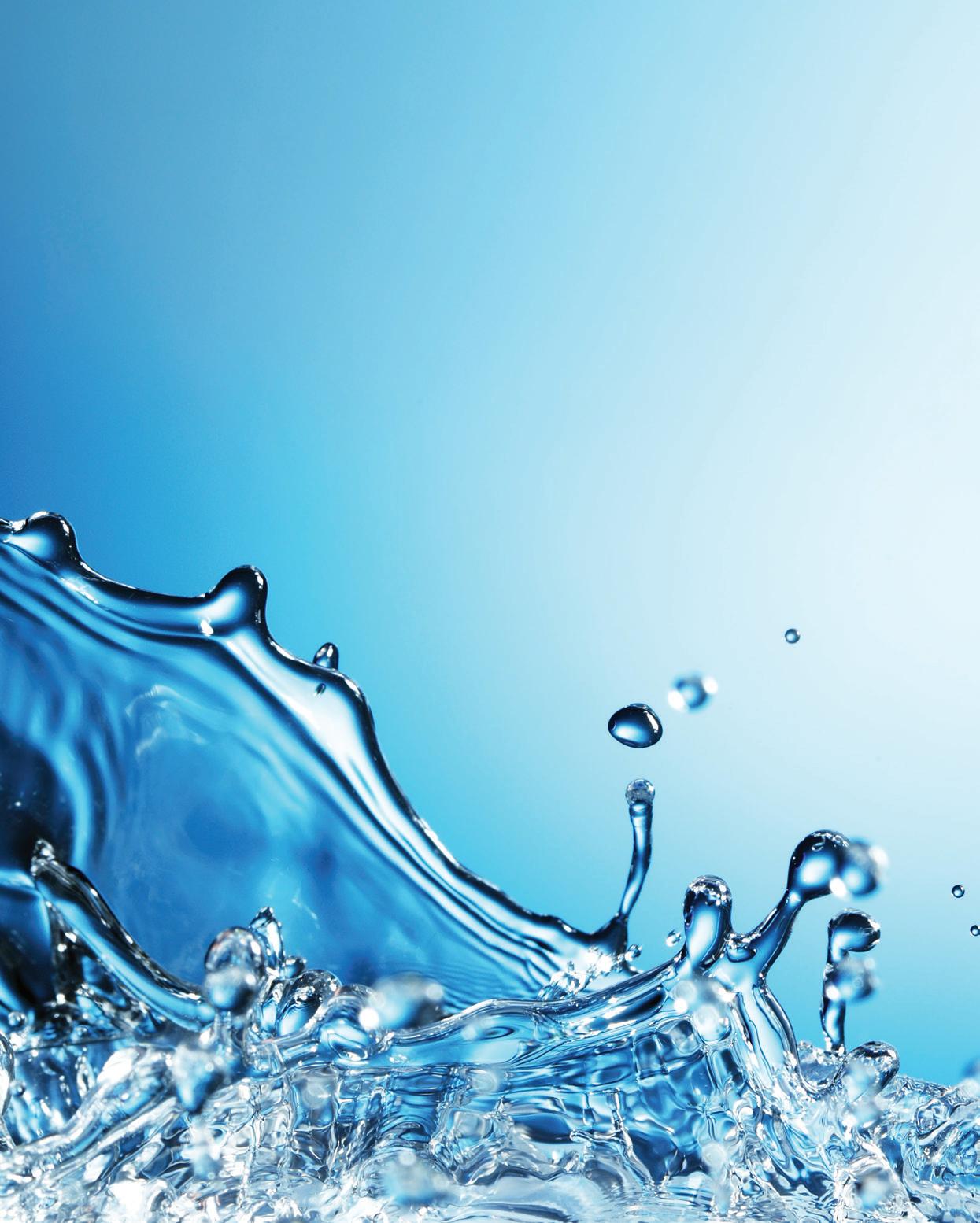
WIOA A LOT GOING ON WHEN NOT MUCH IS GOING ON
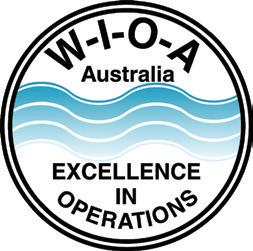
UTILITY • AUGUST 2020 WWW.UTILITYMAGAZINE.COM.AU 22
WATER OPERATIONS AND TREATMENT | Utility Partner Solutions

The Water Industry Operators Association of Australia (WIOA) is a national not-for-profit association with the primary role of facilitating the collection, development and exchange of quality information between people undertaking operational roles in the water, wastewater and recycled water industries.
For many years, the association has been conducting water industry operations conferences and exhibitions across Australia. These have grown to become much-anticipated events for the operators and water industry stakeholders as a vehicle to keep up to date with the latest information, technologies and solutions.
The association is a great network for anyone who is responsible for carrying out operations and maintenance within the water industry. As a result of COVID-19 restrictions, face-to-face meetings and events have come to a halt, but that has not stopped this progressive association from looking at innovative ways to support its members and provide the valuable networking opportunities that belonging to an industry association brings.
NEW VIRTUAL WATER CONFERENCE AND EXPO INITIATIVE
In the absence of opportunities for face-to-face events, WIOA is excited to announce a new virtual conference and expo platform – Virtual Water Virtual Water is a visually rich and highly interactive 3D virtual experience that recreates the feel of a physical event. Members and stakeholders from all over the country will come together to hear the latest updates, share knowledge and technical information, and learn from the experiences of a range of presenters. The platform will also enable the opportunity to present a number of awards to provide operational staff with the recognition they deserve, including running the very successful water tasting competition.
LIVE CONFERENCE DAYS HIGHLIGHT KNOWLEDGE SHARING
WIOA will host a minimum of ten “live days” on the platform, with the first occurring on Wednesday 22 July 2020. Live days will include keynote and technical presentations where speakers will deliver engaging and informative content, and facilitate two-way conversations through question and answer sessions.
The first live day will include a keynote presentation from internationally-renowned researcher, educator, communicator, author and tireless advocate for scientific excellence and safe drinking water, Dr Steve Hrudey from Canada.
Steve has a strong commitment to empower all those who operate and oversee water systems, advocating the need for education, effective regulation and monitoring, and the need for operators to “know their own systems” to minimise the potential risks to safe drinking water.
The Intelligent Water Network (IWN) will also host two live days for the benefit of its members.
IWN Program Director, Dean Barnett, said, “We have been working with WIOA for many years, with the best interest of our water industry being front of mind.
“We regularly share information on the IWN Program with WIOA and showcase new processes or technology solutions with the frontline operations staff. We see this as another innovative way we can share information as part of our program.”
The final programs for the live days are currently being developed and more information about the technical presentations, along with the how, when and where to register will be available soon.
UTILITY • AUGUST 2020 WWW.UTILITYMAGAZINE.COM.AU 23
Utility Partner Solutions | WATER OPERATIONS AND TREATMENT

EXPO SHOWCASES THE LATEST IN WATER INDUSTRY INNOVATION
Virtual Water will include an expo which will provide corporate members the opportunity to showcase their products and services in a virtual environment, simulating a live conference with exhibitors engaging with the attendees from their virtual expo booths. Exhibitors will be able to provide information to attendees through videos, PDF or other brochures as well as by chat, audio, messaging and email functions.
The expo booths and their content will not only be available on the live days, they will stay on the Virtual Water platform for 365 days, and the sites will be accessible 24 hours a day, seven days a week.
WIOA Managing Director, George Wall, said, “Due to the forced cancellation of our conferences, we have initiated the online platform to provide our members access to some of the technical information that they would have been exposed to at the face-to-face events.
“The Virtual Water platform will also provide the opportunity for the operators to seek out new products and services, and keep up to date with the latest and greatest from the suppliers to our industry.
“Providing opportunities for operators to connect with suppliers helps them build a network of contacts they can call on when needed, and allows the suppliers the chance to showcase their new solutions that otherwise would go unseen.”
Virtual Water is easy to navigate and provides a captivating experience – attendees only need access to the internet and are not required to download anything. Virtual Water is mobile compatible and works on all modern browsers.
Support for the event continues to grow with all the available sponsorship opportunities snapped up the day they were released. WIOA would like to thank and acknowledge the support of the current sponsors: Intelligent Water Networks, Alternative Lining Technologies
Australia, Thermo Fisher Scientific Australia, Southern Divers, McBerns Innovative Solutions, Piping & Automation Systems, Endress+Hauser, Hydroflux, Yokagawa, Bergmeier Environmental and Acrodyne-Limitorque.
Expo sites are now on sale and all corporate members and suppliers to the water industry are encouraged to support WIOA by purchasing an expo booth. More information can be obtained from wioaconferences.org.au/virtualwater.
RECOGNITION FOR THE STARS OF THE SECTOR
WIOA will also use the live days to recognise the contributions made to the industry by numerous operational employees, announcing the annual Operator of the Year Award winners for each state. The popular Ixom Best Tasting Tap Water competitions will also be conducted, with winners from each state announced on the live days.
Cultural Recognition Award
The Kwatye Cultural Recognition award recognises outstanding contribution to supporting diversity and fostering inclusion in the workplace or community. The award focuses on those who have gone above and beyond to further inclusion, connection and belonging for co-workers, members of the community and people from disadvantaged and marginalised groups.
Spirit of Australia Awards (Mateship)
This new award for 2020 will celebrate the Australian spirit of mateship. It is this compassion and kindness that WIOA wants to recognise in what has been a very difficult year with drought, fires, floods and a pandemic. WIOA encourages everyone to share stories and submit nominations to acknowledge people who have supported others during challenging times. Each state winner will have $500 donated to a charity of their choice, courtesy of award sponsor TRILITY.
WIOA is currently accepting nominations for the Kwatye and Spirit of Australia Awards. For
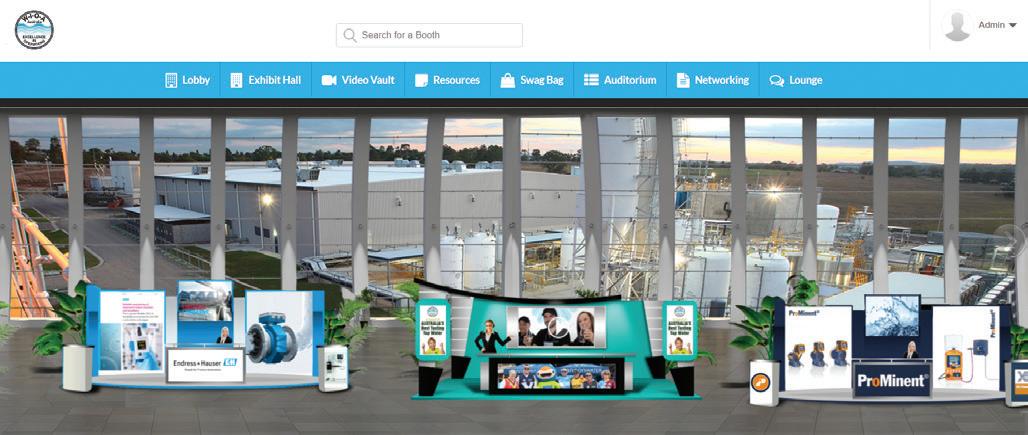
UTILITY • AUGUST 2020 WWW.UTILITYMAGAZINE.COM.AU 24
further information on all the happenings at WIOA, contact Craig Mathisen on 0457 846 008 or email craig@wioa.org.au. WATER OPERATIONS AND TREATMENT | Utility Partner Solutions

In the current absence of opportunities for face to face events, WIOA is excited to announce our virtual conference and expo platform Virtual Water.
In the current absence of opportunities for face to face events, WIOA is excited to announce our virtual conference and expo platform Virtual Water.
Virtual Water Schedule
Virtual Water Schedule

Renowned world water expert presenting on Day 1 Dr Steve Hrudey
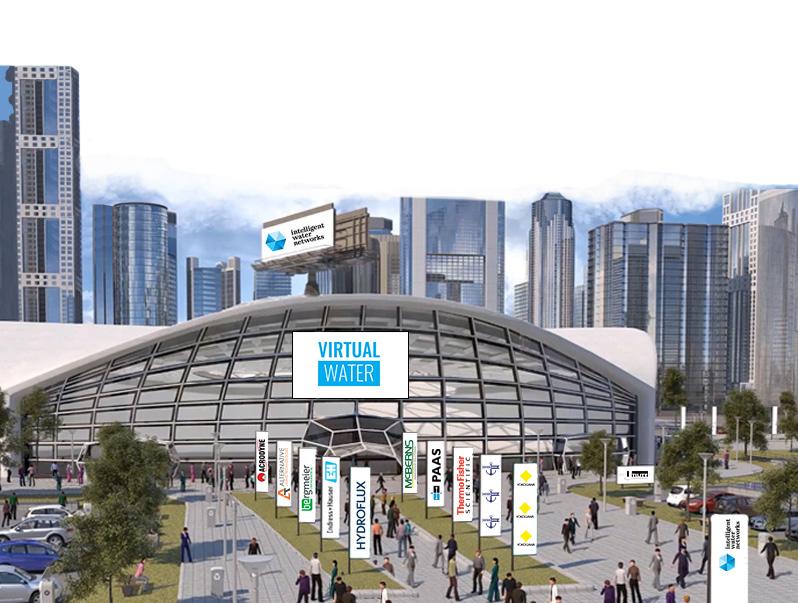
WIOA will host a minimum of 10 “live days” on the platform with the first day occurring on Wednesday 22 July 2020. Live Days will include keynote and technical presentations where speakers will deliver engaging and informative content.
WIOA will host a minimum of 10 “live days” on the platform with the first day occurring on Wednesday 22 July 2020. Live Days will include keynote and technical presentations where speakers will deliver engaging and informative content.
Expo Hall
Expo Hall
Over 40 exhibitors will fill the expo booths and their content will be available on the live days, will stay on the Virtual Water platform for 365 days. Sites will be accessible 24 hours a day, 7 days a week. Virtual Water
easy
navigate and provides a captivating experience. Attendees only need internet access, no downloads required. Sponsors Partner



Commences 22July 2020
Over 40 exhibitors will fill the expo booths and their content will be available on the live days, will stay on the Virtual Water platform for 365 days. Sites will be accessible 24 hours a day, 7 days a week. Virtual Water is easy to navigate and provides a captivating experience. Attendees only need internet access, no downloads required.




Partner







Expo Sites Available
Expo Sites
Available

Sponsors











2020


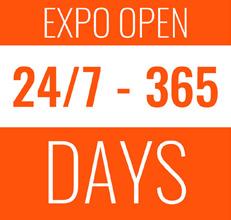










REGISTER NOW www.virtualwater.com.au PHONE 0457 846 008
is
rich and highly interactive 3-D virtual experience that
the feel of
physical event. Featuring streamed presentations with live Q&A and interaction with
on the expo floor, providing suppliers an opportunity to showcase their products and services through 2020.
Virtual Water
a visually
recreates
a
companies
REGISTER NOW www.virtualwater.com.au PHONE 0457 846 008
a visually rich and highly interactive 3-D virtual experience that recreates the feel of a physical event. Featuring streamed presentations with live Q&A and interaction with companies on the expo floor, providing suppliers an opportunity to showcase their products and services through 2020.
Virtual Water is
LIVE DAYS PLUS A FREE
is
to
REGISTER NOW FOR 12
EXPO
Virtual Water Conference and Exhibition
Commences 22July
FIRST 2 LIVE DAYS FREE
PROVEN TREATMENT TECHNOLOGY DELIVERS REDUCED COSTS AND OPERATIONAL EFFICIENCIES
In 2018, a regional water corporation in Victoria engaged FILTEC to design, supply, install and commission a new UV system to replace the existing disinfection system at one of its sewage treatment plants. FILTEC utilised its partnership with Trojan Technologies to optimise the operations and maintenance process for its customer.
The UV system had aged and was underperforming, and the treated effluent did not meet E. coli discharge requirements to be released to a local creek. There were spacing constraints for retrofitting the new UV unit as the existing shed was built around the old UV system.
Working closely with the water corporation, FILTEC designed a new system to optimise the operations and maintenance process.
The TrojanUV3000Plus was chosen because it is an open channel UV disinfection system. It has more flexibility for retrofitting, allowing the system to be installed outdoors with the removal of parts of the existing shed.
Furthermore, the Trojan solution allows easy replacement of lamps, and maintenance and repair work to take place without draining the whole system.
The new TrojanUV3000Plus not only treats water that meets the E. coli discharge requirements, but reduces operation and maintenance costs for the sewage treatment plant.
Prior to the upgrade, the UV system struggled to meet discharge requirements and the plant had to truck the effluent for disposal.
In addition, for maintenance and repair the utility had to drain the entire system, causing interruption and incurring costs. The upgrade has resulted in significant cost savings and operational improvements.

With over 25 years of experience in water and wastewater treatment, FILTEC is dedicated to delivering advanced engineered systems and cost-effective solutions for water and wastewater treatment projects throughout Australasia. Trojan Technologies has the largest UV disinfection installation base in the world.
If you have any questions, feel free to contact FILTEC at sales@filtecinternational.com.au or call +61 3 9543 5096.
Safer for drinking, safer for manufacturing, safer to put back into our environment.
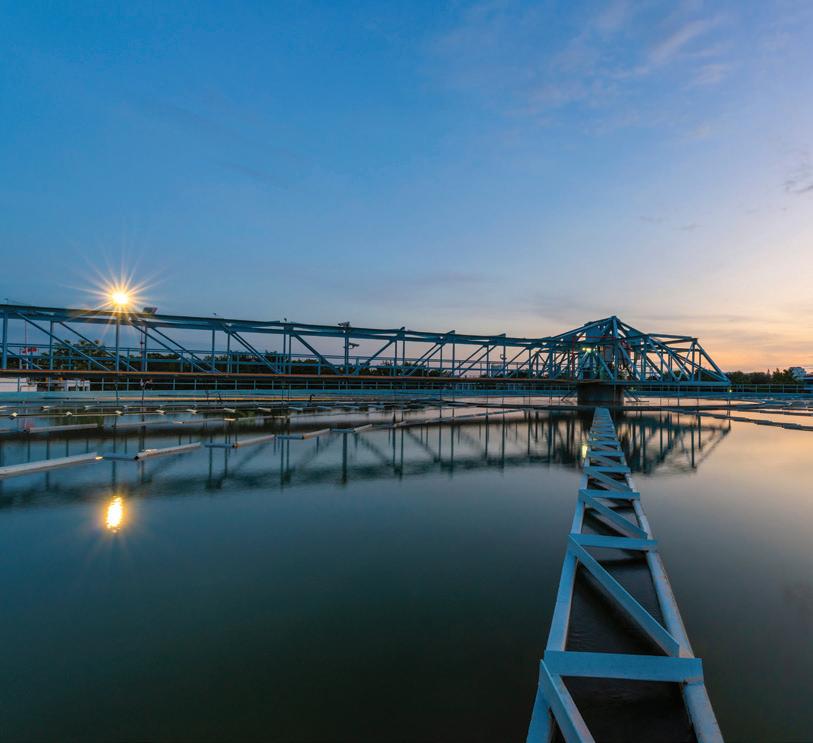
+61 3 9543 5096
sales@filtecinternational.com.au
www.filtecinternational.com.au
UTILITY • AUGUST 2020 WWW.UTILITYMAGAZINE.COM.AU 26
WATER OPERATIONS AND TREATMENT | Utility Partner Solutions
Making water safer
Envirosonic is a proven and powerful ultrasound system to control cyanobacteria in ponds, lakes and reservoirs without the use of chemicals

EnviroSonic facts
EnviroSonic technical
» Shear stress
» We control non-motile algae, which include all blue green algae at a higher rate than the reproduction rate.
» Can be installed in remote areas on solar pontoons, or with a small float near a mains power outlet.
» GSM is available.
» Envirosonic will save you money.
» Eliminates the use of toxic chemicals.
» Ultrasound is safe for all invertebrates, fish, animals, and plants.
- The powerful ultrasound waves between 15 and 50 kHz radiating out in a semicircle from the transducer at great speed subject the algae to extreme stress, causing the algal cells to collapse.
- The Envirosonic ES300 controls a semicircle area of 300 metres , with two units on a solar powered pontoon giving a 600 metre circle of control.
- The smaller ES50 unit mains powered controls an area of 50 metres semicircle, and is ideal for smaller pondages and fish stocked lakes
» Pulsed ultrasound
- Algae cell boundary layers become saturated with dissolved gases.
- Bubbles within the algae cells created by ultrasonic pressure collapse.
- Localised cellular cavitation from the ultrasound waves causes disruption of water molecules generating oxidising compounds... H2O2 and hydroxial radicals, which are short lived, but cause further disruption to algal cells.
About us
We are the sole distributor for EnviroSonic in Australia. EnviroSonic ultrasound has been successfully installed in horticulture, aquaculture, potable water and settlement ponds at locations including: Westernport Water, Tas Water, Tuki Trout Farm, Wauchhope Treatment Utility, Bendigo Council, Huon Salmon, Steggles Chickens, Murrumbidgee Irrigation, SEQ Water, Coliban Water and Golf Courses.
CONTACT: Peter Harries M: 0411 733 473
E: prharries@bigpond.com
www.envirosonic.com.au

ENSURING A CLIMATE-RESILIENT WATER SUPPLY FOR SOUTH EAST QUEENSLAND'S FUTURE WATER
Seqwater is the Queensland Government Bulk Water Supply Authority and is responsible for providing a safe, reliable and affordable drinking water supply to 3.2 million people across South East Queensland (SEQ). A resilient water supply is delivered through 1.8 million hectares of catchment and Australia’s first water grid, including 26 dams, 36 conventional water treatment plants, three purified recycled water treatment plants and one desalination plant. Seqwater’s extensive capital works and asset maintenance programs play a critical role in safeguarding water sources to meet the future needs of SEQ in a changing climate.
For Seqwater, maintaining and improving $12 billion of traditional and climate-resilient water supply assets is what continues to allow the utility to deliver approximately 280,000 million litres of drinking water a year for SEQ.
Approximately $8.2 million has been spent in the 2019-20 financial year on vital projects to improve the health of SEQ’s drinking water catchments.
Seqwater Chief Executive Officer, Neil Brennan, said investment in catchment management was an effective way of protecting the security of the region’s drinking water supply.
Mr Brennan added that about $5 million had been allocated to partnership projects, and Seqwater had been working with land care, natural resource management and conservation groups, local governments and directly with landholders across the region to deliver its program of catchment improvement works.
“These projects have taken place across a number of catchments across SEQ and include: riparian weed control and revegetation work, landslip remediation and bank stabilisation, on-site wastewater system upgrades and other on-farm improvements,” Mr Brennan said.
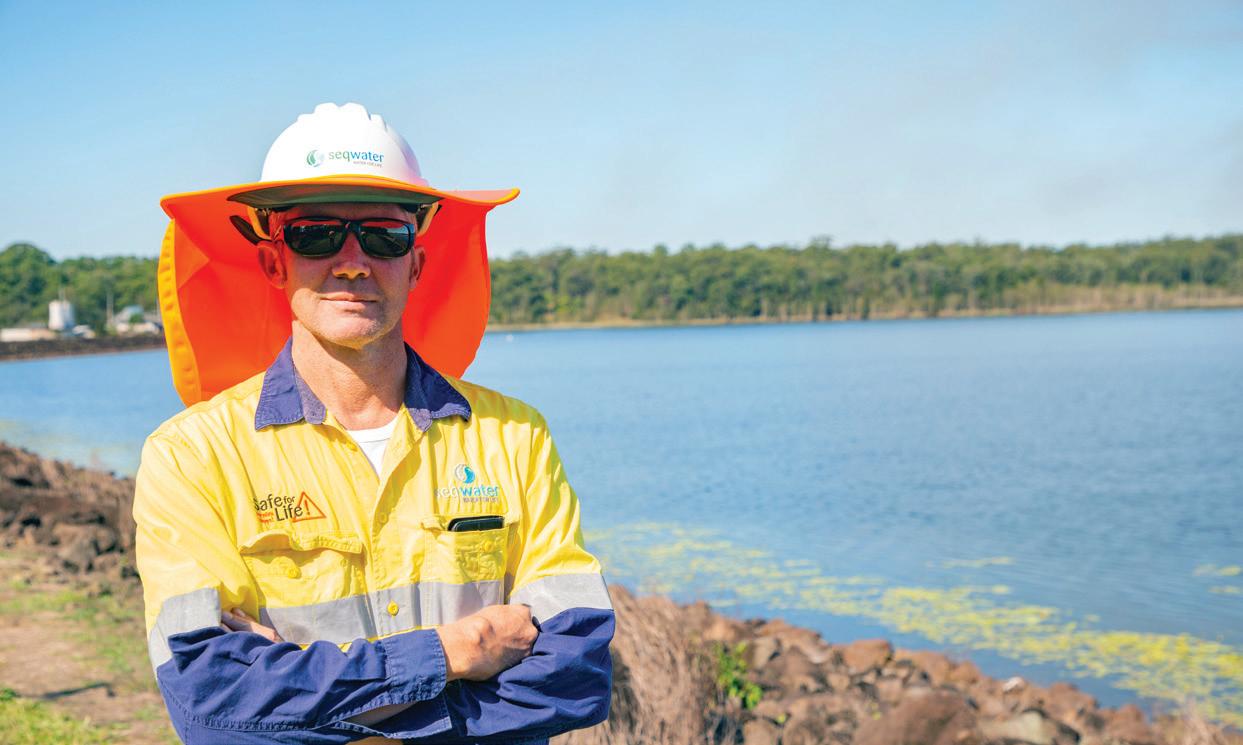
28 UTILITY • AUGUST 2020 WWW.UTILITYMAGAZINE.COM.AU
OPERATIONS AND TREATMENT
SEQWATER SENIOR PROJECT MANAGER, NIGEL SMITH, AT THE EWEN MADDOCK DAM WHICH IS CURRENTLY UNDERGOING AN UPGRADE.
“This work with the community to restore our drinking water sources and protect water quality, is going a long way to creating a safer, more reliable and cost-effective water supply.”
Mr Brennan said Seqwater’s catchments were one of the most highly-developed and ‘open’ in the country, with some areas containing farmland, rural properties, degraded waterways, industrial facilities and growing townships.
“Seqwater owns less than five per cent of the 1.8 million hectares of catchment lands,” Mr Brennan said.
“Water treatment starts on our catchments, and Seqwater works hard with the community to improve catchment health and protect the quality of water entering our water treatment plants.
“Through working with established catchment groups across the region to carry out these projects, it’s allowed Seqwater to tap into local knowledge and better connect with the communities we serve.”
Highlights of the 2019-20 partnership program include:
• $1.34 million to control heavy infestations of Cat’s Claw Vine and other priority weed species along waterways in six separate drinking water catchments
• $980,000 to deliver catchment improvement works in the Lake Baroon catchment, including weed control, hillslope stabilisation and improving agricultural practices
• $460,000 to deliver catchment improvement works along the Mary River, including fencing, weed control and dairy farm improvements
• $385,000 to deliver weed eradication works in the North Pine Dam catchment targeting the control and eradicate infestations of Cat’s Claw Vine and Chinese Celtis trees
• $380,000 to address the impacts of on-site wastewater systems in two drinking water catchments through awareness and grants programs, in partnership with local councils
• $330,000 to deliver catchment improvement works in the South Maroochy River near Poona Dam, including eradicating infestations of Madeira Vine and Cat’s Claw, landslip stabilisation works, revegetation and on-site wastewater system improvements
• $300,000 to implement on-farm improvement works in the Mid Brisbane River catchment, including gully erosion remediation and revegetation
• $185,000 to deliver catchment improvement works in the Lake Macdonald catchment, including fencing, targeted weed control, erosion repair works and landowner education
ENSURING A SAFE AND RELIABLE DRINKING WATER SUPPLY
To support its commitment to a safe, sustainable and efficient water supply, Seqwater is upgrading several of its water treatment plants.
The Mt Crosby Water Treatment Plants, both East Bank and West Bank combined, are critical to the operation of the SEQ Water Grid and can provide up to half the region’s daily water supply.
A $35 million filtration upgrade to the Mt Crosby East Bank Water Treatment Plant, located in Brisbane’s west, is underway to significantly improve its resilience to extreme weather events, climate change and enhance water supply security for SEQ.
WATER
The project, which commenced in March 2020 and is expected to take more than two and a half years to complete, will deliver major improvements to the plant’s filter design and control.
Aqseptence Group Australia was engaged by Seqwater to design, manufacture and install over 6km of Triton Underdrains for the Mt Crosby filtration upgrade project. Manufactured in Aqseptence Group's Brisbane facility, the Australian-made Triton Underdrain system offers superior performance, with increased filter capacity, longer filtration run and improved backwash effectiveness.
In light of the COVID-19 pandemic, suppliers such as Aqseptence Group are urging water utilities to support and work with local supply chains to minimise the impacts of the pandemic and ensure greater resilience in future.
Filters play an essential role in the water treatment process, assisting with clarifying water prior to disinfection.
The upgrade work will help the plant be better able to treat water with high levels of turbidity or sediment which can result from extreme rainfall events across the Wivenhoe catchment, washing soil and debris into the creeks and waterways.
Water treated at the Mt Crosby Water Treatment Plants comes from the Brisbane River, downstream from Wivenhoe Dam.
The SEQ Water Grid will be used to supplement Brisbane’s water supply while the refurbishment works are being undertaken. Works are being staged to ensure water supply is maintained, with six filters being taken offline at a time.
An $800,000 upgrade of the Kenilworth Water Treatment Plant commenced in June 2020, to improve the treatment process and treated water quality. The project is expected to take approximately four months to complete.
Mr Brennan said Kenilworth was one of 16 off-grid communities across SEQ, which meant it was not connected to the SEQ Water Grid and relied on local water sources.
“Without the availability of the grid, it’s important that our off-grid plants continue to operate safely and reliably to meet the water demand for these regional communities,” Mr Brennan said.
Construction is also now complete on Seqwater’s new water treatment plant in Linville, which began supplying locally-treated water to residents from April 2020.
Previously, the town was receiving water via tanker from Kilcoy since the old plant, built in 1970, flooded and was forced to close in 2013.
Mr Brennan said the new plant is larger than the previous building with improved water quality monitoring and more advanced treatment capabilities.
“The plant now includes improved water quality monitoring abilities, cartridge filtration and ultraviolet (UV) disinfection capabilities for added protection,” Mr Brennan said.
“Following the initial assessment, it was considered more economical, reliable and effective to construct a new plant to be able to ensure local water supply security into the future.”
MAINTAINING AND IMPROVING AN EXTENSIVE ASSET BASE
In addition to catchment management projects and water treatment plant upgrades, Seqwater has also been hard at work enhancing a variety of its other assets.
UTILITY • AUGUST 2020 WWW.UTILITYMAGAZINE.COM.AU 29
OPERATIONS AND TREATMENT

At the beginning of the year, a number of improvements were made to the Sparkes Hill Reservoir, which holds up to 16 per cent (94ML) of Brisbane’s water supply.
Mr Brennan said the need for improvements at Sparkes Hill were identified following an engineering assessment in 2018.
“The reservoir was originally constructed in the 1970s and just like our dams and treatment plants, these are long-life assets and require continual monitoring and maintenance.”
Work included improving the stability of the reservoir roof, designing and installing internal roof support brackets, strengthening internal columns and sealing the entire roof structure with a liquid membrane to better protect the stored drinking water.
In 2012-13, Seqwater commissioned an independent review, which found improvements are needed at many of its 26 regulated dams to meet Queensland’s dam safety guidelines and bring them in line with the latest engineering standards. Seqwater is carrying out improvement works at a number of its dams:
• Construction work on the $18 million Sideling Creek Dam upgrade was completed in May 2020, which included strengthening the main dam structure to better withstand extreme weather events. The upgrade has also delivered environmental improvements for the lake and surrounding catchment, including a redesigned area downstream from the spillway to create a defined passageway to allow fish to travel downstream
• Construction on the 18-month first stage of the $24 million Ewen Maddock Dam upgrade began at the end of March 2020 and involves raising and strengthening the existing embankment walls with significant improvements to the recreation area. The second stage will involve strengthening the existing spillway and will be subject to a separate tender process, with the timing of the Stage 2 works expected to be finalised by end of 2020
• Somerset Dam is one of several dams identified for upgrade as part of Seqwater’s Dam Improvement Program. The aim of the upgrade is to improve the dam’s ability to withstand extreme floods and earthquakes. At this stage, construction is expected to start in 2022 and will take up to four years to complete
• The Lake Macdonald Dam safety upgrade will involve building a new spillway and reconstructing the existing earth embankments to increase its resilience. Work has commenced to replace the road bridge to the Noosa Water Treatment Plant and the relocation of existing utilities and services. Construction of the
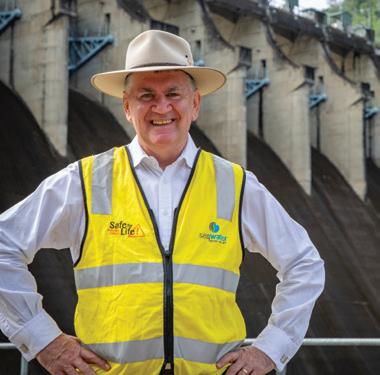
spillway is scheduled to commence in 2021 following the lake lowering, and is expected to take about two years to complete
• Planning is underway for the North Pine Dam upgrade. Lowering the full supply level of the dam to 68 per cent storage capacity until an upgrade is completed is a precautionary measure which will help reduce safety risks associated with rare and extreme flood events. No options have been finalised or decided at this time and further work is required. Seqwater is undertaking assessments and investigations to develop and review feasible options for further consideration
In March 2020, Queensland Natural Resources Minister, Dr Anthony Lynham, announced the construction of a $95 million, 27km pipeline to provide water security for Beaudesert households, businesses and industry.
The pipeline will connect to the two recently-built reservoirs at the existing Beaudesert Water Treatment Plant – and to the SEQ Water Grid – by 2022. Once connected, the local community will have access to up to 10ML of drinking water daily – more than double what is currently available.
A CLIMATE OF EXTREMES
Seqwater operates in a challenging and changing environment. Since the Millennium Drought, SEQ has experienced two large floods and a lengthy drought, and Queensland’s climate is expected to become increasingly variable.
The utility is involved in a research project that is using palaeoclimate data to better plan and prepare for extreme floods and droughts in Queensland. Palaeoclimate data, such as that found in ice cores, tree rings or corals, can extend hydroclimatic records by thousands of years, providing greater insight into what is possible in terms of drought frequency and duration.
The project provides an opportunity to develop a methodology to incorporate palaeoclimate proxy data into water security planning for Queensland. Specifically, it provides a methodology for the inclusion of this data into climate adaptation and water security programs by using specific case studies in Queensland. It also delivers an online database of all local and remote data that can be used for the purpose of modelling and managing flood and drought risk in Queensland under a changing climate.
Seqwater is also developing a business-wide Climate Resilience Strategy to deal with the many impacts of a changing climate. Seqwater has worked with the State Government in the development of the strategy
UTILITY • AUGUST 2020 WWW.UTILITYMAGAZINE.COM.AU 30
WATER OPERATIONS AND TREATMENT
CATCHMENT IMPROVEMENT WORK BEING UNDERTAKEN IN THE LAKE BAROON CATCHMENT, INCLUDING HILLSLOPE STABILISATION, WEED CONTROL AND IMPROVING AGRICULTURAL PRACTICES. SEQWATER CEO, NEIL BRENNAN.
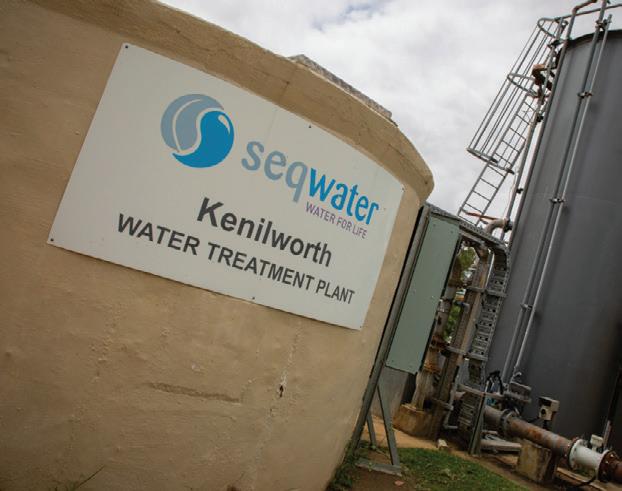
and it features as a case study within the Queensland Government’s own Climate Adaptation Strategy
In line with its legislative responsibility, Seqwater has developed and amended its Water Security Program – a long-term plan to manage water security across the region.
This program includes triggers for activating drought response and actions that aim to manage the water supply and demand to ensure that the region does not run out of water.
The biggest single change since the Millennium Drought has been the construction of the SEQ Water Grid which allows Seqwater to move treated drinking water around the region.
The connected water treatment plants and pipelines across the grid, and the availability of the Gold Coast Desalination Plant and the Western Corridor Recycled Water Scheme to respond to drought, means the region has more resources at its disposal than ever before to manage drought.
Seqwater also regularly monitors the level of water in its dams (the drawdown), rainfall frequency, duration and volume. This monitoring is compared to previous data to understand any significant changes.
For Seqwater, innovation is the key to working smarter, operating its water supply more efficiently and meeting the challenges of climate change and population growth as it plans for the region’s future. In December 2019, the utility became a member of WaterStart, a not-for-profit organisation that provides water innovation services to water management agencies, technology companies and policymakers to spur economic growth in the water sector.
Mr Brennan said the WaterStart partnership offered the opportunity to work with its retail customers in SEQ to identify common challenges and potential solutions, not only for SEQ but water providers across Queensland.
“One of the big attractions of working with WaterStart is the opportunity to leverage off technology solutions which have already been piloted, proven and implemented by WaterStart and its members in the US,’’ Mr Brennan said.
“Across the water sector there are a range of similar issues and challenges we all face. Our aim is to ensure that the outcomes of technology pilots and solutions identified are shared across Queensland, particularly in the smaller regional communities that may not have the resources to participate directly.
“The innovation we identify and implement, we want to be able to share for the betterment of the water sector across Queensland. The WaterStart platform will allow us to do just that.’’



UTILITY • AUGUST 2020 WWW.UTILITYMAGAZINE.COM.AU 31
AND TREATMENT Thank you Seqwater for supporting Australian Manufacturing. “A big thank you to Seqwater for selecting Aqseptence Group’s globally recognised (over 30000 m2 installed worldwide) Triton Underdrain™ technology for this iconic filter refurbishment project. By doing so, Seqwater has supported Australian manufacturing with a total of 14500 manufacturing hours delivered from our Brisbane facility” - Chris Susanto, Water Business Manager. Triton Underdrains™ Johnson Screens® Contact: Chee Terng Lee Business Development Manager Fast refurbishments Longer Asset Life Reduced Total Lifecycle Cost Improved Water Quality +61 413 845 181 +61 7 3867 5555 cheeterng.lee@aqseptence.com www.aqseptence.com UPGRADES TO THE KENILWORTH WATER TREATMENT PLANT COMMENCED IN JUNE 2020.
WATER OPERATIONS

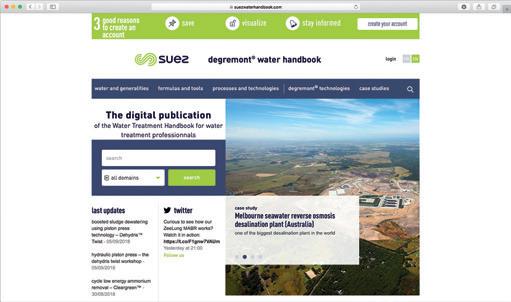
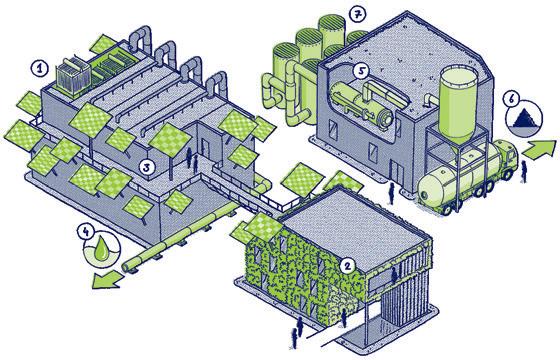
we can help water utilities reduce energy costs and improve operational performance

are you ready?
Energy costs can be a major drain on the operation budgets of water utilities, but smart digital network management tools can make a real impact on the bottom line. SUEZ’s AQUADVANCED® Energy is a unique system, which ensures high quality water is delivered where it’s needed at a minimum cost. By scheduling and automating the operation of pumps and valves in real-time, water utilities can bring down their energy costs while maximising their operational performance, water quality, and overall environmental outcomes. suez.com.au
IMAG04220
THE INDUSTRY CADETSHIP PUTTING PEOPLE FIRST
At Programmed, building outstanding people helps build strong customers, which in turn creates great communities. And for the company, that’s the reason it puts people first. It allows the company to provide its customers with people who are passionate about what they do and invested in giving back to the communities they work in and the customers they serve.
Working together with its customer, City West Water, Programmed launched a cadetship program for school leavers who wanted to experience water industry operations in a practical, hands-on manner. The cadets are exposed to all manner of work required around water networks, from being out in the field and working with specialist tools, to being in the office and assisting in project preparation for a smooth-running work site.
Christina Girvan, who joined the cadet program in water operations, started an apprenticeship in civil construction and is now a full-time Operations Support Officer. Ms Girvan assists in securing the required permits and plans all safety requirements before a task can be assigned.
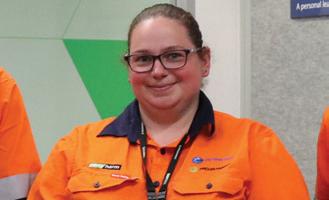
The program has opened a new avenue for Ms Girvan. Together with her supervisors, Ms Girvan will be developing a training program, sharing the knowledge she’s acquired around reading site maps and ascertaining the permits required for each site.
Christopher Croon, another participant in the cadetship program, started his journey in sewer operations and has now moved onto water operations to further develop his skills across the network.
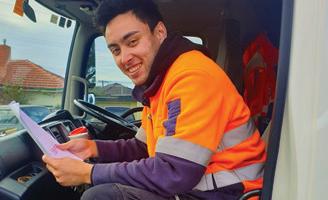
The cadetship training covers customer service to assist Programmed's technicians in managing and resolving customer complaints out in the field. This training is paramount to not only help set customer expectations, but also provide its technicians with the soft skills required in customer service.
Recently, its field sewer technicians were engaged in helping design new service vans. The wealth of knowledge within the technician team played an integral role in providing design ideas and practical advice on the build of the new vans.
The innovations put forward have provided the teams with the ability to be more responsive on their call-outs, and the designs helped future-proof the vans, giving the technicians confidence in their continued service delivery to customers.
Programmed is invested in training its people to help achieve their career goals. Recently, Brodie Doolan completed his Diploma in Facility Management, which was created in partnership with UNE Partnerships and the Facility Management Association of Australia (FMA).

Mr Doolan was particularly interested in the asset management component of the diploma, seeking to gain further knowledge and a deeper understanding of asset management in general, as well as Programmed’s approach to strategic asset management for its customers.
Mr Doolan has been able to tap into the wealth of knowledge of his supervisors and colleagues who served as mentors while he completed his diploma. The ability to see the theory in practice was also an excellent tool for Mr Doolan, and everyone at Programmed was more than happy to share knowledge.
Programmed continues to be supportive of its people, and looks forward to training more people who will serve communities and make us all stronger.

WATER OPERATIONS AND TREATMENT | Utility Partner Solutions
For more information, contact Programmed via info@programmed.com.au or visit programmed.com.au. 34
CHRISTINA
CHRIS
UTILITY • AUGUST 2020 WWW.UTILITYMAGAZINE.COM.AU
BRODIE

Programmed, your water partner.
Driving smart solutions for over 25 years in the water industry, Programmed uses a combination of data, backed with a culture of safety and customer focus, to deliver innovative network operations and maintenance solutions to our water customers.
Programmed also provides effective change management processes to optimise service delivery and customer experience, making us an expert in delivering the best results for your water network operation maintenance.
Download our Capability Statement to find out more.
fm.programmed.com.au
THE ART OF PUMP RELIABILITY: SEAL SOLUTIONS FOR LONGEVITY AND EASY INSTALLATION
Installation and maintenance of pumps within the water and wastewater industry comes with many challenges. Seal fatigue and breakdown inevitably leads to pump downtime, and with it the related substantial costs of labour and maintenance. Thankfully, advances in technology have brought proven solutions that can dramatically reduce seal installation time, pump maintenance and the likelihood of asset failure.
While mechanical seals only represent a small proportion of the overall acquisition cost of a pump, their failure can amount to significant expenditure. The key to reliability lies in maximising pump life, and this can be effectively achieved with two simple, yet highly effective, solutions.
The use of split seals and active throat bushing technology offers considerable improvement for overall equipment reliability. Used together, they enhance the seal environment with minimal or no-flush water requirements and dramatically decrease the efforts (and costs) spent on pump maintenance.
SPLIT SEAL TECHNOLOGY
Split seals are, as the name suggests, ones that are split into at least two elements. They perform the same role as standard mechanical seals and can be utilised in the same locations (on rotating equipment).
However, by far the greatest advantage offered is that there is no disassembly of the installed pump required to fit a split seal and no additional expertise is needed.
Other advantages include:


provides cooling, prevents abrasives from degrading the seal and reduces the build-up of solids.
Despite such efforts, it’s common for seals to fail, mainly due to ineffective cooling and poor lubrication.
Active throat bushing is a cutting-edge technology that addresses both the heat and contaminant issues in one simple solution as follows:
• Removes particulate contamination from the stuffing box and away from the seal
• Allows air to escape the stuffing box upon flooding
• Creates effective circulation around the seal to minimise heat build-up
The advantages of this technology are far-reaching:
• Dramatically simplifies operations
• Saves money from constant seal replacements
• Provides environmentally responsible practice
• Provides a virtually leak-free seal for an extended period of time (typically measured in years)
• Eliminates excessive shaft/sleeve wear
• Offers slurry sealing capability
• Minimises the corrosion of assets
• Decreases flush water usage and the associated costs
• Significantly increases ROI
Chesterton is the leader in split seal technology with the largest installed base globally.
ACTIVE THROAT BUSHING TECHNOLOGY
The environment around the seal has a direct impact on its lifespan and reliability, with the two biggest issues being contamination and heat. The traditional approach is an external flush – generally water – with the hope that this
For water and wastewater processing, the advantages of these dual technologies are nothing short of remarkable. Both are proven and in use on a global scale, offering substantial savings on energy, running costs and asset maintenance. Such value-driven solutions are an essential element for the optimal operation of a plant’s critical assets.
Chesterton solutions for water and wastewater treatment operations have been implemented around the world with documented success and recognition. Visit chestertonrotating.chesterton.com/en-us/ IndustryApplications/Pages/WaterAndWasteWater.aspx to discover the Chesterton portfolio of products that effectively decrease sealing installation time and pump maintenance, ensuring asset productivity that’s crucial in today’s competitive market.

Download this free e-book and keep your pumps running reliably for longer! Go to infochestertonrotating.chesterton.com/water-wastewater-ebook

UTILITY • AUGUST 2020 WWW.UTILITYMAGAZINE.COM.AU 36
WATER OPERATIONS AND TREATMENT | Utility Partner Solutions
PROVIDING SOLUTIONS FOR:
• Municipal Sewage Treatment
• Commercial & Industrial Estates
• Government Projects
• Residential Developments
• Urban Subdivisions
• Resorts & Caravan Parks
• Mining Accommodation
• Airports & Infrastructure
• Service Stations
• Defence Assets



1800 057 771 | truewateraustralia.com
SEWAGE & WASTEWATER SPECIALISTS
CONSULTANCY • DESIGN • MANUFACTURE • INSTALLATION • MANAGEMENT
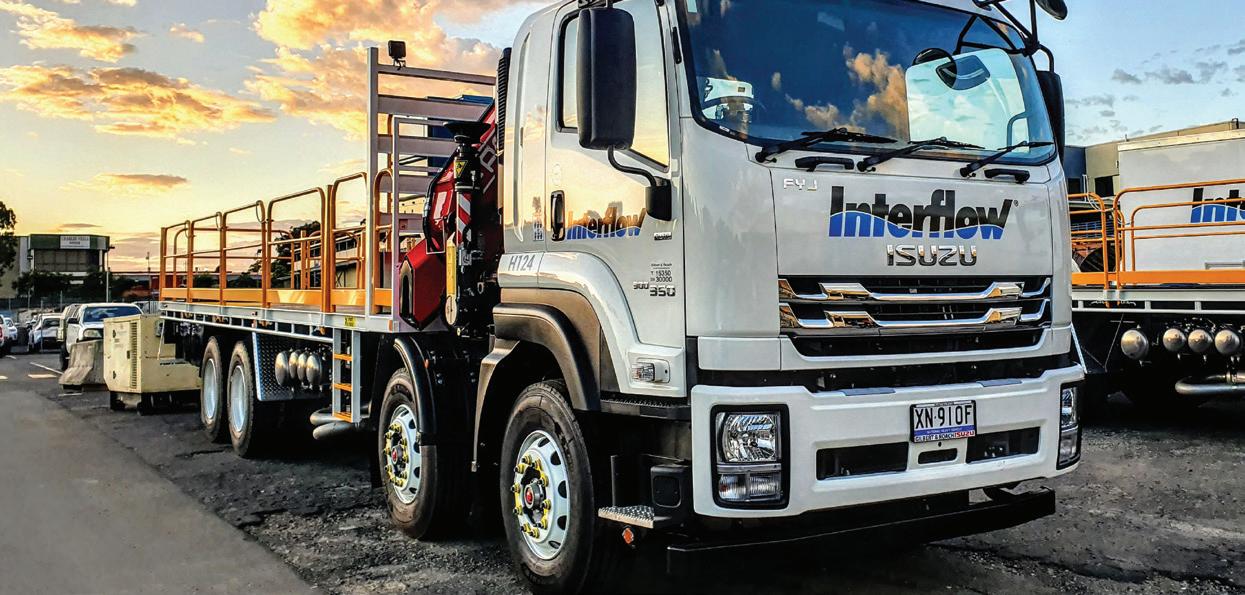
‘Shovel ready’
ESSENTIAL SERVICES MAKE HEADWAY DURING COVID-19
While Australia slowly enters a progressive relaxation of COVID-19 restrictions, stimulus plans are being rolled out to sustain businesses across the nation. The construction sector is a key focus, placing ‘shovel ready’ projects in the limelight to help revive our slowing economy. With its crews on the frontline building some of the largest pipelines across Australia and New Zealand, specialist in water infrastructure, Interflow, has been spearheading ‘shovel ready’ essential service projects for communities across Western Australia.
Providing end-to-end solutions for water networks across Australia and New Zealand, Interflow is a self-performing contractor, employing over 600 people to carry out works in the planning, design, construction and maintenance phases of pipeline infrastructure within water, wastewater, stormwater and road and rail culverts.
The COVID-19 pandemic has compelled essential service providers like Interflow to develop swift and innovative ways of meeting the nations' water infrastructure needs. The company’s crews are constantly on the frontline, building magnificent feats of engineering in the most extreme conditions. As such, the ability to rapidly respond to urgent infrastructure needs is now more important than ever.
READY TO MOBILISE
Interflow’s Business Development Manager – Western Australia, Steven Paradiss, emphasises how ‘shovel ready’ projects can boost the economy, even in the most remote regions in Western Australia.
“Our ‘shovel ready’ programs enable us to immediately mobilise at any time,” he said.
“This allows us to provide essential water and sanitation services to rural, regional, peri-urban and urban areas in Western Australia.”
Interflow’s fully resourced team in Western Australia has the capacity to commence an infrastructure project’s

start-up phase without compromise to the contract’s commencement date.
“Our team’s ability to ‘hit the ground running’ will enable us to build and renew essential water infrastructure for the Western Australia community before Australia reopens,” Mr Paradiss explained.
A SMART APPROACH TO STIMULUS FUNDING
For asbestos cement (AC) pipe relining programs, current forecasts estimate that capital expenditure necessary to keep up with failure rates of AC pipes is expected to increase in both Australia and New Zealand over the next 20 years.
“An AC pipe can be relined using trenchless methods. This means there is no dig-up required and our customers’ assets are and left in the ground undisturbed,” Mr Paradiss said.
Coined as a ‘smart solution’, Interflow’s trenchless approach allows a utility's asset to be renewed with
no open excavation and minimal disruption to the environment and the community. It also avoids hazardous waste disposal issues.
Mr Paradiss also emphasised that by avoiding traditional open-cut excavation methods, Interflow’s trenchless solutions provide local governments with an economically viable solution.
“Our trenchless method of AC pipe renewal is a prime example of a fast initiative to help reboot the economy – it reduces costly excavation, halves the completion time compared to traditional open-cut methods, and enables businesses and communities to carry out their regular activities.”
HARNESSING INNOVATION DURING COVID-19
As an essential service provider, Interflow has had to adapt quickly to restrictions and new ways of doing things.
When looking at this flexibility through a ‘smart spending’ lens, the company is consistently developing end-to-end solutions that breathe life into customers’ water infrastructure networks for generations to come.
“We take a holistic approach to solving our customers’ problems,” Mr Paradiss said.
“If customers have an emergency, we’re here. If they need a bespoke solution, we can design it, and if they need a long-term plan that will get the most value out of their stimulus plans, we’ll help them.”
UTILITY • AUGUST 2020 WWW.UTILITYMAGAZINE.COM.AU
38 WATER OPERATIONS AND TREATMENT Utility Partner Solutions


www.interflow.com.au mail@interflow.com.au Locations throughout Australia and New Zealand
Putting feet on the ground to rebuild Australia’s water networks
IF YOU’RE SEARCHING FOR A SOLUTION ON YOUR JOB SITE…
OR YOU’RE JUST KEEN TO SEE WHAT MILWAUKEE’S LATEST PRODUCTS CAN DO FOR YOU, REACH OUT TO OUR JOB SITE SOLUTIONS TEAM
At Milwaukee, we’re dedicated to providing trade solutions for professional users. Our mission is and always has been to improve the lives of every trade on every site.
We know our tools are used on the harshest and most demanding sites across the globe, so we make it our business to get on site and learn firsthand how professional trades are tackling the challenges on site.
By working closely with our users, we stay one step ahead of the ever-changing demands of job sites. This connection ensures our solutions are more efficient, more productive and safer to use – most importantly improve the lives of our users.
The Milwaukee Job Site Solutions (JSS) team consists of experienced, trade-focused solution specialists. The team offer speciality knowledge across industries including utilities, industrial and residential sectors. While the team includes plumbers, electricians and builders who all understand the demands of a modern professional job site.
Working closely with professional tradespeople across the country, the JSS team members bring expert knowledge and cutting-edge technology with them – ensuring the selection of tools our users have on hand, their ways of working and their site’s efficiency and safety are maximised.
Discover
more about
and the solutions we can offer to your
to
or
a
online
Milwaukee’s JSS program
business. Speak
our dedicated team
request
site visit
milwaukeetool.com.au/jobsite-solutions
1300 645 928
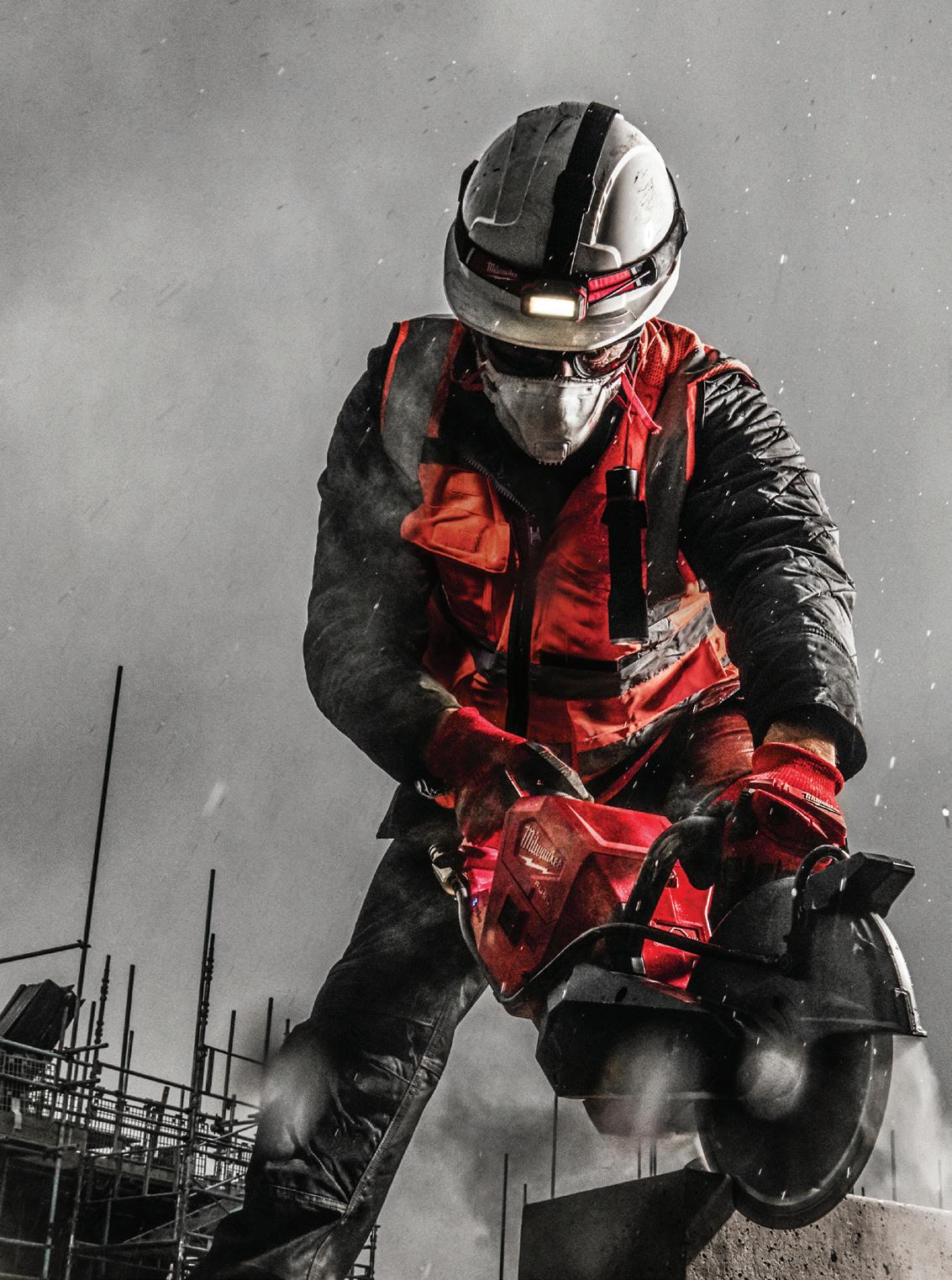
CITY WEST WATER
STORMWATER LEADS THE WAY IN STORMWATER HARVESTING
City West Water is leading the way in developing and implementing innovative stormwater harvesting projects supporting healthy, green spaces across Melbourne’s western suburbs and lessening the demand on the city’s precious drinking water.
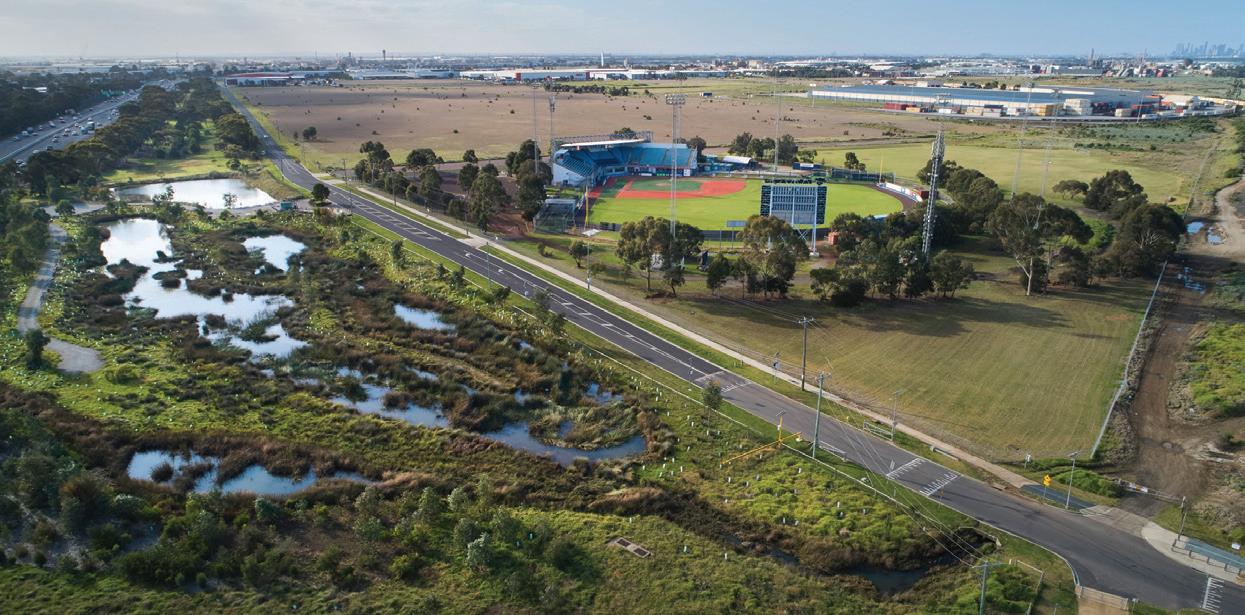
UTILITY • AUGUST 2020 WWW.UTILITYMAGAZINE.COM.AU 42
LAVERTON WETLAND AND MELBOURNE BALLPARK (STATE BASEBALL SOFTBALL CENTRE).
Stormwater harvesting involves collecting stormwater runoff from urban areas for treatment, storage and irrigation of open spaces. This water otherwise would flow down the drain and into Port Phillip Bay. Stormwater harvesting prevents stormwater pollution and litter from entering local waterways.
Not only does stormwater harvesting help to save hundreds of millions of litres of drinking water each year by providing an alternative water supply for irrigation, it also helps to promote water sustainability and to develop thriving green open spaces for community use.
City West Water’s Managing Director, Maree Lang, said the water corporation was partnering with a range of stakeholders to co-invest in developing sustainable stormwater harvesting projects.
“These projects aim to improve the health and wellbeing of our community, increase liveability, create greener open spaces and reduce our reliance on our drinking water resources for irrigating sporting reserves and recreational parklands,” she said.
“Our customers expect us to provide reliable services and this is one way we are managing our water resources for long-term security, in the face of our changing climate and a fast-growing population.
“Our collaborative stormwater harvesting projects will also encourage greater physical and recreational activities, and ultimately improve health outcomes for our community.”
CITY WEST WATER’S STORMWATER HARVESTING PARTNERSHIPS
Stormwater harvesting partnerships are one of the ways City West Water continues to deliver impactful projects that save drinking water and help improve community liveability.
City West Water currently has six stormwater harvesting projects in operation, supplying up to 285 million litres of stormwater per year for irrigation of sport grounds and public open spaces. These projects include:
• Laverton Stormwater Harvesting Project
• Afton Street (Aberfeldie) Stormwater Harvesting Project
• Green Gully Reserve Stormwater Harvesting Project
• Paisley Park (Altona North) Stormwater Harvesting Project
• Keilor Public Golf Course Stormwater Harvesting Project
• Lake Caroline Stormwater Harvesting Project
City West Water also committed to delivering six more stormwater harvesting projects through its Stormwater Harvesting Partnering Fund, which has enabled the utility
to partner with councils and organisations to co-fund stormwater harvesting projects for open spaces, parks and sports fields in the region.
“These projects will supply over 100 million litres of stormwater per year for irrigation of public open spaces, delivering greener local parks and sporting ovals across our service area,” Ms Lang said.
“Each initiative is a strong example of how we’re working with local councils and organisations to enhance the health and prosperity of the local community.”
Projects underway or recently completed include:
• Melbourne Tennis Centre (Melbourne & Olympic Parks)
• Melbourne Ballpark (State Baseball Softball Centre) in Altona
• Woodlands Park in Essendon
• Balmoral Park in Derrimut
• Edinburgh Gardens in Fitzroy North
• Arndell Park in Wyndham
“Our partners recognise that, as a community, we have a shared responsibility for the urban water cycle and our joint funding of these projects demonstrates this commitment in action.”
For further information, visit www.citywestwater.com.au/stormwater or read below for an overview of some of the projects.
MELBOURNE BALLPARK (STATE BASEBALL SOFTBALL CENTRE) STORMWATER HARVESTING PROJECT
The Melbourne Ballpark Stormwater Harvesting Project involves the construction of a 300m pipeline to supply stormwater harvested from the nearby Laverton Stormwater Harvesting Scheme (SWHS) to irrigate the centre’s reserves.
Before this project, the centre relied on drinking water for irrigating its fields.
The water harvested from the Laverton SWHS will now supply ten million litres of stormwater a year, enough to meet the centre’s current demands for both its main and outer playing fields.
This project is delivered in partnership with Melbourne Ballpark, Hobsons Bay City Council, Melbourne Water and the Department of Environment, Land, Water and Planning (DELWP).
UTILITY • AUGUST 2020 WWW.UTILITYMAGAZINE.COM.AU 43
STORMWATER
STORMWATER
WOODLANDS PARK (ESSENDON) STORMWATER HARVESTING PROJECT
In partnership with Moonee Valley City Council and Melbourne Water, the Woodlands Park Stormwater Harvesting Project includes upgrading the existing ponds into a functional wetland, increasing the capacity and performance to treat stormwater at the site.
The harvested water is treated naturally within the wetland system prior to undergoing a final filtration treatment and ultraviolet disinfection before being used to irrigate open spaces and native vegetation.
This high-quality water is also being used to enhance and sustain both the aquatic wildlife and native habitat within and around the surrounding wetland.
The works have the capacity to harvest over 53 million litres of stormwater per year, of which 12 million litres will be used to irrigate the parkland.
MELBOURNE TENNIS CENTRE (MELBOURNE AND OLYMPIC PARKS) STORMWATER HARVESTING PROJECT
Thanks to the thoughtful design and construction of a 380m long pipeline at the precinct as part of this project, 12 million litres of stormwater per year will be diverted from discharging to the Yarra River and instead be distributed across the 44-hectare site.
Stormwater from the various catchments is captured in a 4.5ML underground storage tank, where it is treated before
being distributed to various locations for use as required. This helps to keep the multi-purpose site green and thriving while offsetting the use of drinking water.
The scheme also significantly minimises the pollution and nutrient load from water that could potentially harm the Yarra River and helps to protect the environment across the gardens, public spaces and recreation fields that Melbourne and Olympic Parks manages.
BALMORAL PARK (DERRIMUT) STORMWATER HARVESTING PROJECT
City West Water has partnered with Brimbank City Council and Melbourne Water to construct the Balmoral Park Stormwater Harvesting Scheme in Derrimut to irrigate two local sporting ovals, with an option to further irrigate the sports oval at Derrimut Primary School.
The project receives water from two nearby Melbourne Water drains to irrigate the sporting ovals, reducing reliance on drinking water by up to 20 million litres per year.
The project is expected to increase water security for the current and future green infrastructure of Balmoral Park, assisting in reducing pollution from downstream waterways and supporting the potential for the future growth of the nearby school.
It further aims to raise awareness of conservation areas and the benefits of sustainable water management, while supporting community health and wellbeing by providing a usable space year round.

UTILITY • AUGUST 2020 WWW.UTILITYMAGAZINE.COM.AU 44
WOODLANDS PARK


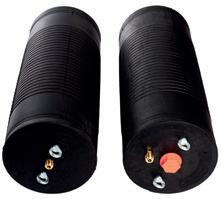

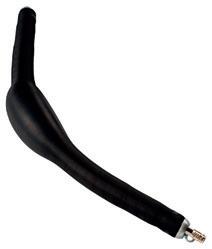
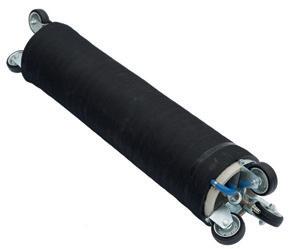
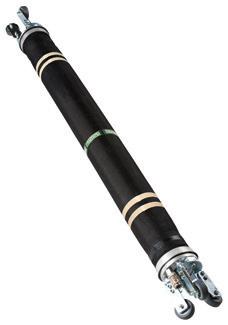
UTILITY • AUGUST 2020 WWW.UTILITYMAGAZINE.COM.AU 45 KRE ENGINEERING SERVICES PIPE LINE MAINTENANCE SPECIALISTS (02) 9522 4922 - mick@kre.com.au, keith@ kre.com.au UNIT 32, 205 PorT HACkINg roAd MIrANdA NSW 2228 / AUSTrALIA Pipe plugs & Packers For repair of damaged pipeline sections & joints STORMWATER A BIRDS-EYE VIEW OF BALMORAL PARK’S NEW WATER STORAGE TANKS THAT WILL HELP DELIVER UP TO 20 MILLION LITRES OF IRRIGATION EACH YEAR TO THE PARK’S SPORTS FIELDS AND GARDENS. CREDIT: BRIMBANK CITY COUNCIL.
Bioenergy: THE MISSING PIECE IN THE ENERGY PUZZLE

UTILITY • AUGUST 2020 WWW.UTILITYMAGAZINE.COM.AU 46
MANAGEMENT
WASTE
SHAHANA MCKENZIE, CEO, BIOENERGY AUSTRALIA.
Bioenergy is energy derived from plants, animals, and their by-products and residues. It is the only renewable source that can replace fossil fuels in all energy markets – in the production of heat, electricity and fuels for transport. As the peak body representing Australia's bioenergy sector, Bioenergy Australia is working hard to increase awareness of bioenergy as a sustainable energy solution and an essential component in reaching carbon neutrality by 2050.
Agriculture, farming, human habitation and forestry generate crop waste and remains, manures and sludges, rendered animal fats, used oils, and timber residues.
These products are known collectively as biomass, which can be converted into bioenergy to provide power for our cities and industries, liquid biofuel for our planes and automobiles and biogas which can heat our showers, and warm and cool our homes.
Shahana McKenzie, CEO of Bioenergy Australia, said that the national industry association is committed to accelerating Australia’s bio economy.
“Our mission is to foster the bioenergy sector to generate jobs, secure investment, maximise the value of local resources, minimise waste and environmental impact, and develop and promote national bioenergy expertise into international markets,” Ms McKenzie said.
“We support the growth and competitiveness of the bioenergy sector in the following ways:
• Advocating – with our members, we anticipate and develop leading positions on issues of concern to the advancement and growth of bioenergy in Australia
• Campaigning – we raise the profile of the industry within the media and broader community to achieve a greater level of understanding about bioenergy and the vital role it must play to achieve carbon neutrality by 2050
• Informing – we publish reports, webinars and articles to help our members keep ahead of industry trends and opportunities
• Connecting - we facilitate knowledge exchange and networking for members through task-specific meetings, our annual conference and webinars. We link investors with emerging businesses; researchers with technology developers; government with innovators
“We also administer Australia's participation in the International Energy Agency (IEA) Bioenergy organisation, and our industry groups bring together specialists in specific fields.”
In November 2019, the Australian Renewable Energy Agency (ARENA) announced that its board had agreed to a request from the Federal Minister for Energy and Emissions Reduction, Angus Taylor, to invest in the development of a roadmap to identify the role that the bioenergy sector can play in Australia’s energy transition.
The Bioenergy Roadmap will help to inform the next series of investment and policy decisions in the bioenergy sector in Australia, and will be an important input into the Federal Government’s Technology Investment Roadmap
The Bioenergy Roadmap also has the potential to help capitalise on opportunities to enhance Australia’s energy security and help it meet its emission reduction obligations.
Stakeholders in Australia’s bioenergy sector, including businesses, research groups, industry associations, community groups and individuals, were all invited to submit their input on the development of the Bioenergy Roadmap before 29 May 2020.
Ms McKenzie said that the roadmap will identify how Australia can leverage the significant and multi-faceted opportunity bioenergy presents – with the potential to attract a minimum of $3.5-5 billion in investment, mostly in regional economies.
“It presents a significant opportunity for Australia to invest in developing domestic industries such as the bioenergy sector for significant and sustained job creation, and economic stimulus, while also boosting our self-sufficiency in fuel, gas and energy and other key industries – for example, in the production of high-value products and chemicals such as medical-grade ethanol used in hand sanitiser.”
DEVELOPING POLICY THAT SUPPORTS A PATH FORWARD FOR BIOENERGY
Bioenergy Australia welcomes the development of the Bioenergy Roadmap and as part of its submission, has recommended two key mechanisms to support the development of bioenergy in Australia – a national Clean Futures Target and a market-based Bio Industries Fund.
UTILITY • AUGUST 2020 WWW.UTILITYMAGAZINE.COM.AU 47
WASTE MANAGEMENT
Ms McKenzie said that the COVID-19 pandemic has highlighted supply chain vulnerabilities and demonstrated that things we thought impossible are indeed possible.
“We have been presented with an unprecedented opportunity to develop our economy and create a better Australia for the future. This is a significant opportunity for our government to show strategic leadership and deliver meaningful outcomes for our nation,” Ms McKenzie said.
A Clean Futures Target would embody the opportunity for decarbonisation of the national transport, gas and heat sectors. Such a program would deploy a similar approach to the Renewable Energy Target which was highly successful in supporting decarbonisation of the electricity sector. The proposal would be to implement:
1. A Clean Fuels Target with a 10 per cent reduction in transport-related greenhouse gas (GHG) emissions relative to 2020 levels by 2030, with individual annual and fuel type targets to be set after appropriate modelling
JANDAKOT BIOENERGY PLANT, WESTERN AUSTRALIA.
CREDIT: DELOREAN ENERGY.
2. A Renewable Heat Target which recommends that the use of renewable biomass should extend to the generation of heat energy (e.g. process steam for drying in papermaking or sawmills) as well as electrical energy
3. A Green Gas Target which would establish a near-term aspirational target for cost-effective renewable gas injection into the gas networks by 2030
4. A Net Zero Organic-to-Landfill Target where instead of being disposed to landfill, organic waste would be collected and converted into higher-value products, such as biogas or biomethane, pyrolysis gas and biochar
5. Emissions Reduction Fund (ERF)/Climate Solutions Fund (CSF) Jobs Target where there is the potential to make minor amendments to the existing and already funded ERF/CSF program to unlock many bioenergy and circular economy projects and jobs
“In addition to the Clean Futures Target, the Bio Industries Fund would align to the outcomes of the Federal Government
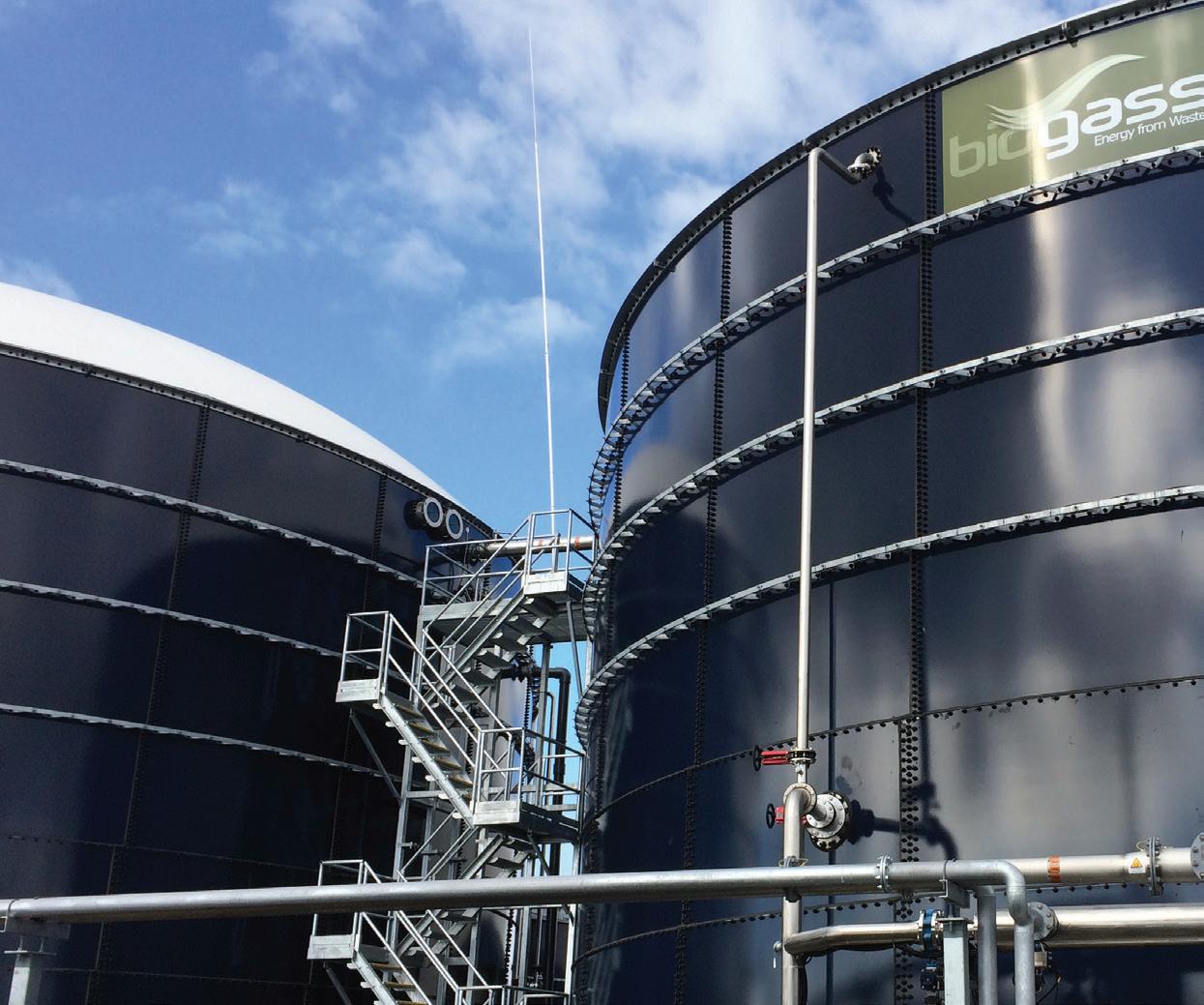
UTILITY • AUGUST 2020 WWW.UTILITYMAGAZINE.COM.AU 48
WASTE MANAGEMENT
Bioenergy Roadmap and would ensure that projects can progress immediately. There are a range of ways the fund could be created and delivered, and we would welcome the opportunity to discuss this further with the government,” Ms McKenzie said.
The development of an Australian Bio Industries Fund would provide opportunities for bioenergy support in the following areas:
• Upgrading existing facilities to increase productivity, reduce costs or emerge into new industries
• Undertaking feasibility assessments for converting low-value residues into new energy products under a circular economy approach
• Undertaking new project development of replicable lowcost, high-value projects such as anaerobic digesters for local councils, food and agriculture processing facilities and wastewater treatment

THE IMPORTANCE OF TRANSITIONING TO A CIRCULAR ECONOMY
Ms McKenzie said that effective utilisation of organic waste to produce energy can play a central role in the national transition to a circular, low-carbon economy.
“As the world population grows and new industrial and developed areas expand, both in absolute and relative terms, the linear economy will move towards constraint of supply of materials, including food,” Ms McKenzie said.
“This may lead to economic hardship, human suffering and conflict. A circular economy is restorative and regenerative by design, and aims to keep products, components and materials at their highest utility and value, at all times.
“A bio economy is circular by nature as it regenerates CO2 and encompasses the conversion of renewable biological resources into high-value products and chemical building blocks, fuels, power and heating via mature or innovative technologies.
“Therefore, a bio economy can significantly contribute to the circular economy by being a supplier of renewable energy (primary sources + side streams), materials that can be well cascaded (wood, fibres) and even feedstock for plastics.”
In June 2020, Bioenergy Australia delivered an open letter to the Federal Government, signed on behalf of thousands of organisations including AusNet services, Energy Networks Australia, Gippsland Water, Jemena, Sydney Water and the Water Services Association of Australia, advocating for biomethane injection into gas distribution networks.
According to Ms McKenzie, this is the first time a diverse cross-sector has come together to call on the government to recognise the potential of biogas, and in particular biomethane, as a gas with a chemical composition very similar to natural gas.
The letter urges the government to recognise the role that biogas can play in solving energy market decarbonisation challenges, while providing the lowest-cost transition to a decarbonised energy system.
A landmark report commissioned by Bioenergy Australia in 2019 on the availability of biogas in Australia identified 371PJ of available energy, which is enough to decarbonise industrial, commercial and residential gas users currently supplied by distributed gas networks across Australia.
The report provides nine recommendations to overcome the challenges facing the emerging industry, which include the need for more favourable policy conditions to enable the growth of a mature and sustainable biogas industry in Australia.
“As part of our advocacy strategy, Bioenergy Australia has created the Renewable Gas Alliance in order to develop leading positions on topics of concern to the advancement and growth of bioenergy in Australia,” Ms McKenzie said.
“We have invited the utility companies to sit on this taskforce to assist us in developing a position and strategy when speaking with government and government-led bodies on how to support this sector.
“Each organisation can bring specific expertise or support towards the development of a strong bio economy. We act as the glue between all the various stakeholders to ensure a strong and consistent work towards the same aim.”
UTILITY • AUGUST 2020 WWW.UTILITYMAGAZINE.COM.AU 49
WASTE MANAGEMENT
CHEMICAL DOSING TO TARGET PLUMATELLA
Bryozoans are colonial organisms found in oceans, lakes and streams around the world. While bryozoans are non-toxic and do not pose a health risk to humans or animals, they do grow quickly – in the right conditions they can double in size in a week –and can clog pipes and filters in irrigation systems. After consultation with its irrigation customers, Lower Murray Water (LMW) approached Polymaster to design and deliver a chemical tank for storing and dosing hydrogen peroxide, which is effective in the management of a type of bryozoan called Plumatella.
Operating along the Murray River, from Kerang to the South Australian border, in the municipalities of Gannawarra, Swan Hill and Mildura, LMW provides this extensive region with urban water supply and sewerage treatment; river quality water for stock and irrigation.
Following feedback from irrigation customers regarding blocked filters, LMW has undertaken a water quality program in Merbein, Red Cliffs C Sub and Mildura Benetook irrigation systems, targeting Plumatella.
Plumatella, a type of bryozoan, is an organism found in oceans, lakes and streams. Whilst important in natural freshwater environments such as the Murray River, it can become a nuisance in irrigation systems by blocking pipes and filters.
Low levels of hydrogen peroxide will be dosed into raw water pipelines in the three regions, in winter when flows are lower, to target the colonisation of Plumatella early in the irrigation season.
DEVELOPING A CUSTOMDESIGNED DOSING SYSTEM
To carefully manage the dosing of hydrogen peroxide into the flow of irrigation water, LMW required a dosing system that included a bunded chemical tank, lockable cabinets for site safety and space for an integrated power control unit at each of the three sites.
Working closely with LMW, Polymaster designed and manufactured a double-walled 3,300L Bunded Chemical Tank to store and dose hydrogen peroxide. These double-walled chemical tanks are the ideal solution
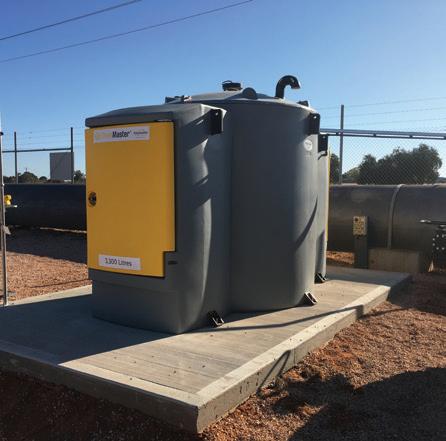
because the double wall feature saves time and space on site, compared to traditional concrete bunds.
Attached to the tank are two lockable cabinets; one housing an infill system with a power control which prevents overfilling of the tank and protects the safety of the operators. The second cabinet contains the dosing system to accurately measure and dose the chemical into the pipeline.
The system was fully designed by Polymaster’s engineering and design team. The design ensured the solution complied with Australian standards and client requirements.

For more information, visit www.polymaster.com.au.
UTILITY • AUGUST 2020 WWW.UTILITYMAGAZINE.COM.AU IRRIGATION | Utility Partner Solutions 50

SMART USE OF WATER CULTIVATING COOLER, GREENER CITIES
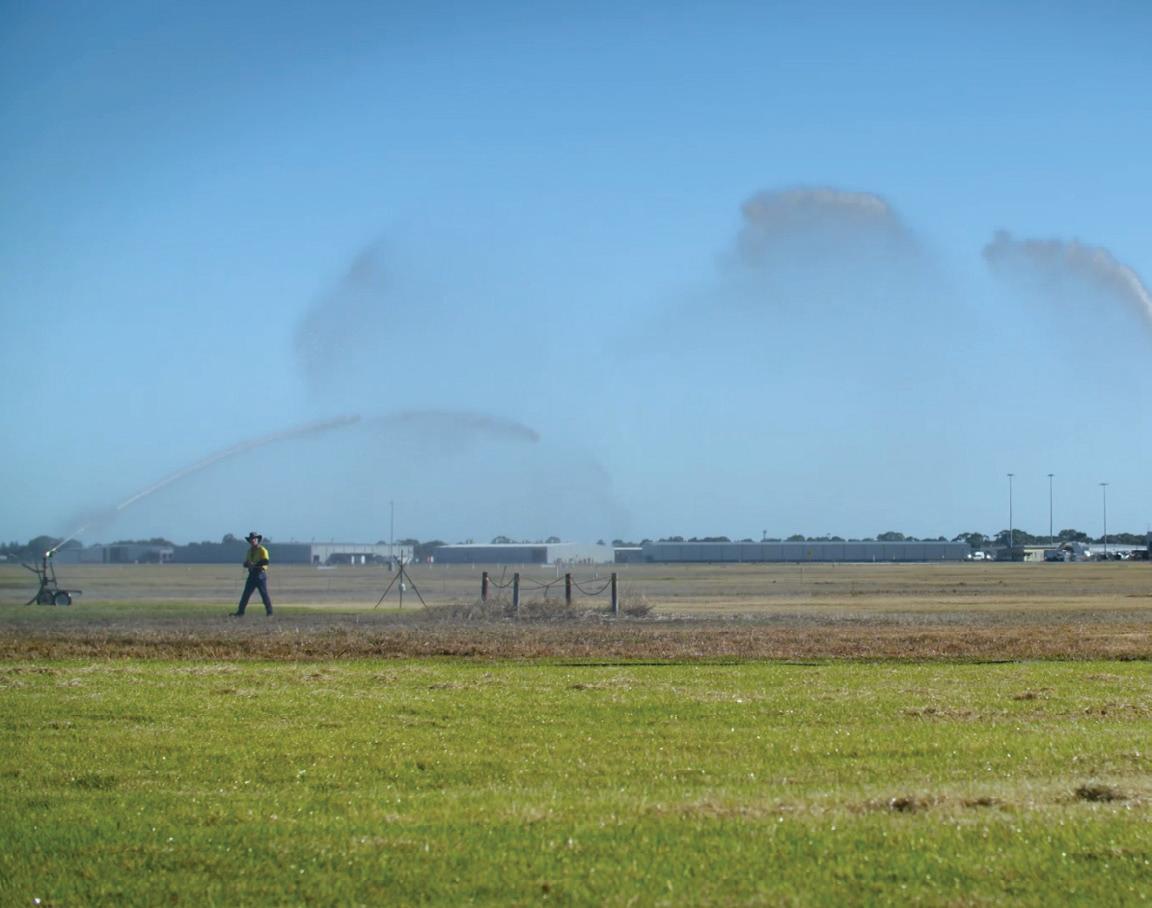
UTILITY • AUGUST 2020 WWW.UTILITYMAGAZINE.COM.AU IRRIGATION 52
SA WATER MANAGER OF ENVIRONMENTAL OPPORTUNITIES, GREG INGLETON, MONITORING THE IRRIGATION INFRASTRUCTURE AND AIR TEMPERATURE AT ADELAIDE AIRPORT.
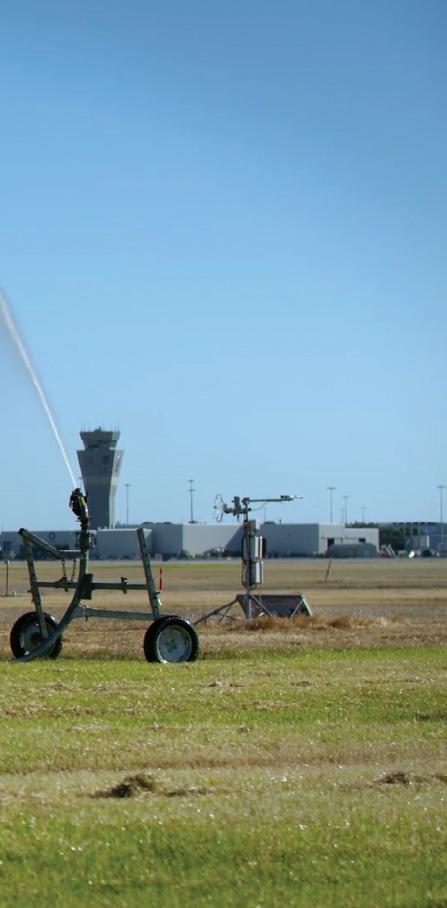
Tackling climate change is everyone’s responsibility and water utilities across the globe are responding by championing innovation to deliver sustainable water services and safeguard water security. SA Water’s pursuit of large-scale renewable energy generation to reduce emissions from its operations is leading the charge, and now the utility is exploring how the smart use of water can help combat the effect of our warming climate.
From the state’s major airport to suburban backyards, the South Australian water utility is proving the natural cooling power of water is flush with economic and social merit, creating more liveable cities.
A WORLD-FIRST TRIAL AT ADELAIDE AIRPORT
The extensive hard surfaces and dry, open land at airports worldwide mean they can often become sources of increased heat, exacerbating the impact of extreme temperatures during summer.
SA Water’s world-first heat mitigation trial with Adelaide Airport, which has been underway for three years, has found smart watering to maintain soil moisture and cultivate green space can reduce average ambient temperatures by more than three degrees on warm days.
More than 40 temperature and humidity sensors monitored conditions in the irrigation area, and the cooling effect is the result of evaporation from the soil profile, along with the transpiration of moist air from vegetation.
The concept creator, SA Water Manager of Environmental Opportunities, Greg Ingleton, said the methodology could lead to a sustainable reduction of an airport’s carbon footprint.
“Jet engines work better in cooler, denser air, using less fuel during take-off and being better able to carry their optimal passenger and cargo loads,” Mr Ingleton said.
“In warmer, less dense air, planes must travel faster down the runway to produce the lift needed for take-off. When a runway lacks the distance required to reach these speeds, a plane’s weight must be lowered, or the aircraft needs to use more fuel, impacting commercial aspects of an airline.
“Two years ago, in Arizona in the US, 50 flights were cancelled in one day due to it being too hot for the planes to take off.
“We can reduce the risk of this happening at many airports in Australia and across the world, by employing irrigation to green buffer land around the runways.”
Adelaide Airport’s Sustainability Manager, Leigh Gapp, said the trial has the potential to benefit airline customers on hot days through reduced fuel burn, which in turn reduces the carbon emissions associated with take-off.
“Reducing the ambient temperature can also reduce terminal energy costs associated with cooling. We are continuing to explore both of these options,” Mr Gapp said.
Recycled water from SA Water’s nearby reuse scheme was applied to four hectares of lucerne 600m south of the airport’s runway, twice a week at night, to create the cooling effect, and also showed the space could produce revenuegenerating food crops – evolving historical land management practices.
The trial opens the door to opportunities for conceptualising airport land as spaces that grow profitable crops to achieve cooling, create zones of cooler air that flow to surrounding suburbs, protect travellers from extreme temperatures and generate economic savings by buffering aircraft operations.
53 UTILITY • AUGUST 2020 WWW.UTILITYMAGAZINE.COM.AU
IRRIGATION
TAKING FLIGHT TO SHARE AIRPORT COOLING WITH THE WORLD
Demonstrating the potential for airports globally, the encouraging findings from SA Water and Adelaide Airport's trial were shared with more than 1,000 delegates at the Airports Council International’s Airport Exchange 2019 – one of the aviation industry’s peak annual conferences – in Abu Dhabi.
Together with Adelaide Airport, the utility showcased their learnings with some of the world’s largest airports, including Dubai, London Heathrow and Munich.
Mr Ingleton said interest in their innovative approach to airport landscape irrigation was high among the industry.
“Hot and dry landscapes at airports can lead to several operational challenges and our concept has the ability to overcome these challenges, while cultivating broader economic and social value,” Mr Ingleton said.
“Our recent economic analysis, which was based on expanding the irrigation area to 200 hectares, suggests initiatives like this can provide a range of operational efficiencies and wider benefits for airports, such as visitor experience and environmental sustainability.
“We’re also investigating the ability to create carbon credits from growing the crops, demonstrating carbon sequestration whereby the plants absorb CO2 and use it as fuel for growth by locking it in the soil.
“Sharing our insights with a global audience encourages collaboration with airports worldwide – helping them benefit from our knowledge and capabilities, while generating opportunities for SA Water.
“Expanding our exposure and experience to diverse climates and landscapes will also enhance our capability right here in South Australia, and help implement heat mitigation in a range of other urban environments, such as schools and council parks, to improve liveability.
“By supporting green infrastructure and the intelligent use of water, we can cool urban areas and reduce the impact of heatwaves and climate change.”
SA Water’s pioneering concept turned heads in Abu Dhabi, prompting interest and knowledge sharing with airports
across the Middle East, India and Australia since the conference.
EXPANDING THE CONCEPT TO THE URBAN ENVIRONMENT
As Australia's summers become hotter due to our warming climate, keeping cool is more difficult and can be rather expensive, forcing people indoors where they perch themselves in front of the air conditioner.
The methodology underpinning SA Water’s trial at Adelaide Airport is easily transferable to all open spaces in urban areas, creating opportunities to improve the liveability of cities around the world.
“While at a large scale, the concept trialled at the airport can also apply in urban environments like backyards and local parks to help reduce the effect of our warming climate,” Mr Ingleton said.
“By applying the smart irrigation principles we have developed to maintain healthy lawns and vegetation at parks and playgrounds, we can easily show the positive impact on creating cool public spaces people can enjoy in hot temperatures.
“Earlier this year, we launched a new program with 19 South Australian councils which saw more than 200 air temperature sensors installed in the urban environment, helping the community track down their coolest local park or playground using real-time data.
“The sensors captured temperature differences of more than five degrees between green irrigated sites and nonirrigated spaces in the same suburb.
“Hot weather usually drives most people to stay inside under the air conditioner, so having more green cool spaces available will encourage families to still be active outdoors and kick a footy in the local park that’s coolest in their suburb.
“As well as community benefits, there are significant advantages for local councils needing to make costeffective decisions about their irrigation practices, with more diverse and higher volume community activation driving increased value from the water already invested in maintaining green spaces like sporting ovals.
“Dry ground can be just as hot as bitumen and fake grass can be even hotter, so using water efficiently and in a cost-effective method can further reduce the creation of urban heat islands.”
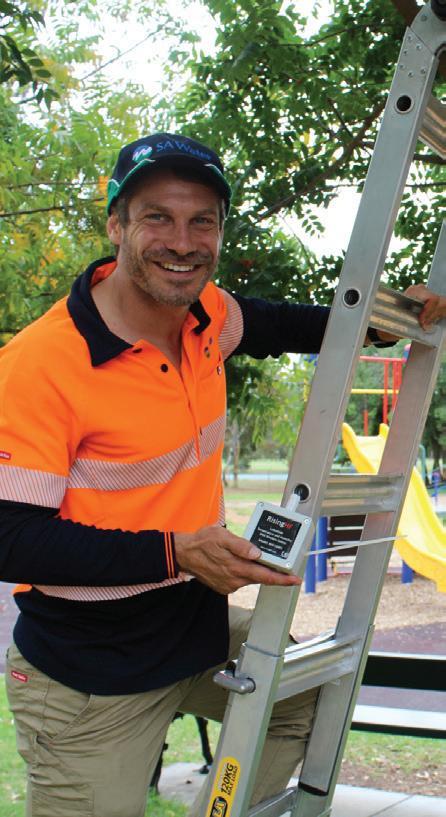
Available at sawater.com.au, the data forms colour coded maps that show how each park stacks up as a cool outdoor space to take the kids to play or maintain daily exercise goals, even when the mercury rises.
SA Water is providing the data to councils to compare irrigation patterns to any temperature reductions achieved, and help make informed decisions on future park upgrades or investments.
Mr Ingleton said a relatively small amount of water could replicate the cooling effect at a domestic level.
“Targeting how water is applied by watering around a window or air conditioning unit, can greatly reduce the air temperature flowing into your house like a natural air conditioner and help reduce your carbon footprint,” Mr Ingleton said.
“We can further incorporate the effect into house and garden design by positioning windows on the south side of a house and growing a lawn or plants below them, reducing the energy
UTILITY • AUGUST 2020 WWW.UTILITYMAGAZINE.COM.AU IRRIGATION 54


SA WATER LIVEABILITY COORDINATOR, ALEX CZURA, AND MANAGER OF ENVIRONMENTAL OPPORTUNITIES, GREG INGLETON, INSTALLING ONE OF MORE THAN 200 AIR TEMPERATURE SENSORS ACROSS ADELAIDE'S PARKS.
required to power an air conditioner, and benefiting from growing a vegetable patch or fruit trees.
“An established green lawn or garden only needs enough water to maintain moisture levels, so that the cooling effect of the watering is felt for several days afterwards.
“South Australians are water savvy and our augmentation of diverse, climate-independent water sources has created the opportunity to use water in an intelligent way, unlocking the natural cooling effect that enables broader economic and environmental outcomes in the face of climate change.”
SA Water is working together with councils to implement a smart irrigation package of smart water meters, soil moisture probes and a commercial irrigation software program, enabling councils to significantly reduce water use while achieving the same cooling outcome from irrigated parks.
By finessing their irrigation program, it ensures councils are watering more efficiently and only using the exact amount required, subsequently making additional water available to increase green open spaces across their jurisdiction.









GUIDED BORING SPECIALISTS
ABOUT US
Edge Underground is a precision microtunnelling contractor that operates in Australia and the USA. With a focus on innovative technology and expertise, Edge Underground designs and enhances the performance of trenchless equipment.
OUR SERVICES
• Microtunnelling
• Pipe Jacking
• Thrust Boring
• Laser Tunnel Boring
* stuart@edgeunderground.co 8 www.edgeunderground.co 0458 000 009 ( JACKED 1300 522533 UTILITY • AUGUST 2020
ELECTROFUSION WELD FAILURES CAN BE AVOIDED USING THE RIGHT EQUIPMENT
Electrofusion welding is one of the most popular methods of joining HDPE/poly pipes. Electrofusion welders supply electrical energy to heat the embedded coil in various sizes and types of fittings, causing the pipe and fitting to fuse together.
Caldertech has been manufacturing industryleading electrofusion welders for over 30 years. Manufactured in the UK to this day, its welders are synonymous with uncompromising quality and performance. Caldertech’s electrofusion welders are designed to work with all brands of fittings across all sizes from 16mm to 1,000mm.
The units use the latest technology to make the welding process as automated and efficient as possible, featuring automatic fitting recognition, voltage sensing, barcode scanning and manual input options.
The high manufacturing standards and materials used in every Caldertech electrofusion welder guarantee performance every time even in the toughest environments.
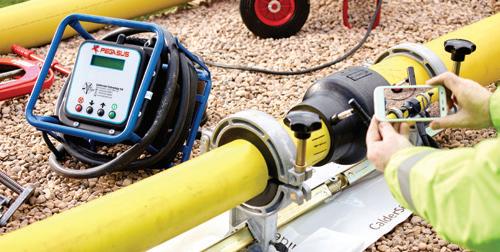
Quality assurance and traceability are fundamental parts of any compliance requirement and will most likely be expected carried out.
Caldertech’s electrofusion welders make this easy –featuring data logging and CalderSafe® mobile technology, real-time weld data can be analysed and even approved remotely, as weld parameters are captured for quality verification, traceability and record keeping.
Like with any piece of equipment, owning a quality product is just the beginning. With manufacturing at the core of the company for over three decades, you can be certain that any repair or technical enquiries will be dealt directly with specialists that know the equipment and are committed to delivering support when you need it.
To learn more about Caldertech’s electrofusion welders and other tooling to help you successfully install electrofusion fittings without failure, visit caldertech.com.au.

With a global reputation spanning over 30 years for quality and innovation, Caldertech’s Electrofusion Welder Range has become an industry standard for all your poly pipe welding needs, guaranteeing state of the art technology and performance every time.
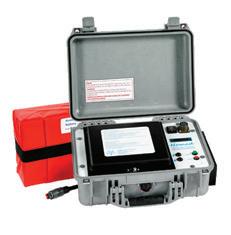
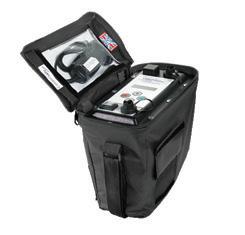
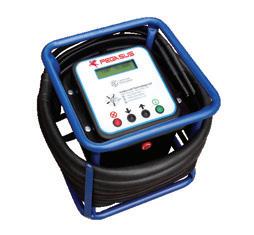

UTILITY • AUGUST 2020 WWW.UTILITYMAGAZINE.COM.AU
IRRIGATION | Utility Partner Solutions SALES + HIRE + REPAIRS | WA: (08) 9209 1132 | QLD/NSW: (07) 3185 2175 VIC: (03) 8508 8155 | CALDERTECH.COM.AU
FEATURES
Automatic Fitting Recognition
Data Logging + CalderSafe® QA • High Quality UK Manufacturing • Full Technical Support OUR EF WELDER RANGE FUSING POLY PIPE? Think Electrofusion with Caldertech NOMAD BATTERY POWERED Pipe Size 16-63mm GRIFFON LIGHTWEIGHT Pipe Size 16-200mm CALDER PEGASUS Pipe Size 20-630mm CALDER PROXIMA Pipe Size 20-1000mm 56
•
•
Does your DC power system fall short?

I f the re ’ s one t hin g you don’ t want to take a chance on, it’s the ability of yo u r DC power system to protect your critical a sse t s. O ur D C power sy stem s are designed to meet Australian standards and to delive r maxi mu m longevity. By custom designing every s y stem, w e provide en gi ne ered sol u t ions t hat me et t h e unique tech nical re quirements of yo u r si te. T h is in n ovat ive ap proach combined with our maintenance support m eans we le ave no t h ing to c h anc e when it comes to protecting you r cri ti ca l a sse t s.
To le arn more about our DC power systems and ma intenance ser v ices, v is it o u r website.
F or enquiries call 1300 364 877 www.intelepower.com.au
The first Choice for Stored Energy Solutions
THE FUTURE NETWORK:
DEMONSTRATING ADVANCED INTEGRATION OF DISTRIBUTED ENERGY RESOURCES
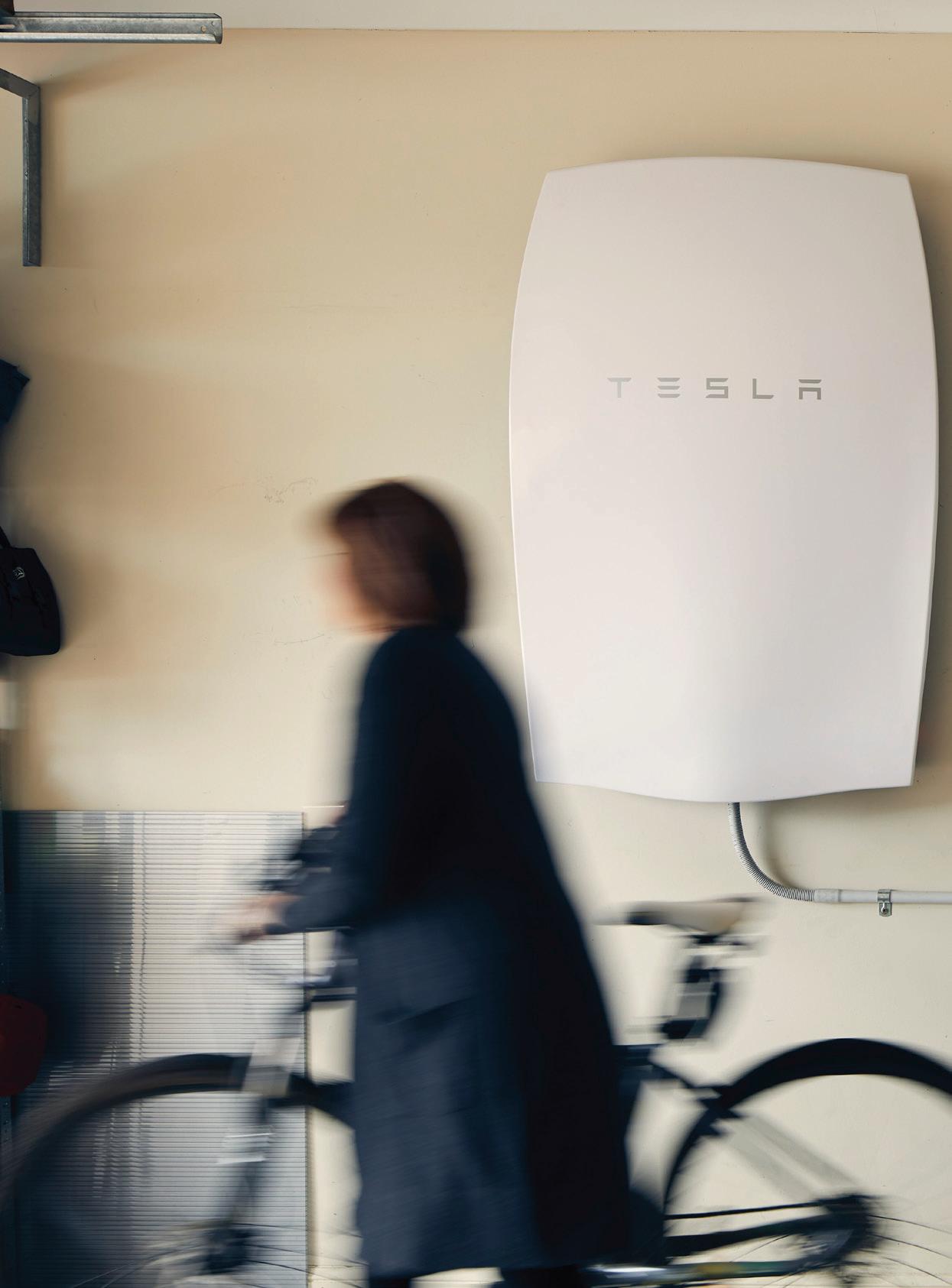
With the continued uptake of rooftop solar photovoltaic (PV), and more recently home battery systems, South Australia is leading the way in the distributed energy transition. On top of this, new entrants in the energy market are aggregating customers’ solar and battery systems into virtual power plants (VPPs) to provide services to the National Electricity Market (NEM). SA Power Networks identified an opportunity to offer VPP operators a higher level of export above the standard 5kW static export limit, through publication of flexible export limits that reflect the real-time capacity of the network. Providing greater access to network capacity in this way will increase the VPP operator’s opportunity to participate in markets, while ensuring that the distribution network is not compromised.
UTILITY • AUGUST 2020 WWW.UTILITYMAGAZINE.COM.AU SMART GRIDS 58

In partnership with the South Australian Government, Tesla is rolling out solar and battery systems to up to 50,000 customers and operating them as a VPP.
At full scale, this would be by far the largest VPP in the world and a very significant resource in South Australia’s energy market, providing up to 500MW, equivalent to the Torrens Island Power Station “A Station” (480MW), or close to five times the capacity of the Tesla Hornsdale battery (100MW).
All this new VPP behaviour is happening on the low voltage part of the electricity network which was originally designed to cope with only the last leg of energy supply to customers.
James Brown, Future Networks Engineer at SA Power Networks, said that the power utility’s standard connection rules apply static limits to the amount of power distributed energy resources (DER) can export to the distribution network.
“These limits are fixed to a value of 5kW per customer in order to manage network congestion under conditions when people are trying to export to the network concurrently,” Mr Brown said.
“While these limits are fixed, the networks’ capacity to host exports varies in time and can actually be much higher than 5kW per customer premises at certain times when energy is at a premium.
“When the South Australian Government announced its plans to collaborate with Tesla on the world’s largest VPP, SA Power Networks, together with CSIRO and Tesla, recognised an opportunity to trial a smarter way of making more network export capacity available to the VPP. This would potentially enable increased revenue as well as maximising the opportunity for the VPP to provide services to the energy system as a whole.”
The goal of the project was to demonstrate how current limits on the level of network exports from customers’ renewable energy systems can be increased as much as two-fold by implementing an interface to exchange real-time and locational data on network constraints between SA Power Networks and the VPP operator.
To achieve this, the project developed and trialled an Application Programming Interface (API) solution through which varying time and location export limits could be published to the VPP to enable increased export at times when additional capacity is available and be reduced during the rare times when the network is congested.
This project is believed to be the first to demonstrate this concept in operation with a real VPP that is actively participating in the market, and to seek to measure the real-world costs and benefits of this approach.
DEVELOPING THE TECHNOLOGY SOLUTION
The advanced VPP grid integration project aims to show how higher levels of energy exports to the grid from customer solar and battery systems can be enabled through flexible, rather than fixed, export limits, and to test the value this can create for VPP operators.
The objectives of the project included:
• Co-designing with Tesla, in consultation with other industry stakeholders, a suitable API, communication framework, connection agreements and business rules for VPP integration and dynamic network capacity allocation, and testing this in the real world over at least one complete season in South Australia
• Developing a model-based approach to estimating network hosting capacity on a dynamic and locational basis
• Demonstrating the capability to raise normal export limits for aggregated PV during times and in locations where there is sufficient network capacity
UTILITY • AUGUST 2020 WWW.UTILITYMAGAZINE.COM.AU 59
SMART GRIDS
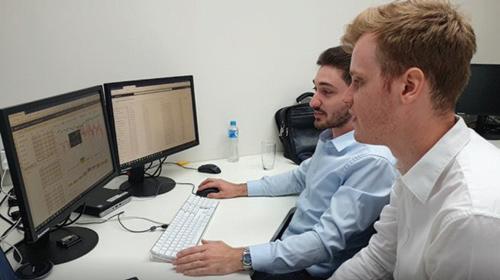
Tesla engineers were co-located with the SA Power Networks agile development team for stronger collaboration and data sharing, engaging remotely with the US-based Tesla development team.
The team evolved their methods to include automated system testing and the concept of DevOps to manage and deliver new functionality rapidly into the production environment.
John Carey, Project Manager at SA Power Networks, said the project took the opportunity to co-locate Tesla engineers and the SA Power Networks development team while the API was being developed.
“The local Tesla presence meant the communications between both organisations was as open as possible and any issues were resolved rapidly, which contributed to us developing the API ahead of our planned milestones,” Mr Carey said.
The project leveraged a technology partnership with Microsoft, and the use of a range of Microsoft Azure components supported an explorative approach to developing the API. Being able to easily select a component, test it in a proof of concept environment and swap it out for something else if necessary, enabled SA Power Networks to quickly develop the most appropriate technology solution.
Ensuring a cost-effective and scalable technology solution was another important factor in choosing to use Microsoft Azure, which provided the robustness of a cloud platform and the ability to dial up or down the availability and redundancy of various components of the solution as required.
“Microsoft Azure is the preferred cloud services platform for SA Power Networks, and with an increasing range of services that can be easily integrated and have been proven onshore and offshore in security-conscious environments, it was an ideal choice for our project’s technology platform,” Mr Carey said.
“The range and variety of components, and the ability to scale up for potential future growth in terms of VPPs and functionality gave us confidence in our ability to evolve and adapt our solution to meet our changing needs.”
With each increment of the solution and selection of new components, the changes were assessed for compliance against SA Power Networks’ security requirements, involving at times trialling new mechanisms.
The key technology components introduced were:
• New co-designed API based on the Azure API Management component, which allowed SA Power Networks to know ‘what’ was contained within the VPP
• A constraints generator to calculate the flexible export limits, based upon Microsoft Azure Databricks – an early evolution in the design of the constraints generator from that of a static spreadsheet to the Databricks platform enabled more comprehensive and dynamic modelling of the network. This was due to the ability of Databricks to support the creation of an algorithm with complex computations and multiple data sources, which is necessary in modelling network behaviour. This represented a leading example in applying Microsoft Azure Databricks to such a production use case, using historical data sets to create a model of the network and predict its ability to absorb PV-generated energy
• A number of internal and external data feeds, utilising a range of Microsoft components, such as Blob Storage, Function Apps, IoT Hub, Data Factory, DevOps and Logic Apps
With a timeline of only six months from the commencement of the project in January 2019 to the API going live, a flexible approach was essential to achieving this outcome.
While the initial plan involved using a spreadsheet-based constraints generator with two back-end data sources and a simple SQL-based data management service, the architecture evolved as SA Power Networks’ understanding of the problem evolved, and more data sources became available, which resulted in the use of different Azure components to address new and emerging requirements.
The final solution was architected to support future increases in scale, but only utilise the components, computer power and storage capacity needed for the current scale of the VPP.
PAVING THE WAY FOR THE FUTURE NETWORK
Mr Brown said that the main challenge SA Power Networks had to overcome was the pioneering nature of the approach, and the unfamiliarity with cloud-based technology deployments.
“Given this was what we believe to be a world-first approach, there were no templates or standard approaches to draw upon,” Mr Brown said.
“While developing an API may seem like a simple task, each of the functions supported over this interface required new back-end systems to drive them, including databases

UTILITY • AUGUST 2020 WWW.UTILITYMAGAZINE.COM.AU SMART GRIDS 60

to support registration and a new ‘constraints engine’ to calculate the time and location of varying export limits.
“On top of this, there was significant work on Tesla’s side to make this possible – from upgrades to the battery device firmware to support a varying export limit to software integration with the VPP bidding and dispatch software.
“This complex integration was made possible through a tight collaboration on the part of Tesla and SA Power Networks when developing the solution. This close collaboration ensured that when interface changes were made or features requested, both SA Power Networks and Tesla could work together to ensure the change was developed, tested, troubleshooted and rapidly deployed.”
Field testing of flexible export limits began in November 2019 with 20 customer solar and battery systems, and is now supporting approximately 900 sites for the purposes of the trial. The API has been exchanging real-time data between SA Power Networks and the Tesla South Australian VPP since July 2019.
“The technology systems and integrations to support the trial have been successfully deployed and the capability for the Tesla VPP to export greater than 5kW per site in response to the flexible export limit has been successfully demonstrated. This capability is now running in approximately 900 VPP sites and data is being gathered to quantify the benefits for VPP operators and customers participating in this scheme,” Mr Brown said.

“This project is looked upon as being a successful early demonstration of this approach and has significantly progressed the industry’s thinking in relation to standard interfaces for integrating distributed energy resources (DER) with distribution networks. The API specification has been a key early input to the industry DER API technical working group who are seeking to establish a national communication standard for DER integration more broadly.
“The final phase of the project involves collecting data to quantify the benefits for VPPs in participating in this type of integration. In having proven the concepts and core system components to offer flexible exports, plans are underway to extend this service to other VPPs and non-aggregated DER systems such as solar PV.”
There are also plans for further developments to the constraints generator and network model to involve the use of machine learning, high-voltage data and real-time network monitoring.
The project strongly aligns with SA Power Networks’ Future Network Strategy and Digital Technology Strategy. The solution will continue to evolve as the utility innovates around ways to support the growth of renewable energy in South Australia, and provide a safe, reliable and flexible network.
This project received funding from ARENA as part of ARENA's Advancing Renewables Program.
UTILITY • AUGUST 2020 WWW.UTILITYMAGAZINE.COM.AU 61
GRIDS
SMART
SCADA INTEGRATION PROJECT DELIVERS IMPROVED ASSET VISIBILITY
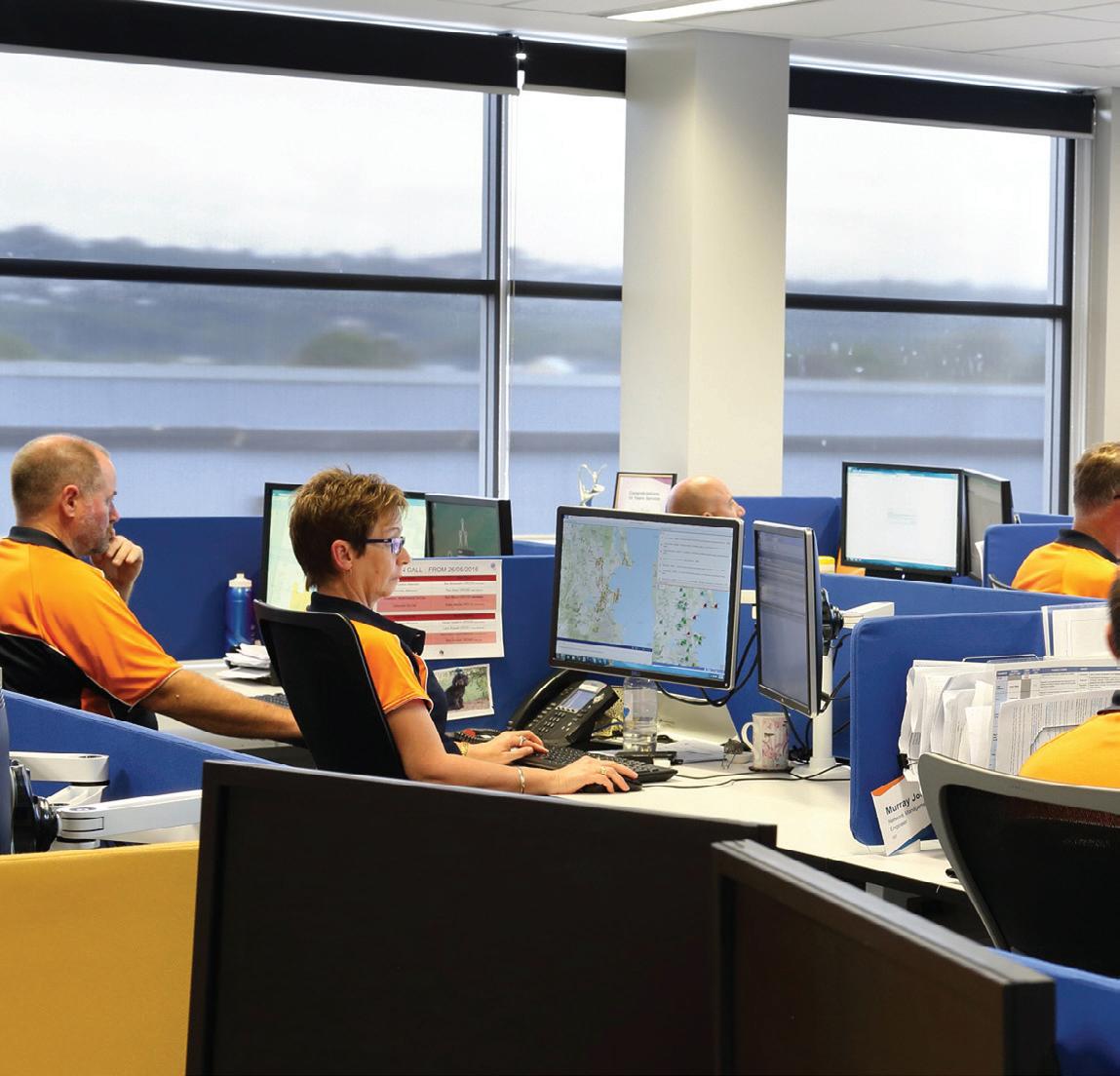
Unitywater provides water and sewerage services to the Moreton Bay, Sunshine Coast and Noosa regions of South East Queensland. As part of the Intelligent Customer and Network Operations initiative outlined in its Corporate Strategic Plan , Unitywater is working on digitally connecting and integrating its water and sewerage services to reduce costs, improve productivity and enhance the customer experience.
The utility’s 5,223 square kilometre service area has a growing population of more than 791,000 people, and its assets include around 6,150km of water mains, 5,900km of sewerage mains and 17 sewage treatment plants (STPs).
Unitywater’s 24/7 Network Operations Control Room has been monitoring and controlling water supply and sewerage networks since its formation in 2010.
In 2015, the utility completed a major $50 million upgrade of its SCADA (Supervisory Control and Data Acquisition) system, bringing the monitoring and control of its water distribution network, sewage collection network and communication network onto one platform within the Control Room.
UTILITY • AUGUST 2020 WWW.UTILITYMAGAZINE.COM.AU I o T AND SCADA 62

Rhett Duncan, Executive Manager Customer Delivery at Unitywater, said that the water utility was formed through the amalgamation of three councils that used different SCADA systems.
“The newly formed Unitywater prioritised capital investment to upgrade and standardise these disparate SCADA systems for our water and sewerage networks,” Mr Duncan said.
Unitywater’s 17 STPs, however, remained outside this system and to add further complexity, the STPs were using four different brands of SCADA.
STPs were only staffed during working hours, with the on-call operator relying on critical alarms being paged out by the SCADA system after hours. Staff then remotely dialled in and took corrective action.
This arrangement was less than ideal, but the projected costs and logistics of integrating the different systems were, until recently, prohibitive. The STP SCADA systems would need to be standardised as part of a renewal project rather than a one-off capital project.
“One of the directions under Unitywater’s strategy is investing in intelligent systems that will digitally connect our water and sewerage services to improve the productivity of our operations and provide a hassle-free experience for our customers,” Mr Duncan said.
“We recognised that integrating the systems and leveraging our 24/7 Control Room would provide improved operational efficiencies, particularly for after-hours monitoring and critical alarm triage.”
UTILITY • AUGUST 2020 WWW.UTILITYMAGAZINE.COM.AU 63
I o T AND SCADA
INVESTIGATING POTENTIAL TECHNOLOGY SOLUTIONS
Spurred on by the Intelligent Operations strategic initiative, a technical investigation was undertaken by the Operational Technology (OT) team, which identified that the disparate STP SCADA systems could be integrated into the 24/7 Control Room using new technologies.
After carefully examining various virtual application solutions, the OT team identified two technologies, RemoteApp by Microsoft and Net support Manager, that would effectively integrate the four STP SCADA brands.
“These two thin clients were chosen as they met the technical requirements without hindering the network bandwidths of the remote STP sites,” Mr Duncan said.
“The two thin client solutions enabled us to defer the significant capital investment needed to improve the network bandwidths and additional SCADA licensing costs in comparison to the traditional approach, which would involve putting more cables underground.”
A proof of concept (POC) trial integrated three STP SCADA systems using the two technology solutions with the goal of testing the conceptual design against the following measures of success:
• Successful installation of software systems and ability to remotely monitor and control the STP SCADA systems from the 24/7 Control Room
• Acceptable operating speeds of the STP SCADA systems via remote operation using current bandwidth and link speeds
• Prove the robustness of the software by achieving comparable ‘up times’ of the remote monitored solution to that of the current SMS and dial-in alternatives
• Reduction of STP operator call-outs due to monitoring of alarms by Network Operations Control Room staff after hours
RemoteApp by Microsoft was used to launch the virtual ClearSCADA ViewX program – the program appeared on the operator workstations as if it were installed locally, but it was actually running on a remote server in one of Unitywater’s data centres.
NetSupport Manager was the additional tool used to provide remote access capability for the STPs whose SCADA systems couldn’t be virtualised due to product or system configuration limitations. NetSupport Manager was chosen because of its strength as a one-to-many solution, allowing the 24/7 Control Room to shadow STP operators’ screens for training purposes.
With the concept now proven, a project to integrate the remaining 14 STPs using the NetSupport solution followed, resulting in end-to-end visibility of the water and sewerage, and STP SCADA systems. A structured approach to triaging the STP SCADA alarms during after hours was also developed.
For Unitywater, the project successfully removed the barriers to operational efficiency and took the brakes off innovation and further enhancement.
COLLABORATION KEY TO DRIVING CHANGE
The STP SCADA integration project has radically simplified and improved current systems in a cost-effective and sustainable manner by deploying NetSupport Manager and Microsoft RemoteApp solutions.
The project was delivered by internal resources over a period of just six weeks, leveraging the existing tools with zero cost to the business. It is a cost-effective and sustainable example for Unitywater’s digital utility future.

UTILITY • AUGUST 2020 WWW.UTILITYMAGAZINE.COM.AU I o T AND SCADA 64
“The systems have improved our decision-making by allowing our Control Room operators to have end-to-end visibility of all assets in one location. It has also provided our network operations and treatment plant teams the opportunity to share and transfer skills,” Mr Duncan said.
Whilst the implementation of technology was a key project enabler, the full benefits of the digital solution were only made possible when matched with strategic people management, engagement and training.
The STP operational knowledge existed within one team who only worked daytime hours, whilst the 24/7 resource availability existed within a different team holding minimal STP operational knowledge.
To combine the two key factors of STP operational knowledge and 24/7 staff availability for ongoing training, Unitywater embarked upon a knowledge sharing and detailed process mapping journey:
• Stage 1 consisted of Control Room operators attending STP sites and becoming familiar with the different treatment processes and operational equipment. This was matched with STP SCADA training sessions
• Stage 2 saw the joint development of defined standard operating procedures (SOPs) and process maps to a detail that was not previously required due to the experience and local knowledge of the STP operators
• Stage 3 involved the commencement of the central Control Room operators managing STP SCADA system alarms and faults whilst being remotely ‘shadowed’ by STP operators. This provided further training and ensured that sufficient competencies had been developed for solo after-hours monitoring
“The training and co-creation of standard operating procedures (SOP) was a key step to bridge the STP operations knowledge gap which existed within our Control Room team,” Mr Duncan said.
“Prior to the upgrade, most Control Room operators had not worked within an STP environment and the training had to start with the foundations to build a level of competence that could effectively respond to alarms in the appropriate way.
“The team was supported with standard operating procedures, led by STP teams to transfer their knowledge. This was a great example of two diverse teams working together to build the competencies the business needed to deliver more efficient outcomes.”
Unitywater is excited to embark on the next round of system enhancements which are aimed at driving better business through increased use of automation, integration with SCADA and IoT devices, and embracing the digital twin concept to visualise its assets in real time.
“Unitywater has been proactive in adopting emerging technologies like IoT, machine learning, and Robotic Process Automation to help achieve our strategic goals. We rolled out a smart meter trial and will be expanding this in 2020-21. We are currently working on a number of other technology projects that will provide valuable insights into our network and operations, and we look forward to sharing these soon,” Mr Duncan said.

UTILITY • AUGUST 2020 WWW.UTILITYMAGAZINE.COM.AU 65
I o T AND SCADA
WORK APART, TOGETHER WITH MOXA
As most companies and industries in Australia are transitioning to a remote workforce and many more splitting working weeks between being onsite and remote, some industries are facing unique challenges because of social distancing measures. These challenges are likely to continue to occur well into the future, therefore making it important to act now and address challenges due to social distancing and working remotely.

Economists are predicting that working from home will become the new normal. Many companies are preparing to navigate these changes and implementing new technologies that will allow working remotely to become more seamless and streamlined for traditionally on-site occupations.
Working remotely in the utility, infrastructure or mining industry can be extremely difficult if you don’t have the right equipment, with some system operators finding it difficult and inconvenient to manage field site production, troubleshooting or data collection when not on site.
Moxa Remote Connect (MRC) Quick Link is a cloud-based management platform that allows you to set up a remote connection from any computer to the end devices connected to an MRC gateway from anywhere in the world through the MRC server.
This makes it possible to use PC-based software applications to remotely interact with industrial equipment –just as if they are connected directly to the PC.
Setting up a remote connection with MRC Quick Link is easy and involves three separate processes carried out by different roles:
• The administrator is responsible for configuring the gateway and clients for remote access on the MRC server, and generating the respective activation keys for the machine operator and support engineer
• The machine operator installs the activation key on the physical gateway device on-site
• The support engineer uses the client key in the MRC Client Software to authorise the remote connection to the field device
When the tunnel is successfully established, the support engineer can remotely monitor and manage the equipment.
Moxa’s remote access to programmable logic controllers (PLCs), human machine interfaces (HMIs) and automation networks can help to reduce on-site visits, improve services and increase operational efficiency while saving time and costs.
Moxa Remote Connect (MRC) solution and MRC Quick Link Service open up a new world of security, ease of use, and flexibility for securely accessing remote devices.
The MRC secure remote access solution provides strong data encryption and secure tunneling between your local and remote systems. There is no need to perform complex VPN/firewall configurations, which allows you to add remote connections more confidently and flexibly.
To get started quickly, you can use our free and ready-touse MRC Quick Link Service and take advantage of:
• Five years of free access to an MRC Server
• Five concurrent online nodes
• 5GB data per month
While the world and working environment are changing, these changes give us the opportunity to adopt new technologies and techniques to provide better service to our customers and work more efficiently – all while staying safe.
If you’d like more information on the Moxa MRC Quick Link, head to madison.tech/work-apart-together.
UTILITY • AUGUST 2020 WWW.UTILITYMAGAZINE.COM.AU I o T AND SCADA | Utility Partner Solutions 66
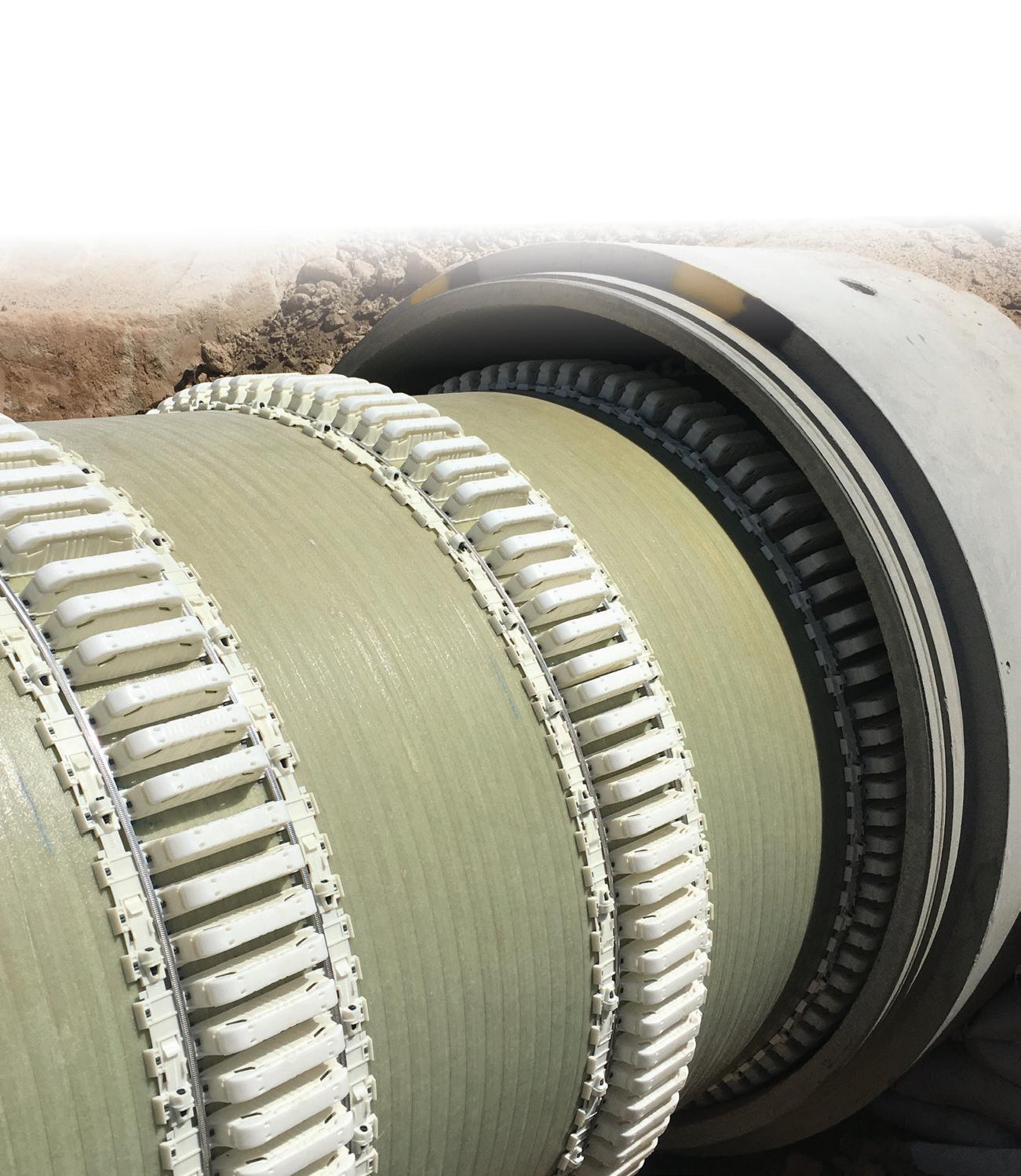

KWIK-ZIP’S HDX SERIES CASING SPACERS COMPLY WITH WSAA PRODUCT SPEC #324 – CASING SPACERS; REFER WSAA PRODUCT APPRAISAL REPORT #1523 Is your pipe spacer compliant? Contact us today to order P (08) 9725 4678 sales@kwikzip.com www.kwikzip.com
FOR INCREASED EFFICIENCY, DEEP LEARNING IS THE FUTURE
Machines are learning to think. Deep learning is a machine learning technique − and the most significant future technology in artificial intelligence. SICK transfers this key technology to its sensors, offering customers added value for greater productivity and flexibility.
Sensors remain the source of information, and integrated software offers a solution for evaluating and communicating network data. However, the Industry 4.0 trend means there is an urgent need for 'reformed' thinking in IT on data complexity. Deep learning is essential, and it’s the path SICK and its customers are taking for modern plant processes.
DEEP LEARNING THINKS LIKE A HUMAN
Deep learning requires algorithms capable of detecting and processing vast, complex amounts of patterns

and data. The artificial neural network mimics human thinking and learns from examples. It learns from experience and learns to adapt to new, updated information. As a result, a range of optimisations are possible today that would have been unthinkable just a few years ago. Machines and plants, in combination with intelligent data and specialised sensors, can find solutions to the most complex tasks.
COMPLEX ALGORITHMS NEED SPECIALIST EXPERTISE
The demand is not for a universal solution. Rather, the focus is on
solutions tailored to specific use cases. Although modern 2D and 3D cameras are becoming faster and more powerful, their performance is currently restricted by traditional image processing algorithms. SICK’s deep learning experts work closely with its clients’ process and quality experts to implement customised solutions for different applications and conditions. This unique expertise forms the basis of simulation training and the development of subsequent deep learning algorithms for SICK’s wide range of sensors.

GO BEYOND – EXPLORE NEW HORIZONS FOR YOUR INDUSTRY.
Overcome the limitations of known systems and leave the beaten path of those who follow. With SICK at your side, you are always one step ahead. Because intelligent sensor technologies enable better processes and new opportunities for your Industry 4.0 business models. Use trend-setting SensorApps, Deep Learning, and other AI applications, as well as integration and analysis solutions. Let’s go beyond together. We think that’s intelligent. www.sick.com/gobeyond
UTILITY • AUGUST 2020 WWW.UTILITYMAGAZINE.COM.AU ASSET MANAGEMENT | Utility Partner Solutions 68
advert go beyond 210x148 en.indd 1 11.05.20 14:24
Geopress K
Press connection technology that is robust and reliable.


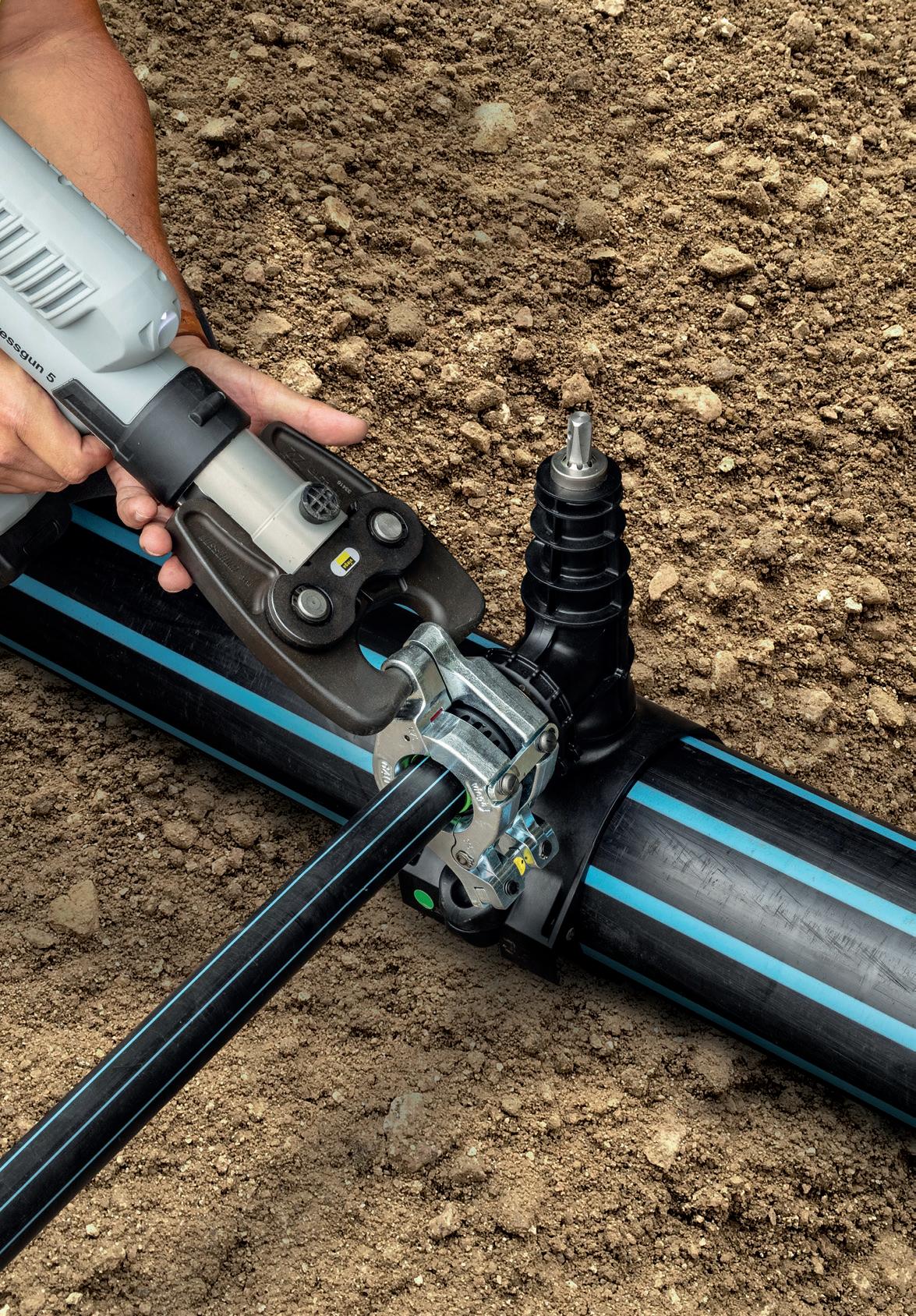
viega.com.au
Cash back promotion on Viega Pressguns, Jaws and Ring Sets
full details
Cash back* on selected Viega products!
*Check viega.com.au for
DURABLE AND EFFICIENT: BARANGAROO’S PIPE PENETRATION SOLUTION
The Link-Seal pipe penetration sealing system has been used extensively in Sydney’s largest redevelopment project at Barangaroo, which is one of the world’s most sustainable commercial, residential, retail and leisure precincts.
Link-Seal mechanical seals were specified and installed to instantly and efficiently seal the annular space around critical pipe penetrations passing through walls, floors and ceilings. Link-Seals have been utilised across Barangaroo for the seawater system, numerous rainwater tanks and sewage wastes.
The sewer mining and outfall penetrations located in the basements of Barangaroo have been sealed with Link-Seal model “O” designed for PVC and HDPE pipes. This type of

Link-Seal is suitable for highly corrosive environments and is resistant to oils, fuel and many solvents such as methane and hydraulic fluid.
For the seawater pipe penetration, the stainless steel nuts, bolts and washers were replaced with special grade “SAF 2507” Super Duplex nuts, bolts and washers. This has enabled the LinkSeal to be immersed in seawater and exposed to UV in regular cycles.
Finally, Link-Seal Model “S”, with stainless steel fittings, was installed in combination with the Century-Line
Sleeves to achieve a long-life seal around the copper pipes passing through the walls of the rainwater tanks located on multiple levels of the three iconic skyscrapers, International Towers Sydney.
Unlike grouts, sealants or epoxies, Link-Seal creates an instant seal and does not shrink or require ongoing maintenance. Available in different compounds and sizes, it can withstand a wide range of chemicals and is suitable for most types of pipe.
To read the full story, visit www.projex.com.au/blog/barangaroos-pipe-penetration-solution-link-seal/.
A NEW WAY TO BUILD
Finally, take control of your projects at every phase of construction.


UTILITY • AUGUST 2020 WWW.UTILITYMAGAZINE.COM.AU ASSET MANAGEMENT | Utility Partner Solutions 70
Find out how with InEight software. InEight.com/Utility

ASSET MANAGEMENT THROUGH A
Revolutionising SMARTER WATER NETWORK
The rapid evolution and maturity of smart and digital technologies is creating diverse opportunities for utilities to adopt emerging devices and systems which improve operational efficiency, customer experience and enable greater safety outcomes.
With a long history of innovation, SA Water is embracing change by fostering and developing new applications of technology for the benefit of its customers and communities.
The South Australian utility’s smart network is leading the way by integrating digital and smart technologies to enhance traditional asset management and deliver real-time monitoring and predictive analytics of its underground network of water and sewer mains.
LISTENING TO THE SOUNDS OF THE WATER NETWORK
In 2017, SA Water deployed the first iteration of its smart network in Adelaide’s CBD. The idea behind the initiative was conceptualised by the organisation’s own people, born out of a desire to improve customer experience and minimise community disruption.
Adelaide’s CBD water main network was selected for the initial rollout because of the higher potential for impact from main breaks and leaks due to the number of customers, including many water-dependent businesses and consistently busy traffic areas.
Harnessing technology from the ‘Internet of Things’, SA Water installed more than 300 smart sensors which included acoustic, transient pressure, flow and water quality sensors, tuning into the ‘music’ of water mains to monitor performance and detect potential leaks. The sensors are integrated with an advanced data and analytics visualisation
platform, and transmit data in real time to SA Water’s Operations Control Centre.
SA Water’s Senior Manager of Asset Management, Peter Seltsikas, said the corporation’s pioneering use of technology is delivering smarter water services that better meet customers’ expectations and needs.
“The advancement and agility of technology is enabling utilities to develop fresh approaches to managing underground infrastructure, and we want to ensure we’re at the forefront of the water industry for the benefit of our customers and communities,” Mr Seltsikas said.
“We are one of the first water utilities in the world to implement a range of complex smart sensors at scale in a defined geographical area, forging a new path for asset management.
“By analysing the data generated by our sensors, we can pinpoint network abnormalities and identify what might be the start of a leak or break, and fix them before they escalate and impact customer supply or cause disruption to road users.
“Our smart network has helped detect around half of all water main leaks and breaks in the Adelaide CBD since 2017, enabling our crews to proactively repair pipes while the city sleeps, with reduced water loss, customer supply interruptions and commuter delays.
“Innovative solutions like this are improving what we do and how we do it, providing a deeper understanding of our water network which ultimately refines our future planning and investment decisions.”
UTILITY • AUGUST 2020 WWW.UTILITYMAGAZINE.COM.AU ASSET MANAGEMENT 72
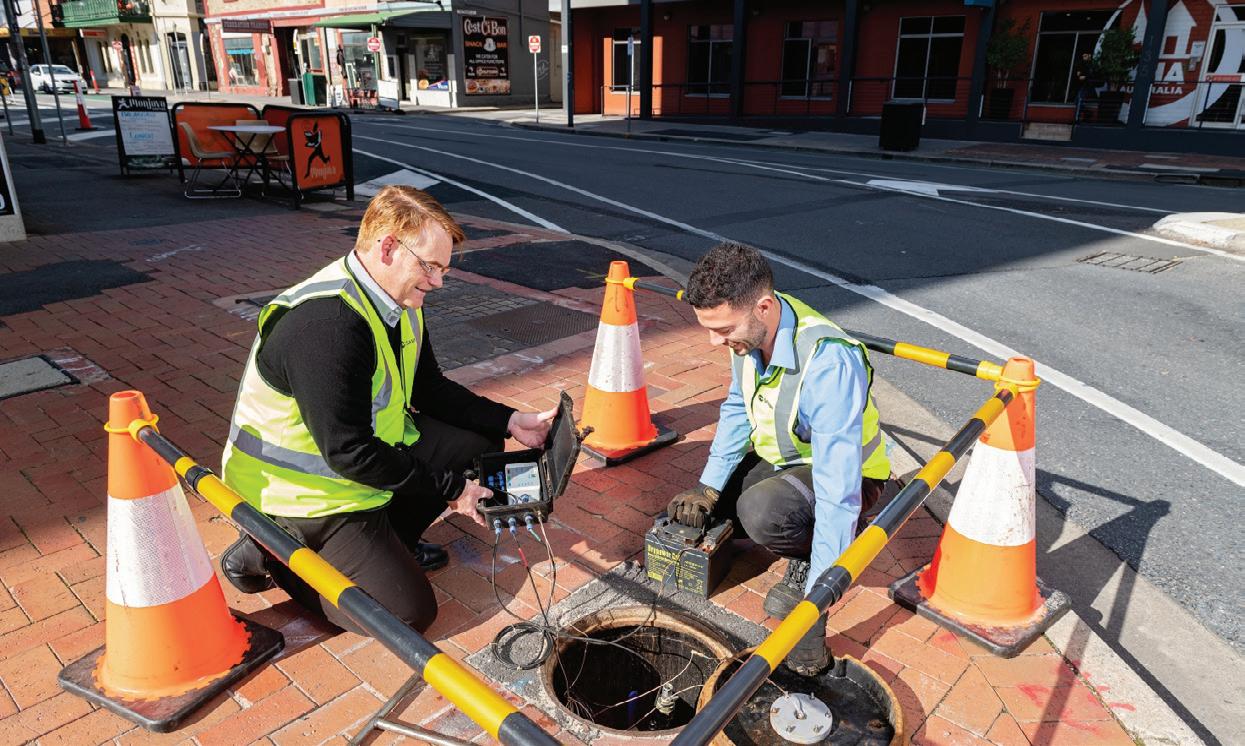
EMBEDDING AN ADVANCED ASSET MANAGEMENT STRATEGY
Buoyed by the success of its Adelaide CBD smart network, SA Water expanded its advanced technology across the metropolitan area and regional centres in 2018 – while also adapting the initiative to its wastewater network.
An analysis of the utility’s network identified water infrastructure in four areas appropriate for the expansion, which included Athelstone, North Adelaide, Penneshaw and Port Lincoln.
The sewers of Gawler and Stonyfell were the debutants for SA Water’s smart technology, complementing existing ongoing maintenance programs. In total, 88 level sensors, 88 odour detection sensors and eleven weather stations were installed between the two suburbs, helping monitor the movement of sewage and detect pipe blockages to prevent overflows and improve odour management.
Mr Seltsikas said the expansion across the state was yielding similar success and helped instill a new approach to asset management.
“With our smart network proving its worth and the architecture in place within the Adelaide CBD, we were inspired to take this blueprint and roll it out on a wider scale,” Mr Seltsikas said.
“We’ve now tailored the capability for a range of water and wastewater network performance indicators, providing real-time monitoring to enable predictive event detection and a deeper understanding of our infrastructure.
“The type of technology we deployed at each location
differed, depending on the issue we are trying to address. Athelstone for example, has a relatively high rate of water main failures – the pipes move a lot due to some of the most reactive clay soils in Adelaide and there is high supply pressure as a result of the area’s topography.
“To help combat this, we installed a pressure modulating control station, as well as sensors to monitor the pressure and sound activity within the network, helping our teams use the control station to remotely measure and maintain a stable water pressure in the network at varying periods of demand through the day.
“Our smart network’s footprint and technological capacity has expanded significantly since its inception and the pace of maturity across our business is underpinning our transformation of asset management.
“Often understated, the invaluable data collected by the sensors and analysed by our team creates new insights that support asset planning and continuous innovation.”
SYDNEYSIDERS SEEK SMART SENSOR SUCCESS
SA Water’s world-leading smart network technology and expertise recently played a key role in a national university and water industry collaboration in Sydney, aimed at tackling the global challenge of predicting leaks and breaks in largescale water networks through emerging technology.
A vital component of SA Water’s pioneering smart network, 40 acoustic sensors were deployed within Sydney Water’s CBD water main network in late 2019 to provide advanced leak detection and enable data analytics.
UTILITY • AUGUST 2020 WWW.UTILITYMAGAZINE.COM.AU 73
WATER ASSET ANALYTICS LEAD, MARK STEPHENS, AND SMART NETWORKS TECHNICIAN, ADRIAN CAVALLARO, INSPECTING A SMART SENSOR LOCATED IN ADELAIDE'S CBD WATER NETWORK.
ASSET MANAGEMENT SA
During the trial period, around 20 hidden leaks and breaks were detected by the sensors and discovered through SA Water’s intricate analysis.
Mr Seltsikas said ongoing interest from peers and numerous industry accolades affirmed the corporation’s revolutionary application of technology.
“It is important that we share the knowledge we have built with the wider industry as well as continuing to improve our own network management practices,” Mr Seltsikas said.
“We have formed an excellent relationship with Sydney Water over the years, and the opportunity to pass on our experience and explore other emerging areas of leak detection technology will advance our knowledge and ensure Australia’s water industry remains a driving force of innovation.
“In only a few months, our partnership enabled their crews to proactively repair 20 leaks and breaks in the Sydney CBD network which could have resulted in greater disruption to the community.
“Water main leaks and breaks are not unique to any state or utility. Maintaining an underground network presents operational challenges which are compounded by environmental factors such as rainfall and soil conditions, and it’s difficult to predict when and where a fault might occur.
“By combining technology, innovation and capital investment, we’re demonstrating how utilities can create a positive impact on their network performance and customer experience.”
The acoustic sensors – which detect high-pitched frequencies generated by water escaping a pipe – have been monitoring an area of around 13km in the busy Sydney CBD.
As part of the $3 million project, which is coordinated by a New South Wales State Government initiative, the NSW Smart Sensing Network, several leading research universities and water utilities led a series of five sub-projects focused on applications of smart sensing technology to reduce pipe leaks and breaks.
SA Water’s integration of digital and smart technology for the benefit of its customers has seen it take out multiple national and international awards, prompting interest and knowledge sharing with countless utilities within Australia and from countries such as New Zealand, Japan and the US.
LOOKING TO THE FUTURE
With their investment in the technology to date totaling $13 million, SA Water has set aside further funds to expand its smart network further over the next four years.
Beyond the architecture and devices, its augmentation of the smart network continues to evolve and the recent creation of an in-house machine learning software platform for the acoustic detection of pipe breaks and wastewater blockages is asserting SA Water’s position at the forefront of smart utility transformation.
The utility has established its own Data Science team and in collaboration with the University of Adelaide, applied universal machine learning principles to historical data collected by the acoustic and level sensors – enabling the development of pattern learning and classification algorithms for proactive event detection.
“Our team’s working tirelessly to enhance our smart network capability and our thirst for innovation has seen us reach new heights,” Mr Seltsikas said.
“By designing a platform that can think for itself and predict potential failures, we’re even more prepared to leap into action and fix a leak or prevent an overflow before it can impact our customers or the community.
“Together with the University of Adelaide, we analysed relevant scientific methods and the behavior of acoustic waves in relation to water main failures in the Adelaide CBD and changes in flows and depth patterns relevant to wastewater overflows in Stonyfell.
“Data from over 250,000 acoustic recordings from the Adelaide CBD were used to identify features and patterns in pipe break and environmental noise signatures, helping us develop specific algorithms that could single out the relevant sound of water escaping a pipe – which previously was a manual task.
“The success of our smart network is underpinned by our people and they continue to push the boundaries of conventional thinking and technology to deliver better services for customers.
“It’s important to note that our work with the smart network is not done alone – along with the University of Adelaide, we work with numerous utilities, industry bodies and specialised vendors from around Australia to find the best solutions and ensure we keep up-to-date with the latest technology and capabilities.”

ASSET MANAGEMENT
UTILITY • AUGUST 2020 WWW.UTILITYMAGAZINE.COM.AU 74
SENSORS ARE INTEGRATED WITH AN ADVANCED DATA AND ANALYTICS VISUALISATION
AND
IN REAL TIME
CENTRE.
THE
PLATFORM
TRANSMIT DATA
TO SA WATER’S OPERATIONS CONTROL



✓ MANHOLE REFURBISHMENT
• Structural rehabilitation of access chambers
• Relining of pipe connections, channels, benching and walls with PVC for 100% gas tight lining
• Stops further deterioration from gas attack
• Patented technology
• 50 year guarantee
✓ SEWER PUMP STATION REFURBISHMENT
• Structural relining of sewer pump stations
• PVC lining provides complete corrosion protection
• Replacement of damaged pipework, mechanical components and lids
• Patented technology
• 50 year guarantee
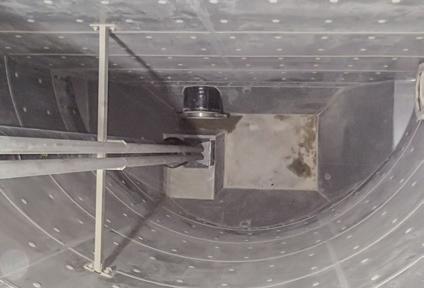
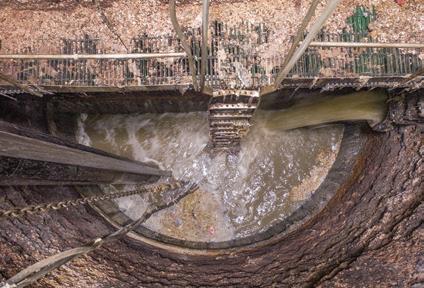
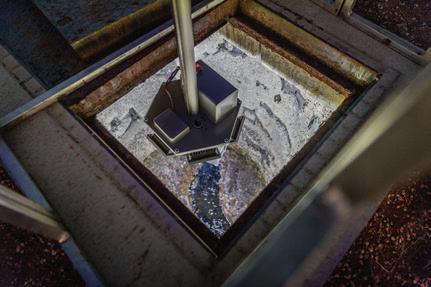
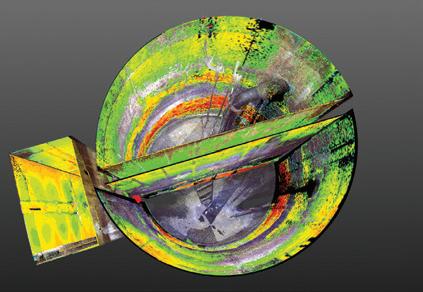
✓ 3D LASER SCANNING AND ASSET INSPECTION
• 3D scan of sewer asset
• Assess structural integrity of asset
• Determine amount of concrete deterioration
• Detailed interactive report with 3D modelling
• High definition video footage and photographs





www.mcrobertcontracting.com.au 08 9411 0666 office.admin@mcrobert.com.au
BEFORE
BEFORE AFTER AFTER BEFORE
Blue Energy
SPEARHEADS
PRE-FEASIBILITY STUDY
FOR NEW GAS PIPELINE
A leaked report from the manufacturing taskforce of the National COVID Coordination Commission (NCCC) urged governments to consider the role of gas in Australia’s economic recovery. Queensland and Northern Territory gas explorer, Blue Energy, is pushing for a new physical pipeline connection from Queensland’s Northern Bowen Basin to the east coast gas market to safeguard against a potential gas supply shortage in the eastern states from as early as 2023.
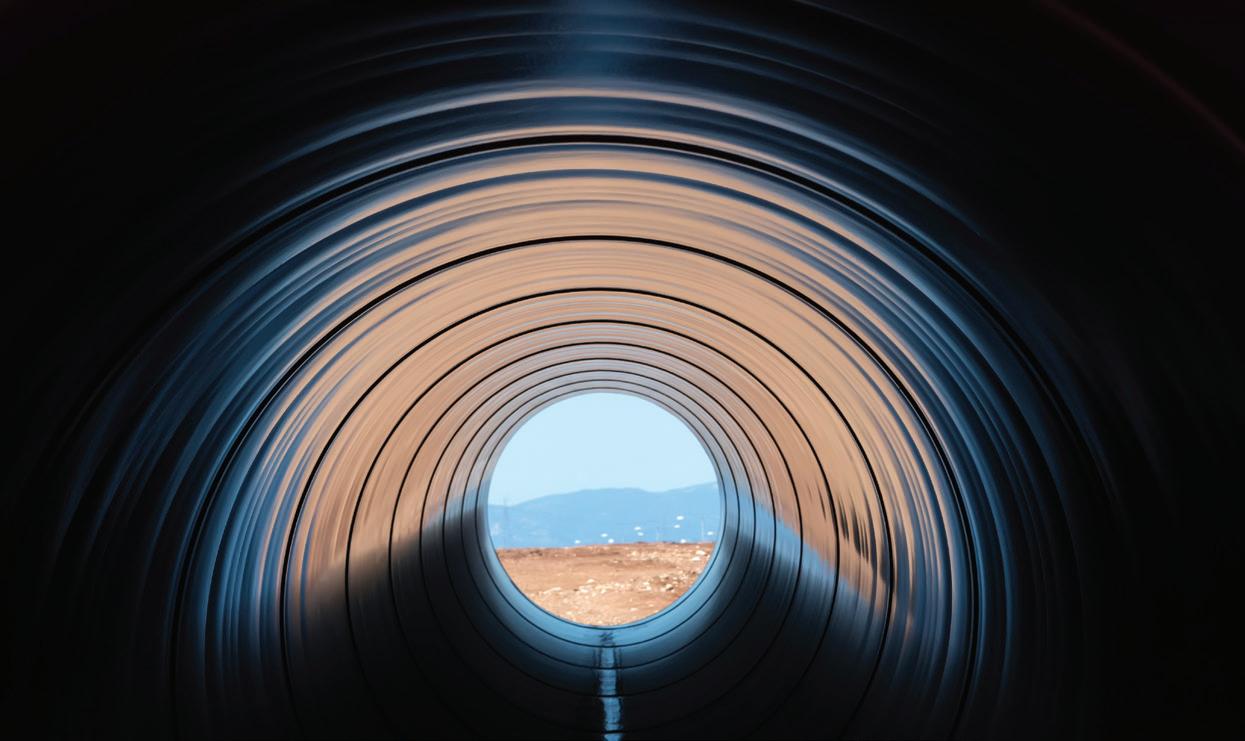
GAS PIPELINES
UTILITY • AUGUST 2020 WWW.UTILITYMAGAZINE.COM.AU 76
Blue Energy has initiated a pre-feasibility study for the Bowen Basin southern gas pipeline project, and is in “active discussions” with the Federal and Queensland Governments to progress the project.
The company believes that the fast-start gas-fired power generation would unlock 15,000PJ of gas to mitigate the impacts of the east coast domestic gas shortage, and provide flexible, reliable and dispatchable electricity to the North Queensland grid.
In its March 2020 quarterly report, Blue Energy confirmed it has been in active discussions with representatives of both the Federal and Queensland Governments. These discussions have highlighted the need for national energy infrastructure projects to ensure timely and reliable delivery of energy to domestic east coast manufacturers and gas users.
This is in light of the projected long-term east coast domestic gas shortfall commencing in 2023, as identified in the Australian Energy Market Operator’s (AEMO) latest Gas Statement Of Opportunities March 2020 report.
In those discussions, Blue Energy has directed the Queensland Government’s focus to the state’s Northern Bowen Basin as the largest onshore, discovered gas resource that remains undeveloped and unconnected to the east coast domestic gas market.
Arguing that post-COVID-19 “shovel-ready” infrastructure projects will be critical to the national economic recovery, the company proposed that a single multi-user, 500km Moranbah to Gladstone/Wallumbilla gas pipeline would be capable of delivering up to 300 terajoules (TJ) per day of gas to the domestic market and is the most advanced, sizeable gas resource that can be delivered to meet the shortfalls predicted by AEMO. Government sanction and funding of the line is required to facilitate natural gas and energy field developments in the Northern Bowen Basin.
It is noteworthy that AEMO now forecasts southern state domestic gas supply shortfalls from the winter of 2023 onward, even accounting for the “2P undeveloped (committed)” blocks of gas reserves.
Blue Energy claimed that there was no consideration in the AEMO report of the impact of the recent dramatic fall in oil price (and hence natural gas prices) on those “committed” projects, and the resultant massive reductions in capital expenditure (CAPEX) by all the major oil and gas producers in Australia.
Furthermore, it claimed that there was even less consideration given in the AEMO forecast to the impact of reduced CAPEX on the “anticipated developments” that underpin the east coast gas supply from 2023.
The company said that the failure of any of these anticipated developments to eventuate would leave the southern states in a precarious energy position sooner rather than the expected 2023 forecast.
Blue Energy added that the onset of the oil price crash and global CAPEX drought in the oil and gas industry should be a sensitivity addressed in the AEMO forecast, as the east coast gas market is dependent on more drilling (CAPEX), largely by the LNG players, to provide Australia’s domestic gas supply, in the absence of significant dedicated domestic gas activity.
ASSESSMENT OF POTENTIAL PROJECT SITES UNDERWAY
Blue Energy said it was assessing the potential for the development of gas-fired peaking generation capacity in certain gas properties within its 100 per cent-owned ATP 814 tenure.
ATP 814 consists of seven disconnected blocks in the Bowen Basin across an area ranging from south of Moranbah up to Newlands in the Northern Bowen Basin.
Specifically, the portions of the permit in close proximity to high voltage electricity transmission and substation infrastructure are most attractive to the company.
This potential project would be in addition to providing natural gas for the southern (pipeline dependent) and northern markets (Townsville).
Administrative tenure management matters with the Queensland Government continue with respect to ATP 814, including the four Production Licence Applications (PLAs) and the four Potential Commercial Areas applications (PCAs) lodged by Blue Energy.
These tenure management activities are being undertaken in parallel with the ongoing commercial negotiation and the assessment of each block’s feasibility to host gas-fired power generation projects and gas sales to industrial customers in Townsville or the southern market.
As has been previously advised to the market, ATP 814 currently has 2P reserves of 71PJ+ and 3P reserves of 298PJ+, as independently estimated by Netherland, Sewell and Associates (NSAI).
Blue Energy highlighted significant upside within the constituent blocks comprising the permit with a combined 3,248PJ of contingent resources estimated by NSAI.
The broader Northern Bowen Basin Gas Province has a discovered resource of approximately 15,000PJ of gas which would be sufficient to underpin the east coast domestic gas market for the next 30 years, based on current market conditions. Blue’s component of this estimate is currently 3,248PJ+.
Blue Energy maintains that the solution to the ongoing long-term east coast gas supply shortfall, as Bass Strait declines, is the delivery of more gas supply to the market.
The company said it believes development of the North Bowen Basin gas resource would provide the quickest solution and all that was required was a 500km pipeline connection.
GAS PIPELINES UTILITY • AUGUST 2020 WWW.UTILITYMAGAZINE.COM.AU 77
PIONEERING PIPELINE COATING PRODUCTS ARRIVE DOWN UNDER
In both new pipeline construction and pipe rehabilitation projects, the first line of defence against corrosion, chemicals and abrasion are protective coatings. When selecting a protective coating system, utility engineers must strike a balance between performance, cost and durability, as well as considering environmental and safety regulations. Piping Specialty Supply Service (PSSS) is now the premier dealer for the Specialty Polymer Coating (SPC) range of protective coatings and accessories in Australia.
Founded in Canada, SPC has been formulating, manufacturing and distributing state-of-the-art, 100 per cent solid, multi-component liquid (MCL) epoxies and polyurethane coatings since 1992. These materials only require a single-coat application and provide a film thickness of greater than 50mils/1250µm without sagging or compromising flexibility.
As a leader in environmental practices within the coatings industry, SPC was one of the first companies to identify the harmful effects of Volatile Organic Compounds (VOCs) on the environment. SPC was also the first company to bring a 100 per cent solids liquid coating to market, an innovation that ensured the absence of VOCs in all its products.
Matt Alliston, Vice President of SPC, and John Wilton, Managing Director of PSSS, are pleased to announce the appointment of PSSS as the Australian supplier of SPC’s highly sought-after coating products.
“We have chosen PSSS for its proven ability to not only sell our specialist products, but also because it has the technical expertise and required infrastructure to promote our products within Australasia,” Mr Alliston said.
Mr Wilton explained that his interest in SPC was in its innovative polymer coating products and accessories, which continue to set the organisation apart as a superior provider in the coatings industry.
“This partnership developed from an existing client’s need for polymer coatings, and we are looking forward to bringing the SPC range to our ever-growing client base. I also believe these coatings will complement our existing range of piping products,” Mr Wilton said.
SPC has a broad line of coating systems which are used extensively in the pipeline industry, as well as linings for tanks (acids, alkaline, sewage, potable water, crude oil and a myriad of various petrochemical services), on various steel structures as well as in marine dock and ship applications.
SPC’s innovative formulations can provide protection from corrosion along with chemical and abrasive resistance up to elevated temperatures of 180˚C. SPC’s internal tank linings are suitable for a multitude of services.
For more information on SPC polymer coatings and accessories, contact Piping Specialty Supply Services on 1300 794 096 or email sales@psssa.com.au.



GAS PIPELINES | Utility Partner Solutions
UTILITY • AUGUST 2020 WWW.UTILITYMAGAZINE.COM.AU 78

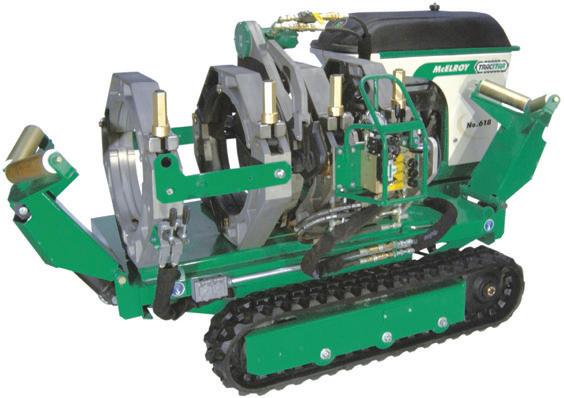

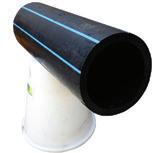

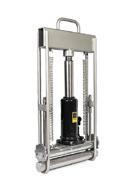


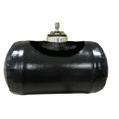

1300 794 096 sales@psssa.com.au www.psssa.com.au Your go-to supplier for all things piping
Pipe Handling
Butt Fusion Poly Welders
Pipe tools, equipment and welding for the water, gas and construction industries. Give the PSSS team a call – you won’t be disappointed.
Pipe Protection
HDPE Tooling
FOR BOTH SALE AND RENTAL
Hot Tapping and Line Stopping
What to look for
IN A MID-RANGE PROFESSIONAL LOCATOR
By Anthony Johnstone, Sales Director, Access Detection
Although this article is specific to the release of the new SnapTRACK PRO you can also use it as a guide to shopping for any brand of locator on the market.
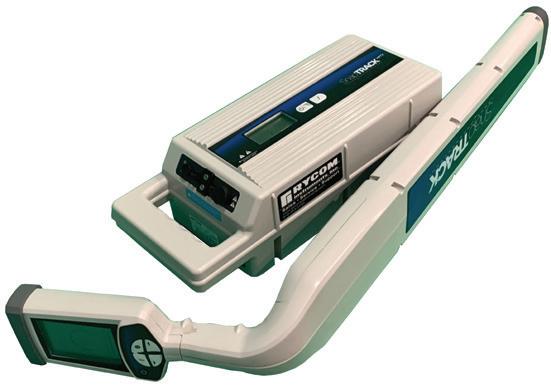
While teaching the NULCA Australia professional locator course, I have had the unique opportunity to compare all the different brands of locators. In that time, I have found one defining thing about most locators on the market. It is not the brand or price of the locator that makes it a great machine, but the calibre of the operator behind the locator. Training is a key part of this.
When you purchase a SnapTRACK PRO, we offer a standard half day training course, invaluable for new users wishing to become familiar with the locator. We will also introduce new courses specifically for the SnapTRACK PRO.
Our first course will be a one-day Introduction to Professional Locating, that will focus on practical locator skills, helping operators get to grips with the locating process and teaching them how to get the most from SnapTRACK PRO.
By the end of the year, we will also introduce our Advanced Locating Course for customers who have completed our introductory course. This course will teach advanced locating techniques in direct connection, as well as clamping and transmitter induction techniques, providing invaluable knowledge for operators building their experience.
The new SnapTRACK PRO offers the locator operator a versatile machine that is both Telstra & DBYD compliant. It is in the sweet spot in performance vs price for any level of operator. Whether it be water, telco, power, gas, council asset owners or locator contractors, the SnapTRACK PRO offers real value for money.
This versatility allows you to set up the receiver to be the most basic of locators. It is ideal for new operators who only
require the use of a peak mode or the left-right guidance mode and automatic gain.
Standard real-time depth and current measurement show automatically when a signal is detected. These features make it an ideal choice for those basic locations in non-congested areas, without overloading a new operator with multiple features and functions.
As the operator gains more experience or completes further training, they can then activate extra modes. Adding peak and null modes assist in the detection of distorted signals, while broad peak mode allows for deeper or weaker signal detection – you can also enable sonde mode if using a sonde or sewer camera.
The SnapTRACK PRO allows over nine additional frequencies through a wide range of low, medium and high-frequency bands – all done by the program mode within the machine.
Along with all these features, the SnapTRACK PRO 5W, high-powered transmitter model comes with high-capacity, lithium-ion batteries as standard in both the receiver and transmitter. The standard transmitter display gives vital information on signal quality and type of connection method.
Access Detection will be offering some great introductory prices on the SnapTRACK PRO, along with the introduction of the new ClampMitter Version 2.0.
Visit www.accessdetection.com.au for further information on the SnapTRACK PRO and ClampMitter Version 2.0.
UTILITY • AUGUST 2020 WWW.UTILITYMAGAZINE.COM.AU TRENCHLESS TECHNOLOGY | Utility Partner Solutions 80
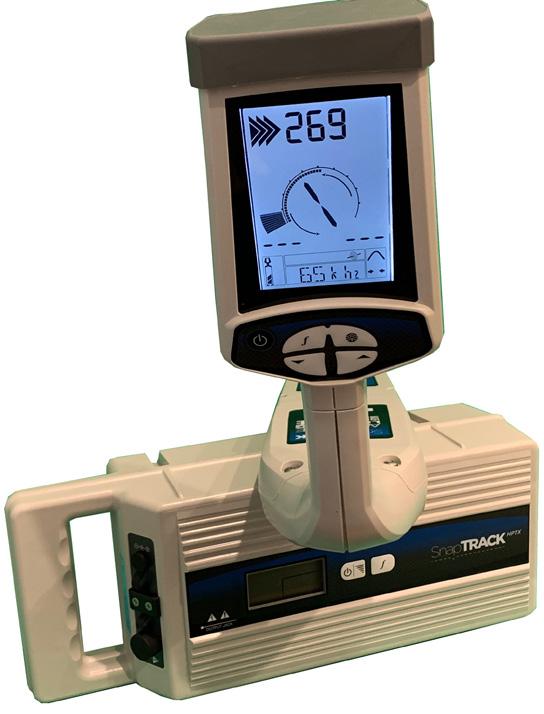



Version 2.0
!"#$2(6,$67$#(/6(##)#3$46,"$,")##$"6/"-.$'%&%9-#$6(32',68#$ 0)#12#('6#7$'+**+(-.$%8%6-%9-#$+($*+7,$-+'%,+)7$0)+*$ %$463#$)%(/#$+0$*%(20%',2)#)75$I2,,6(/$,"#$'+)3$3+#7(H,$ *#%($.+2$"%8#$,+$27#$%$3600#)#(,$9)%(3$+0$-+'%,+)5$ ,26##.>6#?8#*$%#+
CLAMPMITTERTM !"67$2(6,$67$-#77$,"%($+(#$&+2(3$%(3$)#%3.$ 0+)$%',6+(J$!"#)#$67$(+$(##3$,+$4+)).$%9+2,$"%2-6(/$,"%,$ @)B"'$(.3.4%12(-#%12( @8(.(2#.$)6C =+)$%33#3$7%0#,.K$*+)#$'+(8#(6#('#$%(3$6(')#%7#3$ &)+32',686,.K$'2,$,"#$'+)35$!"#
9#$2'61#':;#.<'((#6=
,-).!%/#+ !"#$%!&'
@#;;.A"".9#B)(#
0%12.3.4)-.5)-#6.78("8(+ >+$02*9-6(/$0+)$*+)#$7&%)#$'#--7$,+$?##&$.+2)$-+'%,#7$ )+--6(/5$!"# CLAMPMITTERTM67$'"%)/#3$86%$@AB$'+)3$C46,"$ %$4"+&&6(/$DE$"+2)7$+0$'+(,6(2+27$27#$+($%$02--$'"%)/#FG5$ ;(3$,"#)#H7$(+$*#77.$4%--$%(3$'%)$'"%)/#)7$0%--6(/$+2,$+0$ .+2)$9%/5
;3<27,%9-#$&+4#)$7#,,6(/7$%--+4$0+)$,"#$<27,$,"#$)6/",$ %*+2(,$+0$76/(%-$,+$9#$%&&-6#35$=+)$7"+),$)2(7$6($ '+(/#7,#3$%)#%7$,"#$-+4$&+4#)$'%($&)#8#(,$9-##3$+8#)5$ !"#$"6/"$&+4#)$7#,,6(/$46--$-6/",$2&$,"#$*+7,$7,299+)($ %(3$)#767,68#$'6)'26,75
!"#$%&%$'(%)*+

3+4(-+%3$%,$(+$'+7,$0)+*:$
CLAMPMITTERTM 67$%8%6-%9-#$0+)$
!"#$%&&$'%($)#*+,#-.$'"%(/#$0)#12#('.$%(3$&+4#)$


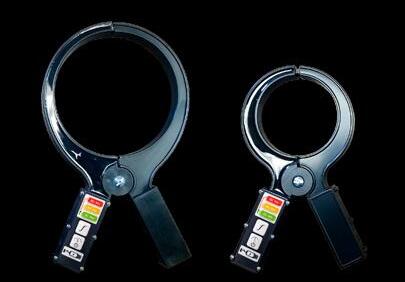
!"#$%&'()*+$#,-#(.'#/*012#3*45*66666666666
!"#$%&'()*+$#,-#(.'#/*012#3*E5*66666666666
Z'X#(/'1(/5
CLAMPMITTERTM 67$%$7#-0L '+(,%6(#3K$7,%(3L%-+(#K$$6(32',68#$'+2&-#)5$ D'C#.E*.,2#.FG!GAG
!(#)%!&'
Z'X#(/'1(/5
7"8$%&'($)*+,-./$$$$$$012$334$33893$33 R(/'2#*Z'%X#&#$5
G1-(&$S*1T*!$')'(5*6666666666666666666666666666666666666666666666666666666666666 V('*N&%&#/ !"#$%&'($)*+,-./$$$$$$012$334$335!6$33 R(/'2#*Z'%X#&#$5
E%&&#$S*J'T#5*6666666666666666666666666666666666666666666666666666666 DU*91-$/*;.1(&'(-1-/*-/#AGM%$)'()*66666666666666666666666666666666666666666666666666666666666666 N&%(2%$2*VNE*/-""3S !"#$%&'()*W#X"#$%&-$#5
*66666666666666666666666666666666666666666
*666666666666666666666666666666666666666 B6?[*\*DF6@[*\*D6F[*;DU<XX*\*<>UXX*\*<6U.XA]#')M&5*6666666666666666666666666666666666666666666666666666666666666666666 F6@*3P/*;F67?<8)A
*6666666666666666666666666666666666666666666666666666 O#.M%$)#%P3#*J'QR1(*E%&&#$S
7789:*;7<=>?@9:A=*?B89:*;?B=B7?9:A*C*@<89:*;@<=7DB9:A
7789:*;7<=>?@9:A=*?B89:*;?B=B7?9:A*C*D7D89:*;D7D=F><9:A
!-&"-&*H1I#$*J#K#3/56*6*6*6*6*6*6*6*6*6*6*6*6*6*6*6*6*6*6*6*6*6*6*6*6*6*6*6*6*6*6*6 *6*6*6*6*6*6*6*6*6*6*6*6*6*6*6*6*6J1I*H1I#$*L*9')M*H1I#$* H1I#$*N1-$.#5
7789:*;7<=>?@9:A=*?B89:*;?B=B7?9:A*C*@789:*;@7=F>>9:A !"#$%&'()*+$#,-#(.'#/*012#3*G5*6666666666
*666666666666666666666666666666666666666666666666666666666U6<*R(.M#/*;DF?XXA
9351East59thStreet•Raytown,MO64133-3895,USA 800-851-7347
• 816-353-2100
• FAX 816-353-5050 rycom@rycominstruments.com•www.rycominstruments.com
QUY*+*&1*DUFY*+*;Q<FY*G*&1*?FY*GA
*666666666666666666666666666666666666666>6>B[*\*D76B[*\*D6F[*;D^>XX*\*7U7XX*\*<6U.XA
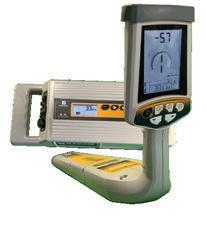
*666666666666666666666666666666666666666666666666666666666 ?6B*R(.M#/*;D?BXXA
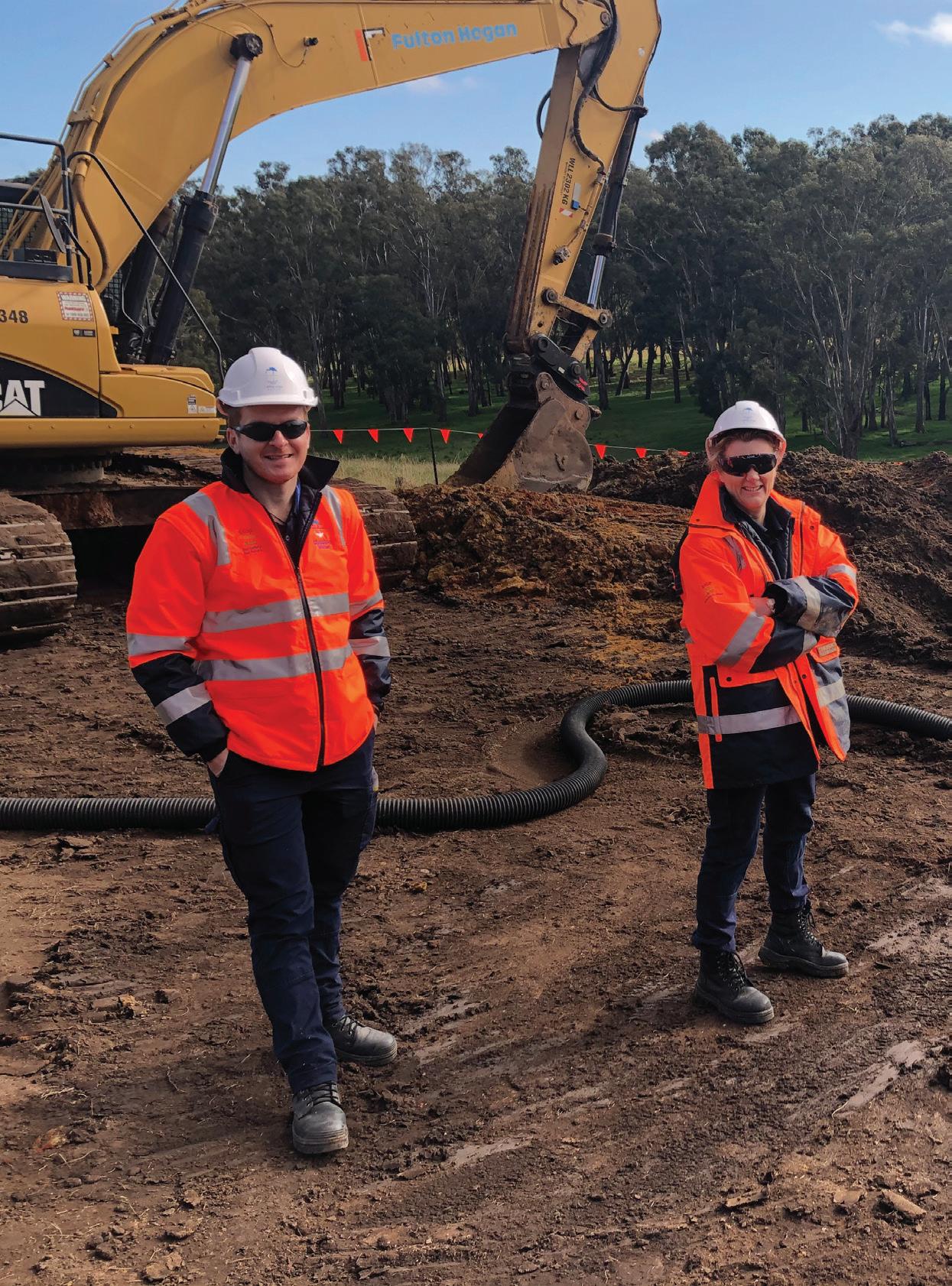
TRENCHLESS TECHNOLOGY
ASSISTS MAJOR PIPELINE UPGRADE
UTILITY • AUGUST 2020 WWW.UTILITYMAGAZINE.COM.AU TRENCHLESS TECHNOLOGY 82
The Regional Outfall System was built back in the 1950s to transport wastewater from the Latrobe Valley down to Dutson Downs, East of Traralgon in Gippsland, Victoria, and it has continued to play a key role in the local economy.
Nic Moss, General Manager Assets at Gippsland Water, said that the ROS is one of Gippsland’s most important economic infrastructure assets.
“Every day, it transports around 35ML of treated wastewater from the Latrobe Valley to Dutson Downs through a combination of pipes, open channel and siphons,” Mr Moss said.
“The treated wastewater is made up of domestic and industrial wastewater from the Latrobe Valley and is treated at our Gippsland Water Factory, underpinning thousands of jobs including at Australian Paper’s Maryvale site.”
In 2014, VicRoads began construction of the duplication of the Princes Highway between Traralgon and Sale, installing a reinforced concrete sleeve to allow for the ROS to be re-routed through in the future.
The sleeve was laid adjacent to and parallel with the existing ROS pipeline where it crosses under the Princes Highway at Flynn.
Six years on, after assessing the condition of the existing pipe, Gippsland Water determined that the best course of action to ensure ongoing service was
to re-route the ROS pipe through the sleeve under the highway.
“The project involved the construction of the new pipe aboveground, pulling it through the sleeve and then connecting it to the existing ROS pipe at either end,” Mr Moss said.
“We used the sleeve already under the Princes Highway to minimise any disruptions to motorists as the highway is one of the main thoroughfares connecting East Gippsland with Melbourne.”
MANAGING CULTURAL AND ENVIRONMENTAL SENSITIVITIES
Mr Moss said that while he wouldn’t describe them as challenges, there are definitely complexities in managing environmental and Aboriginal values on many of the utility’s projects, including this one.
“Gippsland is well-known for its high conservation values and rich Aboriginal history. This means that infrastructure projects in our area have the potential to impact cultural sensitivity and significant ecological values,” Mr Moss said.
“For this project, there were known sites within the road reserve outside our construction area. We chose to complete a voluntary cultural heritage management plan to ensure no Aboriginal heritage was harmed during construction.
“Cultural heritage artefacts were found within the construction footprint, reinforcing the importance of assessing risks early in the project planning phase and not only considering cultural heritage in mapped areas of sensitivity.
“There was no way to avoid impact as we were constrained because of the location of the existing asset we were connecting to, so we worked with the Traditional Owners to complete a salvage of the artefacts prior to the work being tendered, which have been returned to country.
“We are fortunate to be able to partner with Traditional Owners on our projects and incorporate their values into the work that we do.”
Contractor Fulton Hogan undertook the work, which commenced midMarch 2020, and took approximately three months.
Mr Moss said that Gippsland Water and the local community will see several benefits as a result of this upgrade project.
“Ultimately, the upgrade will help to ensure the ROS can continue to support our local economy in the years ahead by improving its integrity,” Mr Moss said.
“It also has the added benefit of minimising the risk of potential disruptions to motorists on the Princes Highway that may otherwise occur in the event of maintenance to the ROS pipeline.”
Gippsland Water recently completed a $1 million upgrade to the Regional Outfall System (ROS) at Flynn, which will help to ensure wastewater service reliability for major industry, including Australian Paper’s Maryvale Mill, now and into the future.
UTILITY • AUGUST 2020 WWW.UTILITYMAGAZINE.COM.AU 83 TRENCHLESS TECHNOLOGY
MAKING A LASTING IMPACT UNDERGROUND
Pezzimenti Trenchless continues to be at the forefront of trenchless innovation in Australia, with the pipeline construction experts recently completing a complex and challenging sewer installation project alongside Adept Civil Group.
Pezzimenti Trenchless was engaged by Adept Civil Group to install 150m of 324mm OD GRP sewer pipe as part of sewer relocation works at St Kevins College in Toorak, Melbourne.
The project saw Pezzimenti Trenchless insert the pipe into two bores measuring 85m and 65m in length, working at a significant depth of 15m.
The deep shaft, which featured a 5m diameter steel caisson constructed by Adept Civil Group, added additional complexity to the challenging ground conditions.
Pezzimenti Trenchless had encountered very hard siltstone on other projects, so was confident that its stateof-the-art equipment and expertise in a range of trenchless construction methods would enable it to deliver the most efficient and effective solution.
It used its laser-guided microtunnelling system to ensure accurate alignment of the pipe, which was necessary to




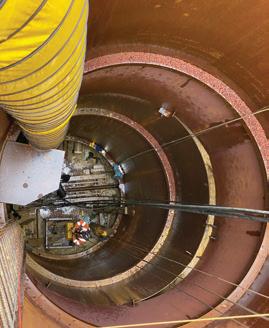
complete the project on the very flat grade of one in 200.
Not only did the 15m depth make the project difficult to set up, but it also created extra safety risks. For Pezzimenti Trenchless, safety is paramount and it always ensures its crews are well-versed in the particular hazards and safety considerations that different trenchless projects bring.
A flexible approach was also key, as the works had to be sensitive to school drop-off and pick-up times.
Trenchless technology pioneers since 1957, the Pezzimenti name has been synonymous with pipeline construction in Victoria for more than 60 years.
It was this unrivalled industry experience that made Pezzimenti Trenchless the first choice of sub-contractor for the project, along with its small set up footprint which was crucial for working in the college grounds.
For









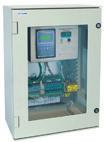




UTILITY • AUGUST 2020 WWW.UTILITYMAGAZINE.COM.AU NSW Ph: 02 8197 2825 WA Ph: 08 9201 0948 QLD Ph: 07 3333 2825 SA Ph: 03 9017 8225 Head Office: Unit 20, 51 Kalman Drv Boronia VIC 3155 Ph: 03 9017 8225 Fax: 03 9729 9604 www.ams-ic.com.au sales@ams-ic.com.au AMS Instrumentation & Calibration Pty Ltd Analytical Process Division Oxygen Analysers, Thermal Conductivity Analysers, NDIR Analysers, Multigas Analysers, OEM Analysers U.V Absorption Conductivity pH / ORP Colour Industrial Water Analysers and Liquid Analytical Products (pH, Conductivity, ORP, Dissolved Oxygen, etc) Oxygen Analysers, Relative Humidity Sensors and Meters, Dewpoint Measurement TRENCHLESS TECHNOLOGY | Utility Partner Solutions 84
more information,
www.pezztrenchless.com.au.
visit
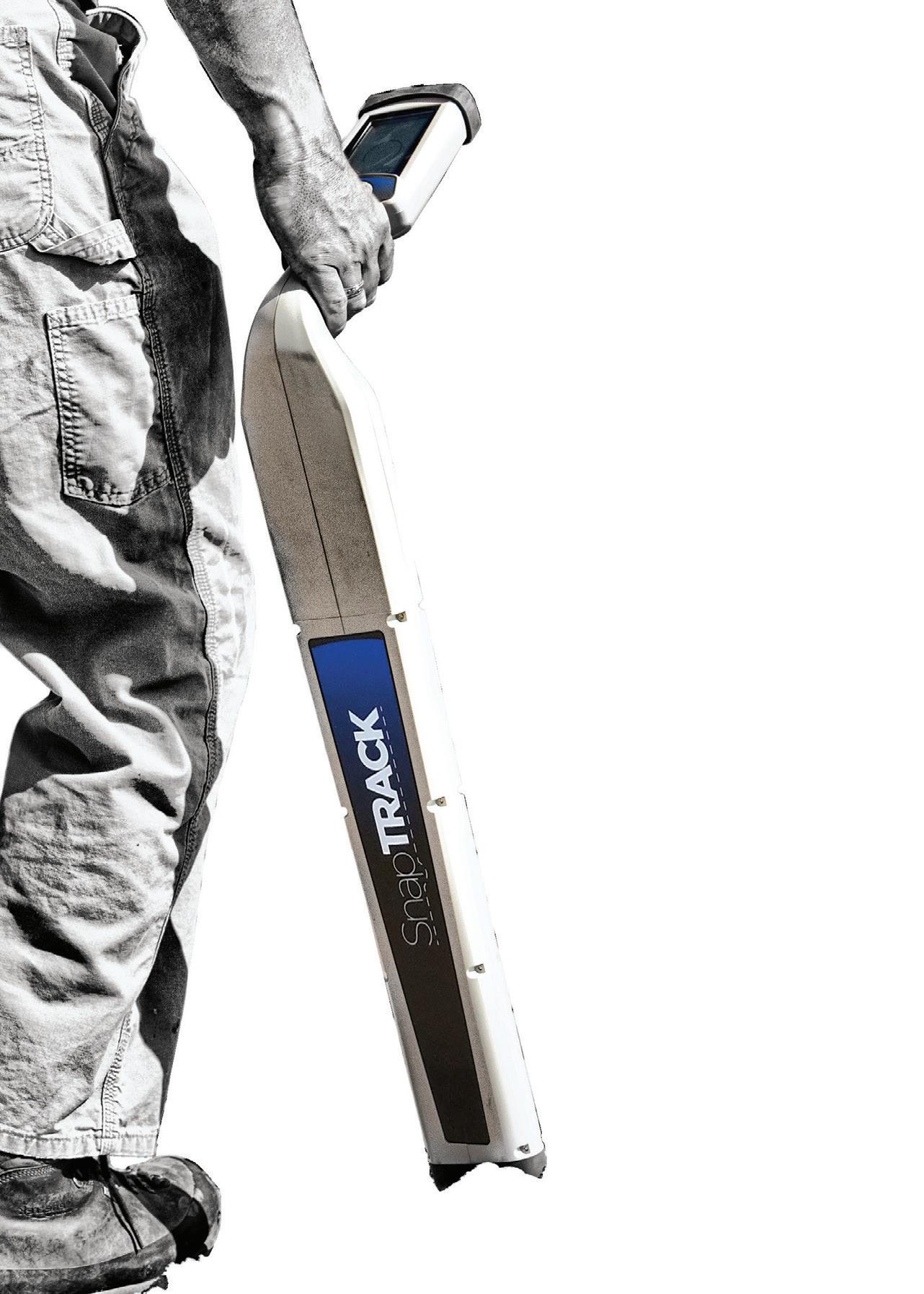
Simple, Accurate & Affordable PRECISION LOCATING SYSTEM
AUSTRALIAN-FIRST INNOVATION DELIVERS UNIQUE REPAIR SOLUTION FOR HUNTER WATER
When faced with the challenge of repairing a critical 900mm water main near Newcastle, NSW, Hunter Water had two options: proceed with a traditional dig and repair method which would significantly disrupt a busy arterial road, or find a new solution.
As a utility providing drinking water, wastewater, recycled water and some stormwater services to a population of almost 600,000 people in the Lower Hunter region of NSW, Hunter Water is increasingly looking for new, more innovative ways to service its customers.
For Hunter Water it was a clear choice – innovation over impact. In the case of the 900mm water main, the section needing repair was located under a busy thoroughfare, which presented a significant obstacle.
Instead of choosing a traditional dig and repair method, it proceeded with a trenchless ‘triple line’ solution using Primus Line technology. The project, which involved installing three flexible liners into the pipeline, was a first of its kind for the Australian water industry, having previously only been implemented in Europe.
Glen Robinson, Executive Manager Service Delivery for Customers, said that for Hunter Water, the decision to adopt an innovative approach has proven a win-win.
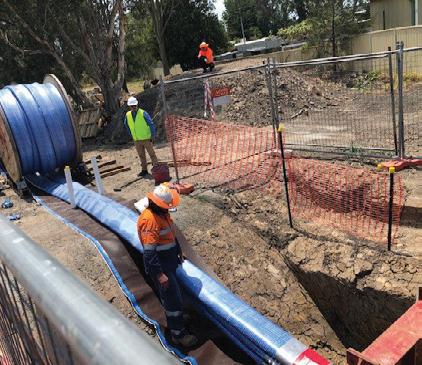

“The success of this project has been testament to the collaboration of all parties involved, both within the planning and operations teams at Hunter Water, and with our contract partners who helped us in the manufacturing and delivery,” Mr Robinson said.
“From extensive research and planning, right through to the implementation, this approach resulted in a great outcome for both Hunter Water in the repair of our water main, and for our customers and community in minimising disruption.”
By adopting this method, Hunter Water was able to negate its main obstacle.
“Our civil maintenance crews were able to access the pipe by digging two trenches, 3m deep by 7m long, on either side of the break location. This meant there was no need for significant road closures or traffic disruption to our community,” Mr Robinson said.
“We then enlisted the help of Interflow to install the Primus Line technology. This involved a week-long process of concurrently threading three flexible, reinforced liners into the water main from these trenches, and inflating them using compressed air.
“Using three smaller 450mm liners presented us with the best option for maximising the flow capacity of the pipeline, when compared with using a single 500mm liner, which would have granted us just 25 per cent of its use.
“The liners were then connected to the remaining pipeline with purposebuilt manifolds. We were able to work with a local manufacturer to design and make these end fittings, which were a core component of the project.
“All up, the construction phase took just eight weeks to complete. We couldn’t have done this job without the vast number of skilled and dedicated professionals who assisted in the supply and delivery. I’d like to extend a sincere thanks to everyone involved, both Hunter Water staff, as well as contractors and suppliers.
“This project has demonstrated that innovation can open the door to new, better ways of doing things. We certainly hope to take the lessons learned from this job and see what we can take from it for future projects.”
Hunter Water would like to extend a special thanks to:
•
•
•
•
UTILITY • AUGUST 2020 WWW.UTILITYMAGAZINE.COM.AU
R&R
Fabrications
SGM Fabrications
Ecoblast Pty Ltd
Brent and Warburton
Hunter Crane Trucks
Total Flow Control
National Pipeline Supplies TRENCHLESS TECHNOLOGY 86
•
•
•



Inner Layer: Media-specific based on PE or TPU Kevlar® Fabric: Seamless, woven aramid fibres
Outer Layer: Abrasion-resistant PE sheath

Trenchless rehabilitation of water mains and sewer rising mains
• Cost savings of up to 40% compared to sliplining
• Installation through multiple bends
• Installation speeds of up to 10 metres per minute
• Up to 2,500 metres per pull
• Small pits, minor installation footprint
• Maximum capacity (low wall thickness of 6 mm for PN 16)
• Increase operating pressure independently of host pipe
• AS/NZS 4020 certified
HOST PIPE START PIT DESTINATION PIT
Morethan30projects successfullyinstalledin Australia and New Zealand!
ible high-pressu Bendsofupto 45 degrees
w
Raedlinger
Level 6, 8
Street Sydney, NSW 2000 · Australia Phone: 07 318 15721 heiko.manzke@primusline.com www.primusline.com
Primus Line Pty Ltd Mr Heiko Manzke
Spring
Unique repair solution for Hunter Water Thank you for the perfect cooperation!
SPEED, POWER
DIRECTIONAL DRILLS
When it comes to the installation of underground conduit and pipes, equipment performance is a major factor in achieving a successful outcome, especially in urban or built-up environments. Bulky obstacles and narrow job sites are just some of the common challenges facing contractors, so for directional drilling experts, DirectBor, reliability, efficiency and pinpoint accuracy are vital features it looks for when choosing equipment for projects.

TRENCHLESS TECHNOLOGY | Utility Partner Solutions
88 UTILITY • AUGUST 2020 WWW.UTILITYMAGAZINE.COM.AU
AND SILENCE:
WITH A DIFFERENCE
Servicing Victoria and Australia-wide, DirectBor are leaders in directional drilling and specialise in small to large-scale projects. At full capacity DirectBor has just over 50 employees and over 100 pieces of plant and equipment in its fleets.
Aaron Finch, Director at DirectBor, said the company is always looking for the latest technology to help them succeed, and recently decided to purchase a new horizontal directional drill for the business. Initially trialling a competitor’s drill, Mr Finch realised that it was not the right fit for the company’s needs and looked into an alternative.
FINDING THE RIGHT DRILL
Mr Finch said that initially DirectBor used a competitor’s drills until purchasing a D40x55 S3 Horizontal Directional Drill from Vermeer in 2019. He said that once he saw the Vermeer drill in action, he was impressed with the technology incorporated into the drill, as well as the ease of operation, and knew it was ideal for the company’s fleet.
With the successful performance of the D40x55 on several projects, Mr Finch said he liked it so much that DirectBor decided to trade their other drill for another one of Vermeer’s products, the new D23x30 S3 Horizontal Directional Drill.
“We heard great reports about the D23x30 S3 from the testing they did in America, so we thought we’d give it a go,” Mr Finch said. “It’s an incredible drill.”
With a narrow and low profile footprint, the D23x30 S3 is ideal for compact commercial or urban job sites. While compact, it has high speed and power capabilities, featuring a carriage speed of 62.8m per minute, 219rpm rotational speed, and 24,000lbs of thrust and pull back, all fuelled by a 100 horsepower Deutz engine.
Mr Finch said that some of the benefits DirectBor has already seen with the D23x30 drill include time efficiency and steerability with the rod pulls.
“We just finished a 70m shot of 4x140s in Taree. The project involves a lot of assets to duck and weave around, but the guys completed it in five days thanks to the D23x30.”
In addition to speed and power, the D23x30 is also incredibly quiet, featuring a 99 dB(A) guaranteed sound power level, meaning that it has minimal impact on local businesses and neighbours around worksites.
“It’s very quiet, so we don’t get any complaints from residents when it’s revving,” Mr Finch said.
EXCEPTIONAL CUSTOMER SERVICE
DirectBor has been a long-term customer of Vermeer, having already acquired a HDD locator, a D36X50 drill, a VSK100XT2200 Vac Truck, and a D40X55 DR. Mr Finch said that the exceptional customer service and after-sales care that comes with every piece of equipment makes working with Vermeer easy and hassle-free.
Mr Finch said that the timely customer service and support is a major factor in continuing to choose Vermeer products over others.
“If I’ve got a question or concern, they’re on to it straightaway, there’s no real lead time for anything,” Mr Finch said.
“Their spare parts are absolutely amazing. They’ve invested in their own company building [the Vermeer Equipment Holdings dealership] in Derrimut, so the majority of their parts are there.”
Mr Finch said he also loves the advice that is available anytime, and he speaks with someone from Vermeer every few weeks to touch base.
“Vermeer actually keeps in touch after sales, they don’t just give you the drill and say, ‘There you go, we’ll talk to you when you want another one’,” Mr Finch said.
“It doesn’t matter who you ring up, if they don’t have the answer they’ll go to someone that can get you the answer at that time.”
Mr Finch said the team at DirectBor are fully on board with the new equipment and that the operators even fought over who got to take the new drills out.
“Now we’ve replaced the majority of our drill rigs with the Vermeer drills,” he said.
Utility Partner Solutions | TRENCHLESS TECHNOLOGY
POWER
UTILITY • AUGUST 2020 WWW.UTILITYMAGAZINE.COM.AU 89
MICROTUNNELLING
What makes the AXIS laser guided microtunnelling system ideal for installing pipelines in urban areas with limited space?
Installing pipelines in urban areas presents a number of challenges, including above ground infrastructure which can limit the space available for equipment and materials. While executing these installations is the same as for open areas, selecting the right construction method and a contractor with equipment that has a modular set up –such as the AXIS laser guided microtunnelling system – will ensure site footprint is kept to a minimum, disturbance to the surrounding infrastructure and community is reduced, and there is less chance of problems arising.
SELECTING THE METHOD
Traditional open cut methods of pipeline installation are inappropriate for urban areas where there is often limited space or a small site footprint is required as the length of the pipeline – which may include roads and footpaths – needs to be blocked off for a period of time to allow excavation, installation and restoration works to take place. Open cut installations can be very disruptive to the community, and cannot be used in projects where the pipeline needs to cross roads or rail tracks.
While horizontal directional drilling (HDD) can be used as a trenchless alternative to open cut methods, it can be also problematic, especially residential areas or where a small site footprint is required. This is because it uses a surface launched technique, with the machine needing to sit back from the starting point and enough room at the exit point as it requires the pipe being used to be laid out in a continuous length – a problem if these areas encroach on public property.
Microtunnelling does not have these limitations. As it is a
pit-launched technique, it only requires an entry and exit shaft to be excavated, minimising road closures and community disruption. This also mitigates the issue of the set up or exit areas falling on private property. The AXIS laser guided microtunnelling system has additional benefits over other machines as it uses the vacuum excavation which helps to maintain a clean and compact site. Rather than piles of spoil and the multiple trucks and loaders often required with other methods for its management, the spoil is contained in a vacuum tank that can transport it to a different site for disposal, reducing the amount of mess or equipment at the site.
A MODULAR SET UP
A major benefit of the AXIS laser guided microtunnelling system is that unlike other machines on the market it has a flexible, modular design, allowing the number of trucks and trailer setup to be configured in a number of ways for jobsite footprint conditions and to accommodate customer preference.
For example, in a job completed in Maribyrnong in Melbourne’s inner west Edge Underground needed to install a sewer pipeline for a high-rise development in a very tight access area in the middle of a road and close to tram tracks. Edge Underground was required to work between two lanes in a very slow road reserve, and it wasn’t able to load excavated material into trucks to take away and bring back for reinstatement. The modular design of the AXIS laser guided microtunnelling system allowed the company to take on this job when no other contractor was able to as it was able to tailor the setup to suit site conditions and keep its footprint to a minimum.
ABOUT STUART HARRISON
Global microtunnelling pioneer Stuart Harrison is the Managing Director of Edge Underground, where he specialises in on-grade microtunnelling installations with millimetre accuracy.
Stuart is also the inventor of the Vermeer AXIS Guided Boring system, and he is constantly working to improve the effectiveness of this and other trenchless systems used in the installation of gravity sewers.
To discuss your next microtunnelling installation, contact Stuart on 1300 JACKED or at stuart@edgeunderground.co
90 UTILITY • AUGUST 2020 WWW.UTILITYMAGAZINE.COM.AU
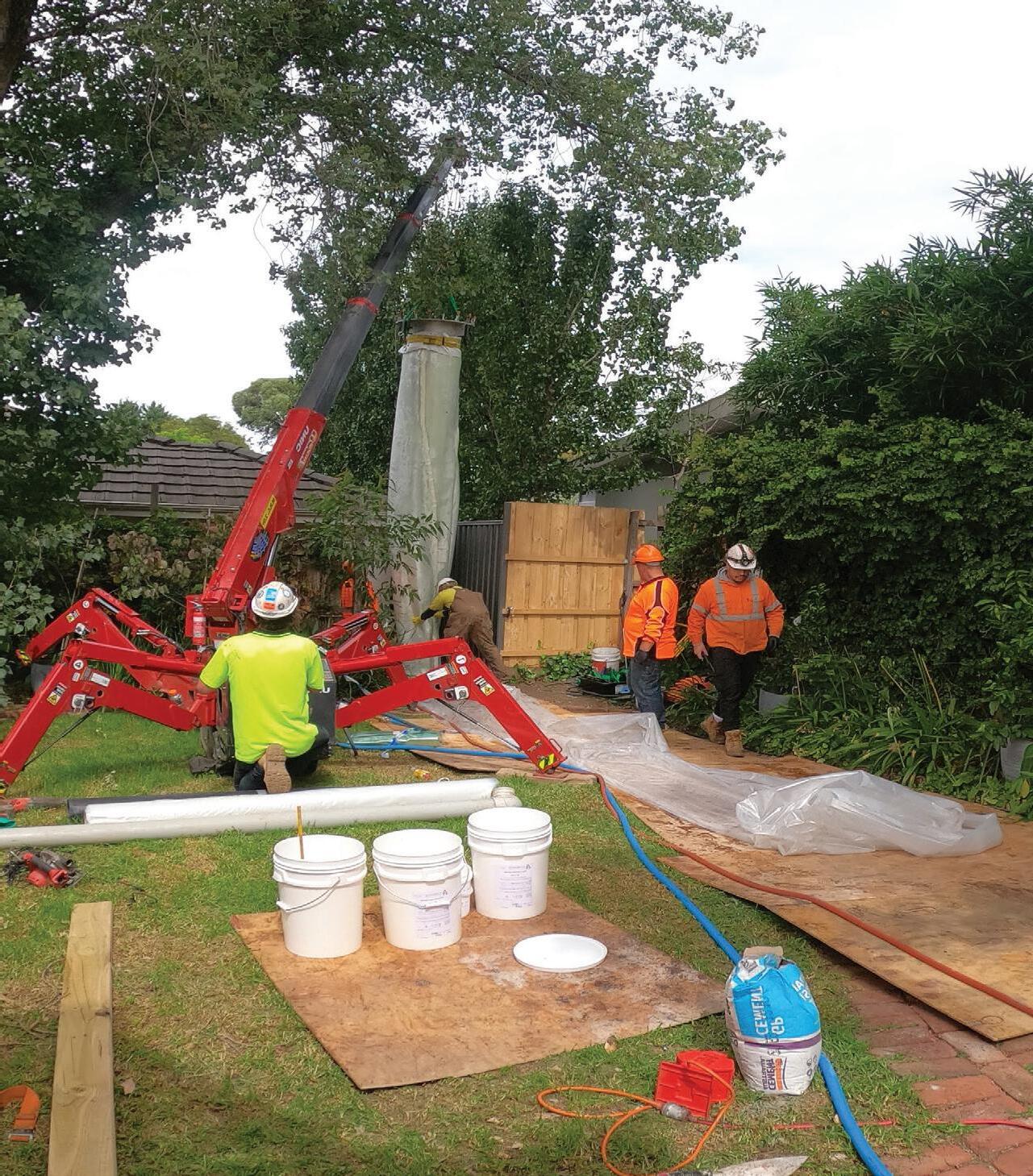



HOW DO YOU STRUCTURALLY RELINE A MANHOLE IN THE CORNER OF A BACKYARD? With Alternative Lining Technologies Cured in Place Manhole...CIPMTM BEFORE AFTER Stop infiltration Stop H�S corrosion Structurally rehabilitate Manholes Pump wells Pits Suitable for: DELIVERING TOGETHER ABERGELDIE COMPLEX INFRASTRUCTURE CONTACT Cameron Neales, Delivery Manager, 0417 824 581, cneales@abergeldie.com ALTERNATIVE LINING TECHNOLOGIES CONTACT Bruce Keys, General Manager, 0418 542 120, bkeys@altliner.com www.altliner.com.au
NOVEMBER 2020
FEATURES
RENEWABLES
CORROSION
DISASTER MANAGEMENT
RETAIL, BILLING & CRM
SPECIAL FOCUS
TRANSFORMERS & SUBSTATIONS
PIPELINE INTEGRITY & LEAK DETECTION DAMS LAND ACCESS
FEBRUARY
MAJOR FEATURES
BIG DATA
CYBER SECURITY SOLAR
SYDNEY WATER
SPECIAL FOCUS
MAPPING, GIS & SURVEYING
UTILITY LOCATION
SEWER REHABILITATION
EMBEDDED NETWORKS
DISTRIBUTED GENERATION
CUSTOMER EXPERIENCE
MAY 2021
AUGUST 2021
UTILITY • AUGUST 2020 WWW.UTILITYMAGAZINE.COM.AU SECTION 92 EDITORIAL SCHEDULE Advertisers’ index Access Detection 81 Agru Australia 13 Alternative Lining Technologies 91 AMS Instrumentation & Calibration 84 Aqseptence Group 31 Bintech Systems 15 Caldertech Australia 56 Chesterton 36 Clean TeQ Aromatrix 9 Critical Infrastructure Summit 2020 IBC Edge Underground 55 Envirosonic Algae Control Systems 27 Filtec 26 Harcor 8 InEight 70 Intelepower 57 Interflow 39 KRE Engineering Services 45 kwik-ZIP 67 Lanco Group 10 Madison Technologies 7 McRobert Contracting Services 75 Milwaukee Tools 40–41 PEAK AI OBC Pezzimenti Trenchless 84 Piping Specialty Supply Service 79 Polymaster 51 Programmed Facility Management 35 Projex Group 70 Raedlinger Primus Line 87 Rycom Instruments 85 SICK 68 Steel Mains IFC SUEZ 32–33 Taggle Systems 71 True Water Australia 37 VEGA Australia 21 Veolia Water Technologies (Australia) 11 Vermeer 5 Viega 69 WIOA Virtual Water Conference and Exhibition 25
MAJOR FEATURES WATER MANAGEMENT DEMAND MANAGEMENT ENERGY NETWORKS SUSTAINABILITY SPECIAL FOCUS INSPECTION, CCTV & CONDITION ASSESSMENT MOBILITY VEGETATION MANAGEMENT ENERGY STORAGE FUTURE FUELS EQUIPMENT & MACHINERY SMART METERS MICROTUNNELLING SALES DEADLINE 26 MARCH OZWATER AUSTRALIAN ENERGY STORAGE CONFERENCE AND EXHIBITION WIOA QLD EVENT DISTRIBUTION (TBC) EVENT DISTRIBUTION (TBC) EVENT DISTRIBUTION (TBC)
MAJOR FEATURES WATER OPERATIONS AND TREATMENT STORMWATER ASSET MANAGEMENT SMART GRIDS SPECIAL FOCUS GAS PIPELINES TRENCHLESS TECHNOLOGY IoT AND SCADA IRRIGATION WASTE MANAGEMENT EQUIPMENT & MACHINERY PUMPS, VALVES & FILTERS PIPE & CONDUIT MAJOR
SAFETY EQUIPMENT & MACHINERY HORIZONTAL DIRECTIONAL DRILLING (HDD) SALES DEADLINE 18 JUNE SALES DEADLINE 11 SEPTEMBER 2020
EQUIPMENT & MACHINERY DRONES SWITCHGEAR
2021 SALES DEADLINE 11 DECEMBER 2020 EVENT DISTRIBUTION (TBC) WIOA NSW DIGITAL UTILITIES 2021 AUSTRALIAN ENERGY WEEK ALL ENERGY 2020 WASTE EXPO AUSTRALIA WIOA VIC


Australia’s premier event for the whole infrastructure lifecycle – construction, asset management, and disaster resilience.
Critical Infrastructure: State of play
A thought-leading session on the biggest issues currently facing Australia’s critical infrastructure
The Future of Infrastructure
A look at what’s next for the industry – skills and training, funding/economic predictions, and more
Summit highlights
• Asset Management training workshop (limited spots available)
• Online networking sessions
• Expert speakers and project case studies
• Industry panels and interactive Q&A sessions
IS MOVING
assetmanagement FOR CRITICAL INFRASTRUCTURE Disaster Management
ONLINE!
for Critical
REGISTER FOR FREE AT critical-infrastructure.com.au
Construct 2020 Asset Management
Infrastructure Disaster Management
SEPTEMBER 2 SEPTEMBER 9 SEPTEMBER 16 SEPTEMBER 23 SEPTEMBER 30
TO ATTEND 2PM EVERY WEDNESDAY IN SEPTEMBER 5
All 5 events are FREE
VIRTUAL CONFERENCES

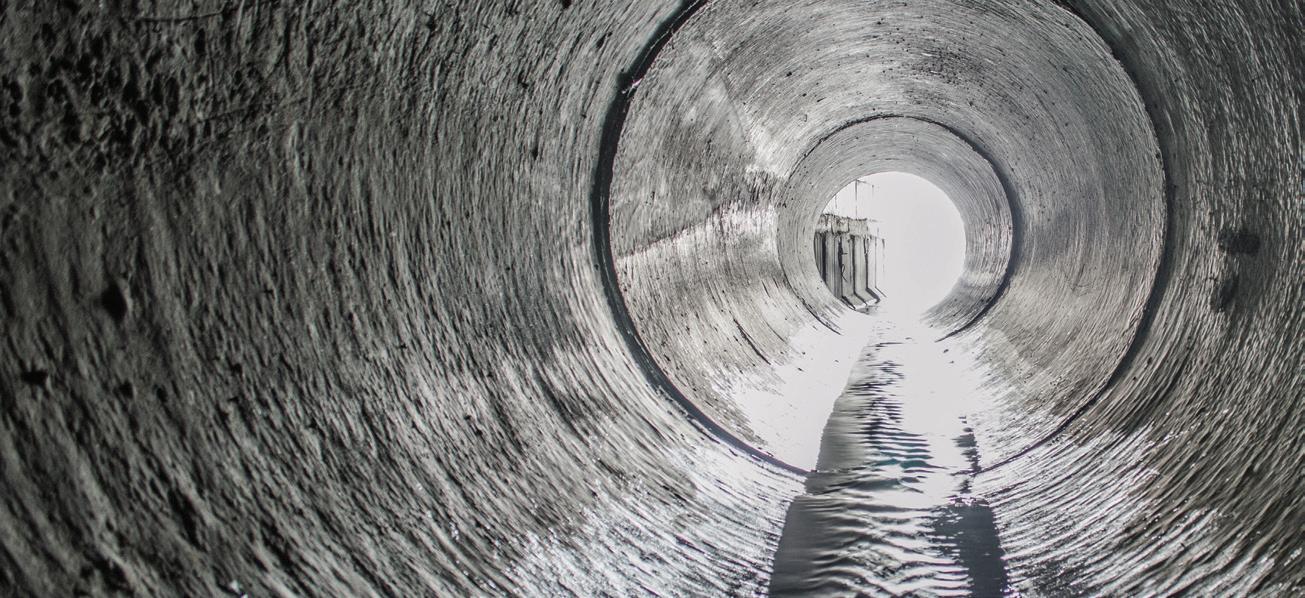
ENGINEERING AND CONSTRUCTION INDUSTRY
PEAK AI FPA LEVERAGING AI TO AUTOMATE DEFECT DETECTION


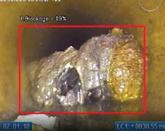
HOW PIPE AI WORKS TRAIN DETECT REPORT
Trains the model to identify defect classifications. Longitudinal Crack Blockage Fine Roots
WHAT CAN PIPE AI DO FOR ME?
Detect anomalies faster and fix infrastructure
sooner
Action insights more often
Streamline pipe asset management operations
More capacity for complex analytical tasks
Uses AI to review CCTV footage of pipes to identify cracks and anomalies.
Drafting and planning systems more accurately to achieve desired functions
Piping vibration, thermal and stress analysis
Sourcing more valuable engineering solutions
More thorough site inspections
Compliance with authority codes
Global application - applicable to any pipe material
Ability to apply expert classification and further train the model as the database builds
Concise classified defect report generated at completion of analysis
Generates a concise defect report to inform future maintenance plans or repair schedules.
Detect up to 15% more defects than a manual review

Contact us to find out how Pipe Ai can deliver better efficiencies within your organisation.
+61-7-3532
1300
enquiries@peakai.com.au
www.peakai.com.au
24/7 assessment















































































































































































































































